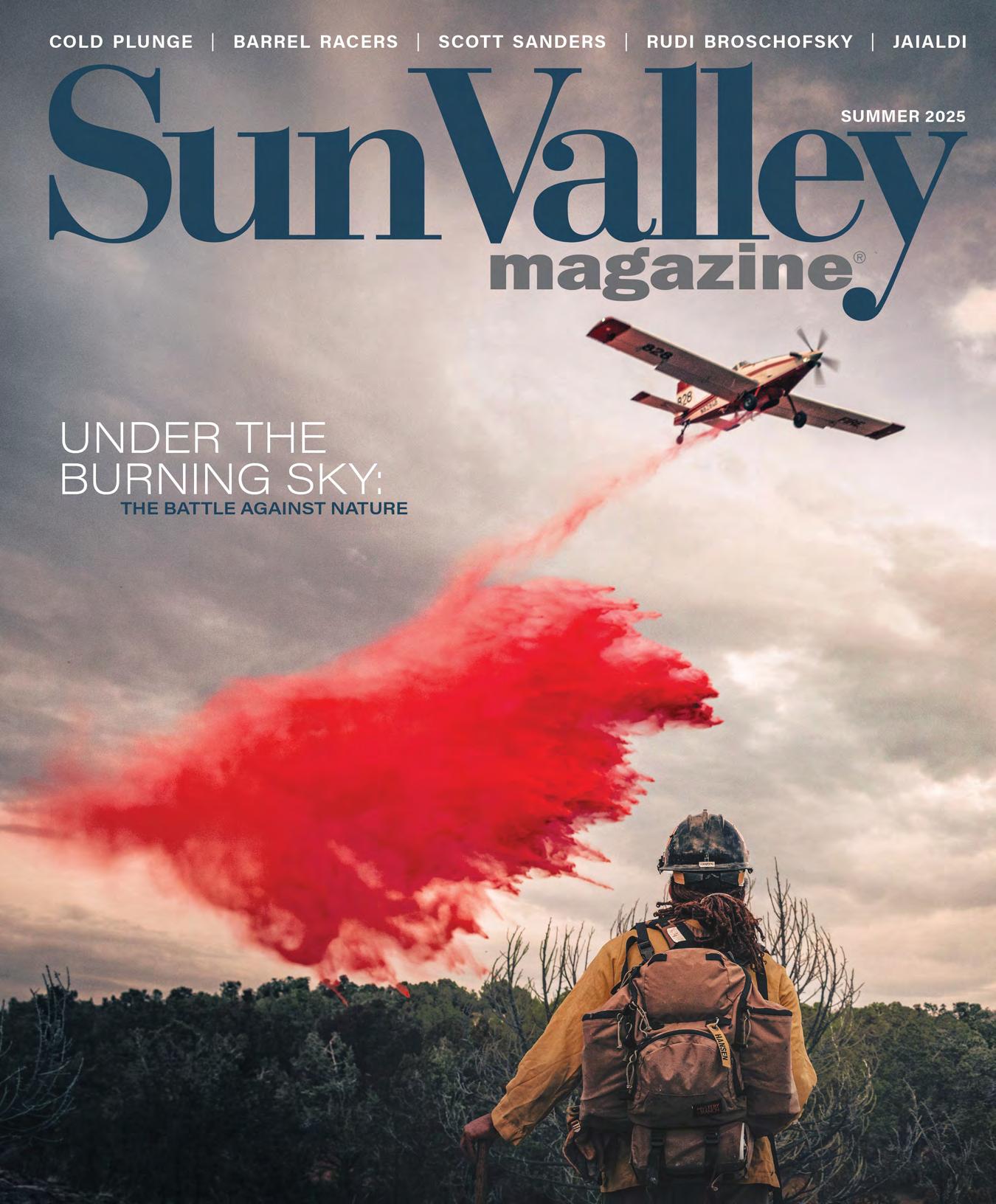
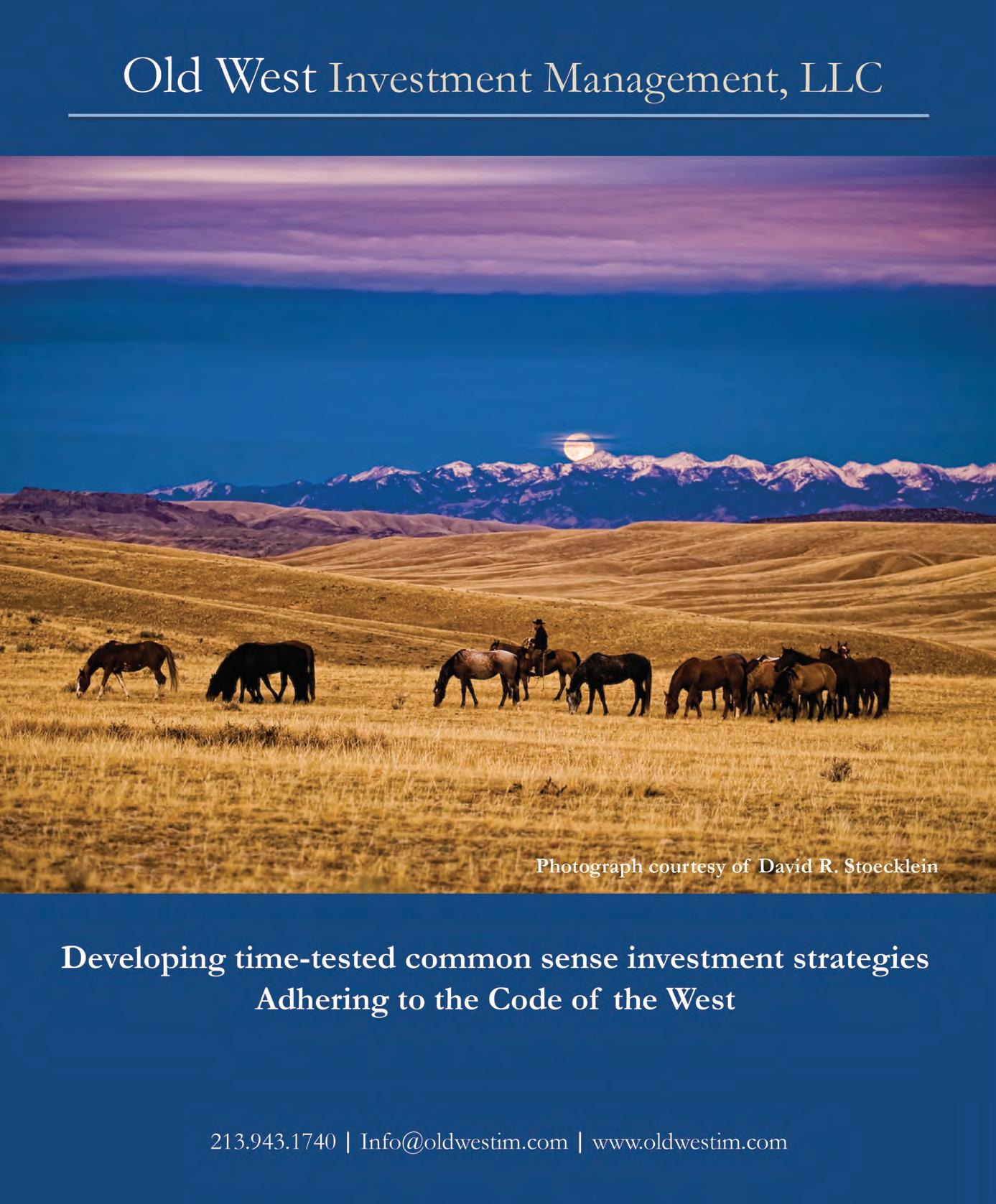



































































































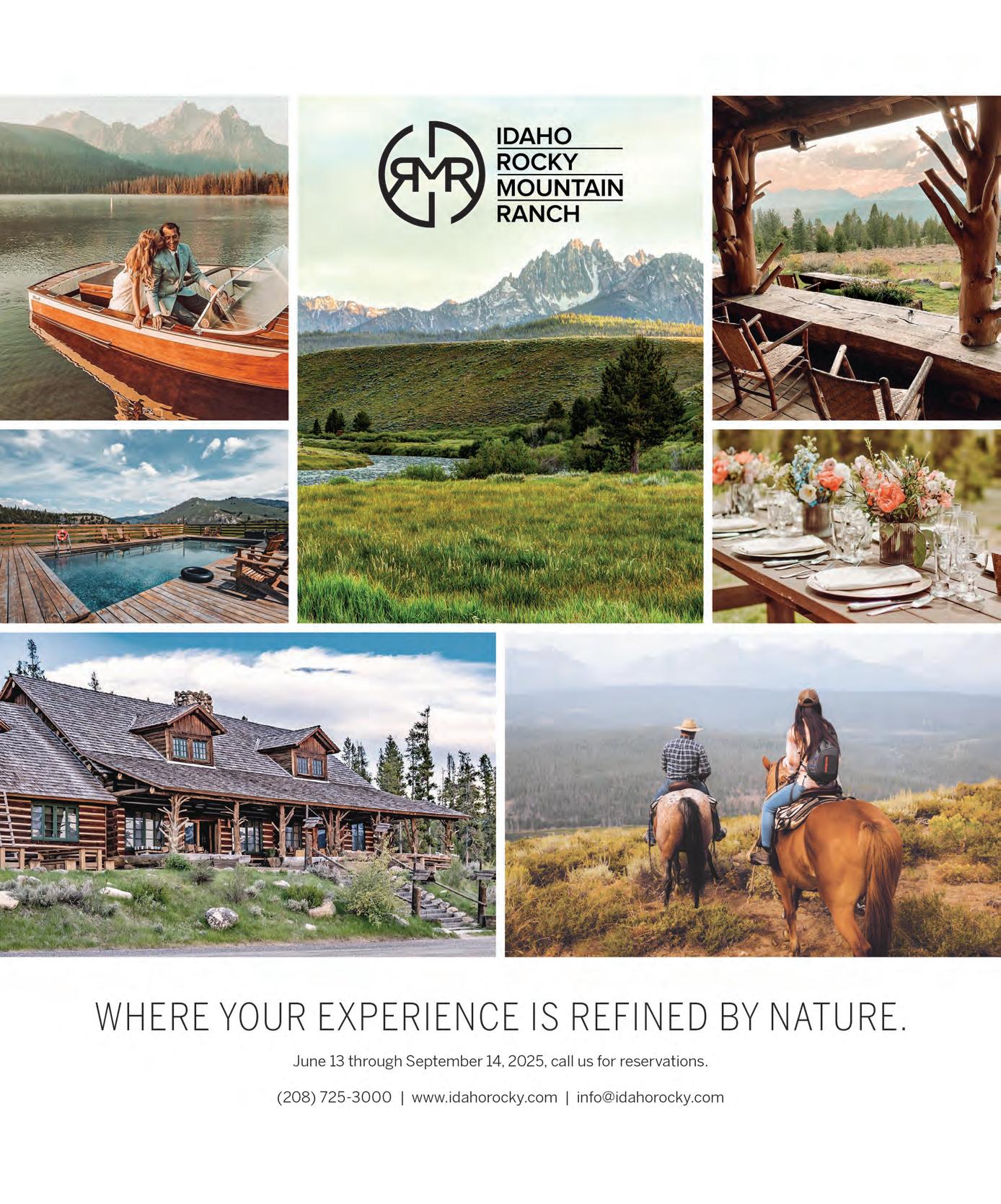

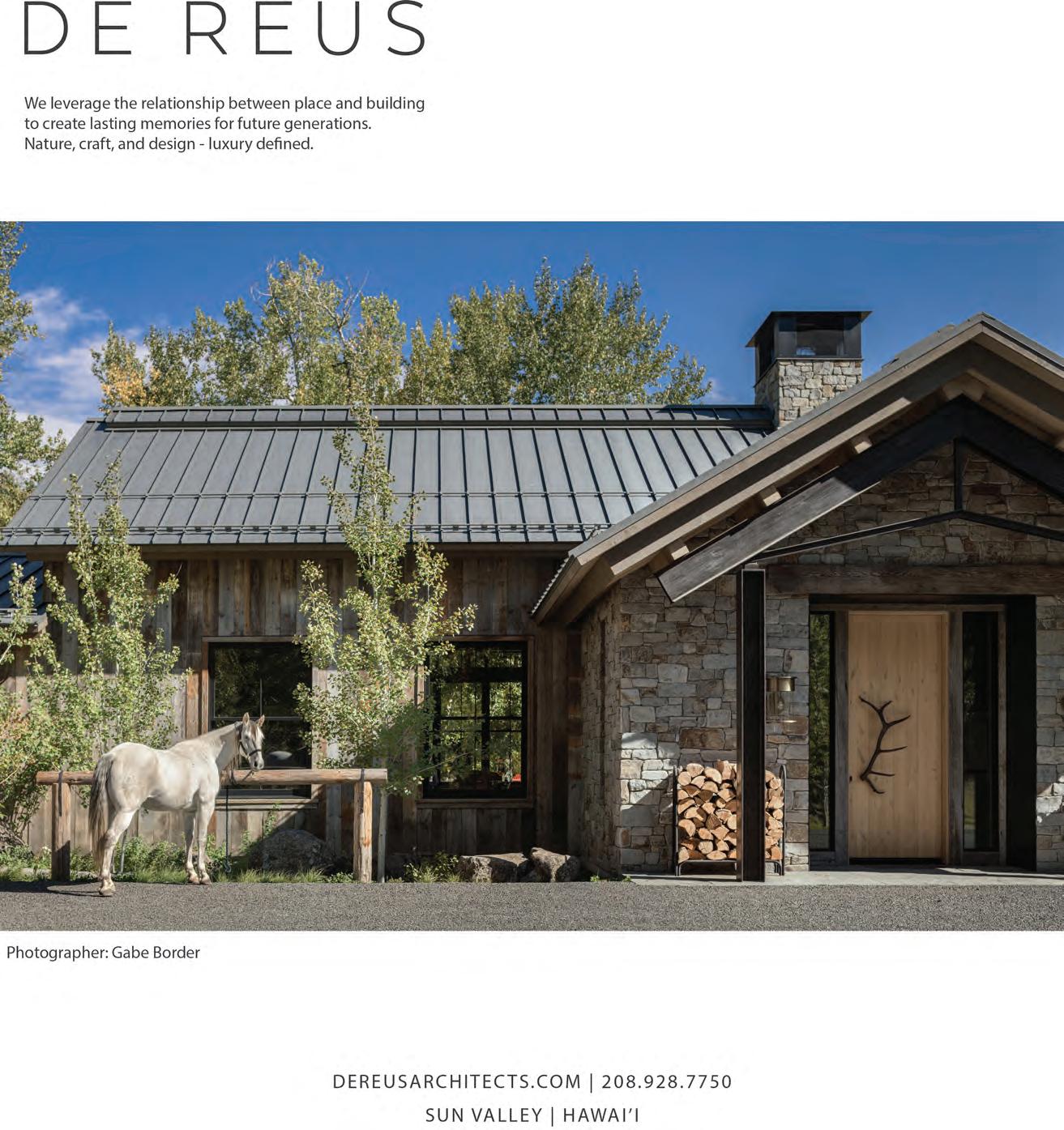












































































































A 365-acre enclave naturally embraced by the mountain-lake landscape of McCall, Idaho.


With only thirty-six homesites, ranging in size from five to twenty-one acres, Legacy Ranch is a rare find that is in high demand.
Homesite prices range from $400,000 – $1,375,000






Inquire today at whitetailclub.com/properties/legacy-ranch/ or call 877.6 34 .1725. at




With nearly tw o decades experience, Dr Morales specializes in personalized health analysis and w ellness plans to restore your body's foundational balance. Her passion lies in managing systemic inflammation w hich is the root cause of EVERY chronic illness She has improved the health and lives of so many w ith a thoughtful, client centered approach. Apply now for your consult. Working for you locally, available nationally whole body foundational wellness. focus.
chronic inflammatory disease states non-physical trauma induced brain injury complex multi-organ system disorders
neuro-degenerative disorders
adrenal fatigue
gut dysbiosis / leaky gut
advanced cardiovascular health autoimmune disorders
gut-brain-immune axis dysfunction






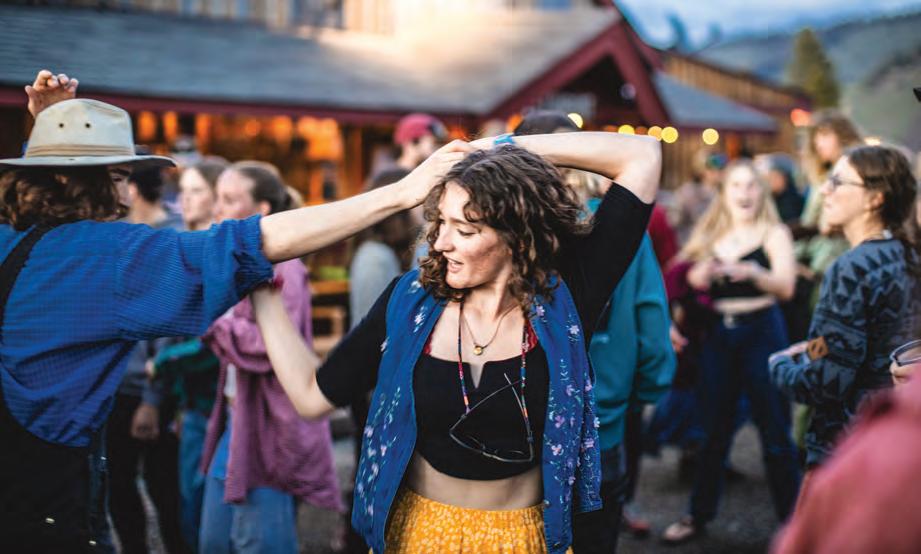







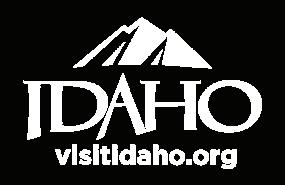


































Built to tackle the toughest terrain: summer by the lakeshore or winter in the mountains... the INEOS Grenadier Station Wagon & all-new Quartermaster are distinctive, capable and unrelenting. Sounds like your kind of vehicles. They’re true utilitarian 4X4s that can take you anywhere you want to go.














FALLING FROM THE SKY
The BLM Smokejumpers of the Great Basin
BUTCH CASSIDY AND THE SUNDANCE KID IN IDAHO
Outlaw Pals Leave their Mark
HAILEY HOT SPRINGS RESORT
Entertainment Center and Tourist
Attraction of the Late 1800s


SUMMER SOUNDTRACKS
Stanley’s Greatest Hits
E IS FOR EASY AND ECO-FRIENDLY
E-bikes are Here to Stay
JUST LIKE CHECKING OUT A LIBRARY BOOK
Hikin’ Buddies Program is on the Right Path
HEADING UPSTREAM
”Of Water,” an offshoot of The Salmon School at Gail Severn Gallery
THE ART OF PATIENCE
Finding the Beauty in the Process
BOOK IT TO SUN VALLEY
Sun Valley Writer’s Conference 2025
FEARLESS THEATER
The Spot’s 10th Anniversary

BASQUE-ING ON THE BLOCK
Jaialdi—Boise’s Basque Festival




















The Sun Valley Magazine website, at sunvalleymag.com, is user friendly and incorporates responsive design so that you get the same award-winning content on phones, tablets or desktop computers. On our site you will find all of our print stories, as well as a wealth of additional online content, including resource guides, videos and online features. Look for the best of Sun Valley life in our Arts , Food & Drink , Community, Health , Adventure , Home & Design , and Wedding sections. You can also enjoy digital editions of Sun Valley Magazine in our extensive archives and access all of our social media sites.




















To explore our magazine archives, dating all the way back to the Winter 1973/1974, visit sunvalleymag.com/magazine. On our digital magazine page, you can enjoy back issues of Sun Valley Magazine . Travel back in time to see what we were covering at the turn of the century (21st!) and beyond. Looking for an old article? Spend some time in our archives—an ongoing, living record of life in the Wood River Valley. Also check out our digital edition of TASTE of Sun Valley on the Food & Drink page!
JULY 3
JULY 4
COREY KENT
JEREMY MCCOMB
JEFF CROSBY BAND
JULY 3+4, 2025
RIVER RUN LODGE | SUN VALLEY, ID
ALL AGES | TICKETS AVAILABLE AT:





Perseverance, physical toughness, determination and grit—that unyielding resolve, forged not in ease, but in the face of great challenges— are all qualities that weave through the pages of this Summer issue of Sun Valley Magazine. It can be seen in the athleticism and determination of women barrel racers, an adrenalinefueled sport combining speed, precision and athleticism (“Chasing the Clock ” on page 104). The skill and teamwork required for horse and rider to safely round three barrels at breakneck speed requires endless hours of training, care, bonding, and physical challenge. It is a sport that is won by mere tenths of a second and requires a deep and trusting partnership between horse and rider, proving that grit is not always about pure talent, but is forged within the in-between moments, and defined by the choice to keep going when everything in you wants to stop.
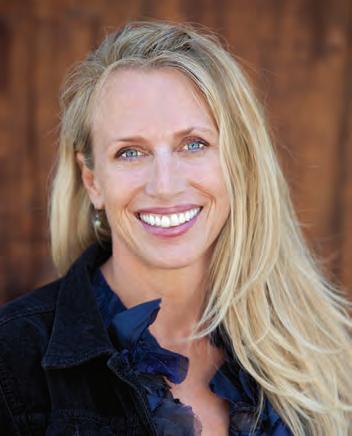
40). This story sheds light on the Bureau of Land Management’s (BLM’s) elite firefighting force—men and women who are trained right here in Idaho but deployed nationally, parachuting into dangerous and fiery conditions in remote and rugged terrain when called into action. As Caleb Ashby, public affairs officer for BLM Fire at the National Interagency Fire Center, states: the role is physically demanding, team-oriented and mission-focused.
These are the moments that truly help define us—not the easy ones, but the hard ones. In our fast-moving , results-driven world, we tend to celebrate the finish line and the top of the mountain. But the stories that often shape us most happen in the quiet, in the setback, when nothing seems to be going our way; but we keep showing up anyway. That is where character is formed, where community matters most.
Dedicated to the spirit of perseverance, the individuals featured in these stories prove that we are stronger when we rise together. Grit does not grow in isolation, but is nurtured in the presence of others who believe in us and lend their strength to ours. They include Conor Quinn and the team who gave new life to Chapter One Bookstore (“ Never Ending Story ” on page 52), and in the vision of artist Joseph Rossano (“ Swimming Upstream” on page 132), who is attempting to bring artists and scientists, viewers and academia together in his exhibition of mirrored, hand-blown glass sculptures representing wild salmon and their migrations worldwide— with a special installation, along with panelists and seminars, featured this August at Gail Severn Gallery.
Grit and determination are also qualities embodied in the Idaho-based smokejumpers (“Falling from the Sky ” on page
These qualities can also be seen in the wildland firefighters, first responders and incident commanders who must be trained and ready for anything nature delivers in the form of fuel, oxygen and heat—the chain reaction of fire that seems to be escalating in the West. Read about the research and the factors to consider in our special “Fire” story, exploring how modern wildfire and firefighting techniques, and even forest management, are changing in our Western landscape (“ The Era of Fire” on page 84).
As we celebrate this issue, we pay tribute to the doers, the dreamers, and the determined. Perseverance isn’t just about pushing through alone—it’s about doing what needs to be done, committing to the grind if needed, and leaning on one another in mutual support. Community isn’t just about proximity; it’s about shared purpose and collective resilience. There is grit in collective effort, too.
Let this be a call not just to admire grit and perseverance, but to cultivate it within ourselves. We hope these pages remind you of your own strength and encourage you to commit to showing up—for our own goals, for our communities, and for each other.
There is strength in togetherness and power in resilience. In fact, history might show that determination, perseverance and grit are truly essential components of life in the West.
Enjoy the journey.
Laurie Sammis publisher / editor-in-chief



RyAnn Deaville is the creative force behind Free Rein
Photography, a business born from grit, heart, and a deep love for the Western lifestyle. A single mom of three beautiful daughters and a former rodeo competitor herself, RyAnn knows the arena—and the families who fill it—inside and out. What started as a passion for capturing her own children’s moments quickly evolved into a thriving photography business across the great state of Idaho and the surrounding region.
Specializing in action-packed rodeo events, barrel racing, Western weddings, and candid lifestyle sessions, RyAnn’s work is known for its authenticity, emotion, and natural light.
Photos by RyAnn Deaville: “Chasing the Clock” page 104

Adam Tanous, managing editor of Sun Valley Magazine, moved to the Wood River Valley in 1992 to write, ski patrol and run rivers. Twenty-three years later he continues to enjoy all three afflictions, though not nearly as much as he enjoys raising his two children in such a remarkable part of the world Adam was educated at Williams College, Stanford University, and the University of Virginia, studying English literature, chemical engineering and fiction writing, respectively.
Stories by Adam Tanous: ”The Era of Fire” page 84

Patti Murphy is an awardwinning writer who has covered topics ranging from architecture to wildlife; crime to travel; food, history, pets, and more. After a 35-year career in non-profit, corporate and government public information, she became a full-time writer with her work appearing in publications including Sun Valley Magazine, Sun Valley Guide, Idaho Mountain Express, Idaho Statesman, Twin Falls TimesNews, New York Times, Oregon Coast Magazine, Northwest Travel Magazine, Boise Weekly, Idaho Business Review, and others. Patti comes from a family of journalists and now lives in Boise with her spouse and her rambunctious dogs.
Stories by Patti Murphy: “Chasing the Clock” page 104
JON C. HODGSON

Jon C. Hodgson is a Basque Jamaican-American photojournalist and co-author of Jaialdi: A Celebration of Basque Culture, created with journalist Nancy Zubiri. Over the past two decades, he has documented Jaialdi through thousands of photographs that reflect the heartbeat of Basque culture— its dance, sport, community, and pride. His work has been published internationally and exhibited at the Basque Museum and Cultural Center in Boise. Jon’s photography celebrates Basque heritage and contributes to its preservation. Through his lens, Jon promotes Basque culture, keeping it seen, remembered, and passed forward as a living legacy.
Photos by Jon C. Hodgson: “Basque-ing on the Block” page 156
in this issue
writers - Karen Bossick, Ben Bradley, Winslow Brokaw, Mark Dee, Carolyn French, Patti Murphy, John W. Lundin, Jonathan Mentzer, Hayden Seder, Cristy Sellas, Adam Tanous, Pamela Kleibrink-Thompson
photographers & illustrators - Alex Abols, Jenna Beckholtz, Carrie Bilbao, Austin Catlin, James Corbett, Andrew Cote, Patricia Courtney, RyAnn Deaville, Melanie Dunn, Clare Everson, Ray J. Gadd, Paul Hensel, Jon C. Hodgson, Dev Khalsa, Adriana Klas, Charles Knowles, Hillary Maybery, Todd Murray, Amanda Rene Nagy, Keanu Phumipraphat, Sean Risenberg, Steve Steinhardt, Kirsten Shultz, Brie Thomason















SUMMER 2025
publisher/editor in chief L aurie C. Sammis managing editor J onathan Mentzer associate editor Cristy Sellas guest art directors L illie Cooper R oberta Morcone
s enior designer L iz Parmalee
s ales & marketing director H eather Linhart
marketing coordinator G race Ostolozaga-O’Brien c opy editor Patty Healey controller Brenda Carrillo c irculation director Nancy Whitehead
Sun Valley Magazine Online: sunvalleymag.com email: info@sunvalleymag.com
Sun Valley Magazine Awards
2024 OZZIE AWARDS
Gold Winner, Best Cover Design - Summer 2023
Gold Winner, Best Feature Design - “Men of Steel”
Gold Winner, Best Use of Photography in a Feature - “Kings of Rodeo”
2024 EDDIE AWARDS
Finalist, Best Feature Article, “Men of Steel”
2018 MAGGIE AWARDS
Finalist, Best Feature Article - “Primal Necessity”
2017 MAGGIE AWARDS
Finalist, Best Feature Article - “The Long Journey Back” Finalist, Best Profile - “A Life in the Sky”
2016 MAGGIE AWARDS
Finalist, Best Feature Article - “The Great Migration”
2015 MAGGIE AWARDS
Finalist, Best Annuals & One-Time Custom Publication/Consumer
Finalist, Best Cover/Consumer
2014 MAGGIE AWARDS
Finalist, Best Annuals & One-Time Custom Publication/Consumer
2013 MAGGIE AWARDS
Finalist, Best Semi-Annual & Three-Time/Trade & Consumer
Finalist, Best Special Theme Issue/Consumer
2012 MAGGIE AWARDS
Winner, Best Semi-Annual & Three-Time/Trade & Consumer
2011 MAGGIE AWARDS
Finalist, Best Semi-Annual & Three-Time/Trade & Consumer
Finalist, Best Special Theme Issue/Consumer
2010 MAGGIE AWARDS
Finalist, Best Semi-Annual & Three-Time/Trade & Consumer Finalist, Best Special Theme Issue/Consumer
2010 OZZIE AWARDS
Gold Winner, publication fewer than 6 times per year
2010 EDDIE AWARDS
Gold Winner, publication fewer than 6 times per year
2010 MAGGIE AWARDS
Finalist, Best Semi-Annual & Three-Time/Trade & Consumer
2009 MAGGIE AWARDS
Winner, Best Semi-Annual & Three-Time/Trade & Consumer



Come watch your favorite Tennis Legends as they battle it out on the pickleball court, in the name of charity! Men’s Second Chance Living has proudly partnered with the Wood River Pickleball Alliance to create a fund raising event that’s set to be an awe-inspiring weekend of Competition, Community, and Charity!

PARTNE R SHIPWITH
Mark your calendars and scan the QR code to sign up now! The weekend of July 31st – August 3rd will be teeming with exhibition play, clinics, and matches featuring top legends, celebrities, and men’s and women’s pickleball pros from across the country.

2024
This year’s tournament promises unforgettable competition, meaningful connection, and a chance to serve a greater cause - one point at a time.
Following the success of the past three years, this summer’s MSCL Legends Pickleball Weekend is shaping up to be another exciting and meaningful event. A continued collaboration between Men’s Second Chance Living (MSCL) and the Wood River Pickleball Alliance (WRPA), the tournament brings together community, competition, and a shared commitment to giving back.
“This collaboration between MSCL and WRPA creates something truly special,” says Sonya Wilander, Executive Director of MSCL. “We’re bringing together sport, service, and summertime fun in a way that uplifts lives and builds a stronger community.”
Since opening the Wood River Valley’s first sober living house in 2018, MSCL has been dedicated to helping men overcome addiction and achieve lasting recovery. In response to the growing need, the organization opened a second house in 2022, added a transitional living unit in 2024, and will launch a second transitional unit by the end of this summer—offering four unique housing options to support more men on their journey to recovery.
WRPA President Lee Sponaugle has invited some of the nation’s top pickleball players to join the weekend, offering clinics and sharing their skills with local players.
“Our mission is to build strong community connections through the sport of pickleball,” says Sponaugle. “This event is a celebration of that spirit.”


THURSDAY, JULY 31
Clinics with the Pros
$200
Session One: 10am - Noon Session Two: 1pm - 3pm
A rare opportunity to learn the best shots and strategies from the best Women’s and Men’s Pro Pickleball Players!
FRIDAY, AUGUST 1
Sun Valley Pickleball Invitational
Free to the Public 1pm
Hosted by The Valley Club, this event is a great opportunity to cheer on the Pro players as they compete.
Welcome Cocktail Party Invitation-Only
5:30pm - 7:30pm By invitation only for VIPs, Sponsors and Pro players.
SATURDAY, AUGUST 2
MSCL Pro-Am Tournament
$250 11am - 3pm
Be one of the 64 players that gets to compete with your Pro Team Captain. Teams of 4 will play for fun and prizes.
Legends Dinner & Exhibition
$400
5:30pm - 9:30pm
Enjoy a pickleball match between the Legends who are serving it up for charity. Then enjoy dinner prepared by the Sun Valley Culinary School, followed by a paddle up and bid to play with the Legends.
SUNDAY, AUGUST 3
Legends Pro-Am Tournament
Free to the Public 10am - 11am
Hosted by the Valley Club, this event is a great opportunity to watch the Tennis Legends play with the lucky bidders from the Saturday night dinner.
Sun Valley Pickleball Invitational Finals
Free to the Public 11am - 1pm
Hosted by The Valley Club, come and watch the pros as they fight for the title.
All included in $1800 VIP Package

WORDS BY JONATHAN MENTZER
PHOTOS COURTESTY OF THE BLM SMOKEJUMPERS

They leap from aircraft thousands of feet above ground, parachuting into some of the country’s most remote, rugged terrain—all in pursuit of flame.
When wildfires ignite in the most remote corners of America’s wilderness, a specialized team of elite firefighters is often first on the scene — arriving not by road or helicopter but by parachute. These are the smokejumpers of the Bureau of Land Management (BLM), an
elite firefighting force rooted in tradition, grit and danger.
Caleb Ashby, Public Affairs Officer for BLM Fire at the National Interagency Fire Center (NIFC) in Boise, Idaho, knows the smokejumper story well. From its humble beginnings in the early 1940s, the program has grown into a vital interagency resource in the fight against wildfires nationwide.
“The smokejumper program has developed
into a highly specialized, interagency resource that supports wildfire suppression efforts nationwide,” said Ashby. “These firefighters often parachute into remote, rugged areas to rapidly engage new wildfires.”
The Great Basin Smokejumpers, headquartered in Boise, are part of a more extensive network of BLM and U.S. Forest Service operations across the western United States. With bases also in Fairbanks, Alaska,
and other locations, these crews train to the highest national interagency standards, blending firefighting skills with airborne precision.
Each base tailors training slightly to reflect local conditions. But no matter where they train, all smokejumpers must meet the same demanding standards.
Getting into this elite circle is no easy feat. Applicants need at least two seasons of

wildland firefighting experience. However, the most successful candidates arrive with several years on hotshot or other highly trained suppression crews under their belts.
The selection process is incredibly competitive. Only a few candidates are selected each year after a grueling tryout process.
Once chosen, recruits enter a rigorous five- to six-week training program known simply as “jump school.” The curriculum includes parachute landing falls, tower




jumps, aircraft exits, cargo delivery, and live operational field exercises. Trainees must complete several successful jumps and demonstrate full proficiency in all required smokejumper duties before they’re cleared for real-world assignments.
“The role is physically demanding, teamoriented and mission-focused,” Ashby noted. “Many consider it the most rewarding and challenging assignment within the fire community.”
Smokejumpers contend with the dangers of firefighting — heat, smoke, falling trees and shifting winds — and the added hazards of parachuting into rugged, isolated landscapes. Landing zones can be unpredictable, with rocky outcrops, dense timber, or steep slopes awaiting their descent.
“Injuries can happen during jumps and on the ground,” Ashby said. “You’re operating in terrain that can be treacherous, and escape routes are often limited.”
Despite the risks, smokejumping offers a level of autonomy and adventure that few other firefighting roles provide. Crews are small, tight-knit, and often tasked with rapidly
suppressing fires in high-risk areas before they can grow out of control.
While some smokejumpers stay for only a few seasons, many build long-term careers that lead to leadership roles in fire management, aviation, or fuel programs. Others transition to overhead positions on incident management teams, handling large-scale wildfire operations or responding to other emergencies like hurricanes and floods.
There’s a tremendous opportunity for advancement. Many go on to lead crews, coordinate regional efforts, or support national emergency responses.
Even after training, smokejumpers are required to complete annual refresher courses and recurrent jumps to maintain their qualifications. The work is relentless, but it’s also gratifying for many.
Why Jump?
So, why would someone willingly leap out of an aircraft into a blazing wilderness?
The job comes with undeniable perks: the camaraderie of a close team, opportunities to work in some of the country’s most beautiful and wild parts, and the chance to make a meaningful impact during wildfire season. But it’s not without sacrifices.

Time away from home can be extensive, with constant physical demands.
Still, smokejumping remains one of the fire community’s most respected and revered paths for those who thrive in high-stakes environments.
Smokejumpers also serve as mentors to the next generation, offering guidance and training to ensure standards remain high across the nation. With several bases located throughout the western U.S., including BLM facilities in Boise, Idaho, and Fairbanks, Alaska, each unit tailors its training slightly to match local terrain, but all must meet national interagency standards in fitness, parachute operations, and firefighting.
While the job is physically and mentally demanding, many in the field describe it as the most rewarding assignment within wildland firefighting. The cons? Long deployments, unpredictable schedules and grueling physical strain.
But their work doesn’t end when the flames die down. ï


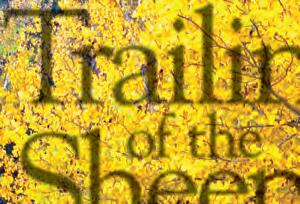




TEXT BY JOHN W LUNDIN
The Hailey Hot Springs Hotel was Idaho’s first summer resort. Here local historian and author, John Lundin, muses on some early plunge therapy in the Wood River Valley.
The discovery of silver in 1879 brought thousands to the Wood River Valley.
The Valley’s Hot Springs Resorts were popular centers for entertainment, recreation and health for locals and tourists, as elsewhere.
“Hot mineral springs are bountifully sprinkled over the western country, and in a
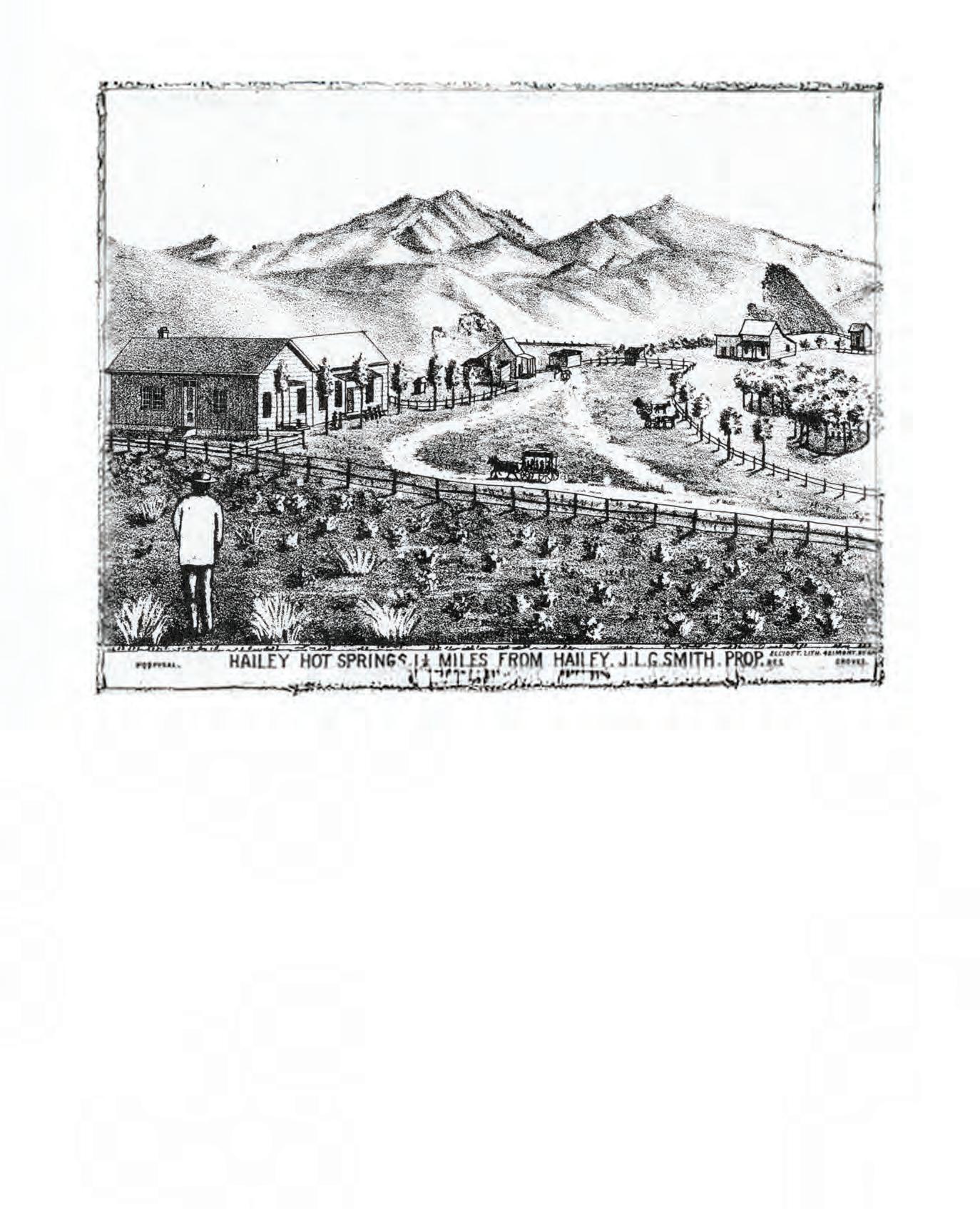
number of places they are the most important adjuncts of a town,” said Carrie Adell Strahorn in her book, Fifteen Thousand Miles by Stage, 1912.
Hailey Hot Springs in Democrat Gulch, two miles west of Hailey on the 1880 Perry Croy homestead, was Idaho’s first real summer resort. After the Oregon Short Line Railroad (a Union Pacific subsidiary) arrived at Hailey in May 1883, it promoted the Valley’s hot springs as tourist attractions and provided excursion fares.
The Resort’s first owner, J.L. Smith, “was so cruel to his family that his wife at last picked up a shotgun and killed him, an act justified by the courts and many of the Hailey citizens.” Mrs. Smith was acquitted of his murder. (Fifteen Thousand Miles by Stage.)
The Alturas Mining Reporter, 1883, said Hailey Thermal Springs “are among the few natural sulphur springs of the United States, and are one of the greatest curiosities, as well as one of the most attractive health resorts, in the Territory. A reliable analysis of the mineral
waters shows them to be identical with many celebrated Hot Sulphur Springs of America and Europe...”
Elliott’s History of Idaho Territory, 1884, said the Resort’s water “possesses many invigorative and curative qualities. Doctor Miller’s hospital, located a little below these springs, where he has the use of this water for his patients, in one of the institutions of Wood River...The springs are supplied with tub and plunge baths, one for the ladies and one for the gentlemen.”
In May 1886, railroad promoter Robert E. Strahorn opened the Alturas Hotel in Hailey, with “all of the modern conveniences... the finest hotel between Denver and the Pacific Ocean,” marking “the beginning of a new era for that part of Idaho.” Water from Hailey Hot Springs was piped in to heat the hotel, including a large natatorium. (Fifteen Thousand Miles by Stage.)
In 1888, Strahorn formed a company to rebuild and expand Hailey Hot Springs, using a stock prospectus to raise $150,000. On August 6, 1888, it purchased the Springs and Lamb Ranch for $20,000, obtaining 1,000 acres of rolling bunchgrass and meadow lands and a herd of 150 registered Kentucky cattle, “forming the finest herd west of Iowa.”
A new hotel was built “on the flat a half a mile below the springs within sight of Hailey,” heated with spring water, “with separate plunges for men and women, a ballroom, and a bowling alley in the basement.”
It had a pavilion 50 by 105 feet, two stories and basement, in which there are large and small bath rooms, ball room, parlor, dining room, billiard room, ten-pin alley, and rooms for persons to rest in after bathing...and the grounds are being laid off and cultivated in the highest style of landscape art...
$40,000 was spent to create three lakes, one for outside swimming and bathing, and





the other two for the cultivation of trout and other fish and boating.”
The Resort was “a joy and comfort to all that country between Salt Lake and Huntington...No pains or money had been spared in making the place attractive for such people as [U.P. financier] Jay Gould and family... who found it a charming retreat. With Union Pacific cooperation in bringing patronage, the Hailey Hot Springs Hotel was a success...” (Fifteen Thousand Miles by Stage.)
An 1890 travel book said the Resort was “in a most charming little park or glade, overlooked by high mountains...where numerous mining shaft tunnels are in plain view.”
“Commodious swimming baths are provided...for the delightful effect of a plunge.” Patients with “neuralgia, paralysis, dyspepsia, inflammatory or mercurial rheumatism...left completely restored.”
In July 1899, the Hot Springs Hotel was destroyed by a rapidly moving fire. “A Smoking Ruin,” Wood River Times, August 2, 1899. When the Hailey Hose Company arrived, “[t]he hotel was all ablaze and the flames could not be checked....A smouldering ruin is all that remains of the Hailey Hot Springs Hotel. The three chimneys are still standing as is the foundation masonry. All else is razed to the ground.” Owners had invested $127,000 in the Resort. Fire destroyed the $75,000 hotel, insured for half its value. All
‘‘
Patients with “neuralgia, paralysis, dyspepsia, inflammatory or mercurial rheumatism...left completely restored.”
-
1890 TRAVEL BOOK ON THE RESORT
guests escaped unhurt but their losses ran between $12,000 and $15,000.
The visitors to the Springs were not of the eastern penny-pinching class of tourists. They were usually very wealthy people, who demanded the best there was to be had, expecting to pay well for it. It is estimated they put into circulation into this immediate vicinity between $300 to $500 a day. The loss to this town is therefore quite serious.
There was later a rumor the fire was “accidently set by the upsetting of a lamp used by some ladies who were curling their hair.”
Hailey Hot Springs continued in a reduced state in summer 1900—round trip from Hailey, 35 cents; baths 35 cents; children 15 cents.
“Friday of each week will be reserved for Ladies.”
This was the end of one of the Wood River Valley’s famous institutions. Guyer Hot Springs Resort on Warm Springs Creek entertained guests until the 1920s. ï





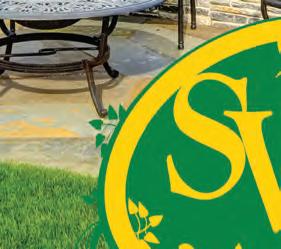




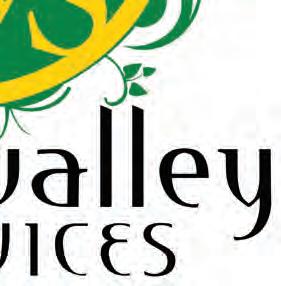



WORDS BY JOHN M. LUNDIN
Wild West outlaws, Robert Parker and Henry Longabaugh, have become permanent fixtures of the American zeitgeist due to the epic teaming of Paul Newman and Robert Redford in the highest grossing film of 1969: Butch Cassidy and the Sundance Kid—an exuberant, comedic, and not exactly historically accurate take on the reallife adventures of these western icons who had the longest run of “successful” bank and train robberies in the known history of the Old West. Here is John Lundin, local author and historian, on the duo and their time spent in Idaho robbing trains that were on railroads built by Sun Valley founder, EH Harriman.
Bu tch Cassidy (Robert LeRoy Parker), Sundance Kid (Henry Longabaugh) and their gang (the Hole in the Wall and/or Wild Bunch) were the most prolific, successful and best-known robbers in the American West.
Butch was a master planner and escape artist who organized a string of holdups and was sometimes known as the “American Robin Hood.”
They were memorialized by the 1969 movie, Butch Cassidy and the Sundance Kid, starring Paul Newman as Butch, Robert Redford as Sundance, and Katherine Ross as Etta Place (Butch’s girlfriend).
Idaho State University Professor Phillip Homan has uncovered new information about the gang. Based on Pinkerton National
Detective Agency records at the Library of Congress, Homan is writing a biography of Kittie Wilkins, the Horse Queen of Idaho.
Butch’s involvement in Idaho started with the robbery of the Bank of Montpelier on August 13, 1896. The sheriff chased the gang on a bicycle, who escaped when they got on fresh horses hidden for their getaway, scenes shown in the movie.
In 1897, New York financier Edward H. Harriman bought Union Pacific out of bankruptcy, transforming it “from a faded, mediocre carrier to the most efficient railroad west of the Mississippi River,” historian Maury Klein stated. This enabled his son, Averell, to establish Sun Valley in 1936.
Butch’s gang became famous for robbing U.P. trains in June 1899, and in August 1900,



between Rawlins and Green River, Wyoming, as they crossed the Continental Divide; a high plateau that was a bleak tundra of uninhabited land into which robbers could escape. The robberies led Harriman to hire Pinkerton detectives to capture the gang. Harriman created “mobile posses,” where men and horses waited in boxcars to chase bandits. In the movie, Butch lamented it would have been cheaper for Harriman to pay him not to rob his trains than to hire the Pinkerton Agency to stop him.
Cassidy became concerned that the outlaw profession was in trouble. Much of the west had become settled. Rapid communications used by lawmen made escaping more difficult, including telegraph lines connecting most towns, the arrival of the telephone, and trains that crossed the country in days. Butch decided to leave for South America, financed by robbing a bank in Winnemucca, Nevada.
In September 1900, on the way from Wyoming to Nevada, Will Carver, Butch Cassidy and likely other gang members stayed at the McFall House in Shoshone, Idaho. Two gang members hid part of their loot nearby. The McFall House was built by the author’s great-grandfather Matt McFall in 1900, and his family lived there.
On the way to Winnemucca, Butch stole one of Kittie Wilkins’s horses, a white Arabian, from the Wilkins Horse Company in the Bruneau Valley, Idaho. When they camped at the CS ranch near Winnemucca, the young son of the ranch’s foreman lost a horse race























with Cassidy, who was riding the Arabian. Butch told the boy, “You like the horse? Someday he will be yours.”
The gang robbed the First National Bank in Winnemucca on September 19, 1900, netting $32,640. A posse chased Butch and Sundance back to Idaho. When they changed to fresh horses, Butch yelled to the posse, “give this white horse to the kid at the CS Ranch.” The posse took the horse to the boy, who later said, “for Butch to remember his promise to a kid when the posse was so close, he could not have been all bad.”
The gang reunited in Fort Worth, Texas, at Madame Fannie Porter’s brothel, where two members married prostitutes—Will Carver married Lillie Davis and Harvey Logan married Annie (Maud) Rogers. The gang had
their picture taken wearing their finest dress. The photo was widely circulated, giving them an image of glamour and sophistication, but detectives used the picture to identify and hunt them down.
In December 1900, Carver and Logan took their wives by train to Shoshone for their “honeymoon.” According to Carver’s wife’s confession to a Pinkerton detective, they stayed at the McFall House. Carver and Logan likely registered using their aliases, William Casey and Bob Nevilles.
Carver and Logan left for five days, returning with loot they had retrieved, including several bags of gold. They were liberal spenders, buying lavish dinners, champagne, fine buggies and horses, and “many fine hats with droopy ostrich feathers





for Lillie.” They traveled to Helena, Butte, Denver and San Antonio, where Lillie received more presents and money, according to Logan’s deposition for Annie Rogers at Nashville.
Butch, Sundance and Etta left for South America in 1901. Some accounts say Butch and Sundance did not die there and returned to the U.S. Their lives have become legendary, and they are icons of the Old West.
Butch and Sundance’s exploits seem like ancient history. However, when they stayed at the McFall House in 1900, the author’s grandmother was 10 years old and living there with her family. She likely saw the men in the lobby, interacted with them, or even talked to them. Thus, our family provides a direct link between Butch and Sundance’s Old West and the present day. ï







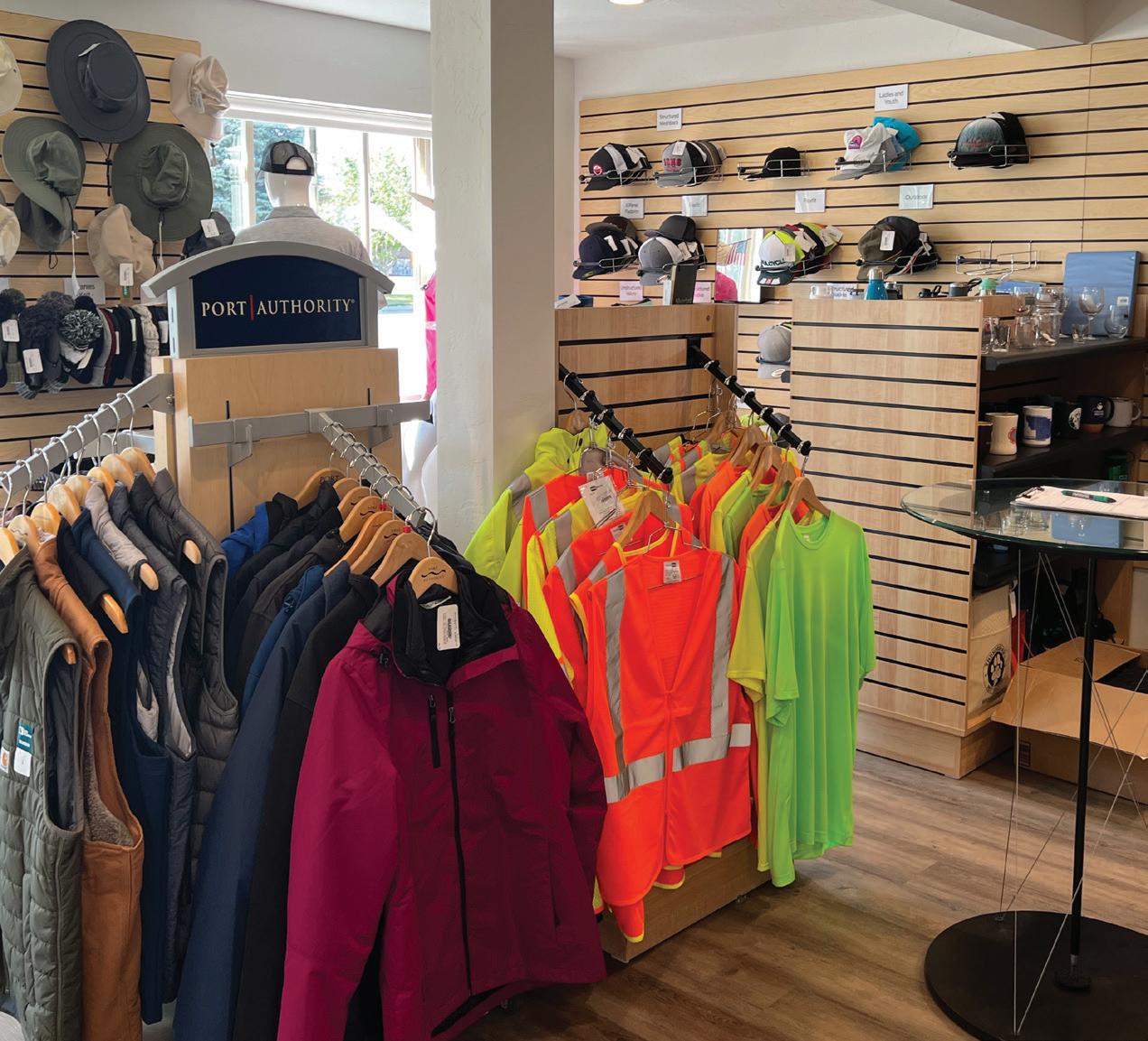



WORDS
BY CRISTY SELLAS PHOTOS COURTESY CHAPTER ONE BOOKSTORE
Th rough the years, Ketchum has had its share of jewels contributing to its small mountain town charm. One of those little Ketchum jewels is the undeterred and beloved Chapter One Bookstore at 340 East Second Street in downtown Ketchum.
Chapter One is an essential piece of the fabric of Ketchum and Sun Valley, and knowing that it will be around for a while is reassuring and heartening for locals and visitors alike. Bookstores are wonderful places of discovery and happiness for all who know and understand that books are magical things full of unlimited adventures, endless distractions and vast knowledge.
This charming bookshop has been locally owned since 1970. For over 50 years, Chapter One has been the place to go for new and used books of all kinds: self-help books, coffee table books, outdoor guides and books on spiritualism, newspapers and plenty of gossip and good conversation. Cheryl Thomas, the grande dame of the shop, purchased the store in the ‘80s and became adept at making every visitor feel welcome and ensuring that everybody found what they were looking for. She knew how to create a sense of community, and Chapter One has always felt more like your favorite café, a quiet corner of the library, or even your own living room.
When Thomas died unexpectedly in April 2023, she left the shop to her daughter and son-in-law, Holly and Kevin Mora, who gamely took over and did their best to carry on their mother’s legacy. For a while, they were able to do this successfully. Holly and Kevin renovated the top floor, making the space lighter and more inviting, and even added a sitting area and a fireplace. Kids can often be found lounging and reading upstairs while their parents browse books downstairs.
The Moras and Kelly Cavanaugh, who currently operates the shop, worked tirelessly to keep the store going. Still, last year’s road construction, closures and other disruptions were overwhelming, making it nearly impossible for businesses to navigate. The roadwork was paralyzing to many Main Street businesses, with many closing their doors. Chapter One was almost one of those that didn’t make it.
Foot traffic is a huge source of customers for all the shops and restaurants on Main Street, and Chapter One is no different. Tourists staying at the Limelight Hotel and patrons of the Argyros and Village Market will often check out the book selection. That street is also a shortcut to the The Kneadery and an easy side street that is well utilized, and with all that access blocked by construction for so long, the business suffered tremendously.
As much as Holly Mora tried to keep foot traffic flowing, the difficult decision to close Chapter One’s doors came in December 2024. The potential and then actual closing created a quiet uproar and genuine sadness in the community. People were crushed and left weeping voicemails on Chapter One’s phone service.
After the crushing summer of roadwork and brutally low sales, the Moras sought a buyer. Enter Conor Quinn, a Sun Valley resident and a patron of Chapter One since the 1980s. Quinn has a deep connection to Chapter One and a close relationship with Cavanaugh, and he wanted to keep the iconic bookstore alive and continue its legacy. The partnership became a no-brainer.
Quinn has two daughters in the Valley and believes his purpose has always been to unite people, whether by supporting local businesses, events or fundraising efforts. Quinn runs a non-profit, the Alpine Collective, which is “committed to protecting and enjoying our Mountain Town through our collaborative network, products and events.”
“I am thrilled to own Chapter One Bookstore (along with another local business partner), which we acquired to ensure that Chapter One continues as the bookstore our community has loved for 55 years,” said Quinn. It’s safe to say that Chapter One is back and better than ever. The grand reopening was an unmitigated success.
‘‘
I am thrilled to own Chapter One Bookstore (along with another local business partner), which we acquired to ensure that Chapter One continues as the bookstore our community has loved for 55 years.”
- CONOR QUINN
Quinn believes that keeping Cavanaugh in the loop and involved was substantial. Everyone who comes into the store (including authors) marvels at the book selection, which Cavanaugh curated. She has tremendous positive energy and a wide-ranging knowledge of books and can talk to kids just as easily as retirees. She was lucky to have worked with Thomas and to learn her compassion, patience and love of books and how the store connected people in the community. Kelly also worked closely with the Moras, who put so much into the store and preserved Cheryl Thomas’ legacy with renovations, décor, new books and fun events.
Quinn and Cavanaugh (and Pam and Wendy, Chapter One employees) are excited about the future. They plan to continue to host events like the launch party they had for Kim Frank’s book Elephants in the Hourglass. Frank is a Ketchum author and photographer who read from her book and spoke about her work at the reception. Quinn wants to continue supporting local authors and hopes they can continue utilizing their space, especially with the Sun Valley Writers” Conference (SVWC) just around the corner. As the only Ketchum/Sun Valley bookstore, Chapter One is a natural fit and perfect partner to the SVWC. The store has an entire space dedicated to the SVWC’s authors. ï



BY WINSLOW BROKAW

For Bert Williams, the body is not merely a collection of organs, bones and tissues but a living electrical system that can self-regulate, repair and even shift chronic conditions when properly charged and flowing. As a practitioner of electroacupuncture, a modality that integrates low electrical current into acupuncture treatments, Williams works not only with needles but with frequency and current, targeting the body’s internal terrain through the fascia, nerves, and acupuncture channels. These channels act like battery packs, storing and transmitting electricity throughout the body. When the body’s electrical system is compromised, whether the batteries are drained, the fascia can no longer carry current, or the tissues become deficient in electricity, its ability to heal breaks down. Pain, fatigue, and illness set in. “The theory here,” Bert says, “is that all disease is a breakdown in terrain. And that terrain breaks down from a lack of electricity.”
Adding a gentle electric current takes the procedure one step further than traditional accupuncture.

This is where electroacupuncture comes in. By placing needles at specific points on the body and adding a gentle electrical current, electroacupuncture goes one step further than traditional acupuncture. The current, delivered in carefully selected frequencies, helps stimulate the body’s natural healing mechanisms in a precise and efficient way. “Electricity knows where to go. It travels to the most deficient areas first,” Bert explains.
“As practitioners, our role is to diagnose these deficiencies, whether in acupuncture channels, neural pathways, tissues, or organ systems, and deliver the appropriate frequency, amplitude, and voltage to support the body’s innate ability to regulate and repair itself,” Williams said. This is what makes electroacupuncture both powerful and versatile. Whether treating chronic fatigue, digestive disorders, autoimmune issues, or musculoskeletal pain, the goal is not to chase symptoms but to treat the terrain. That means identifying where energy flow has been compromised and restoring voltage to those areas. “I’m not treating the disease,” Williams said. “I’m treating the terrain in the problematic area, which means I can treat just about anything happening in the body.”
Electroacupuncture originated in China around 1934 as an evolution of traditional acupuncture, which has been a
‘‘ The body wants to heal. We just need to create the right conditions.”
— BERT WILLIAMS
foundational healing practice for over 2,000 years. Blending ancient techniques rooted in Chinese medicine with modern science, electroacupuncture offers a powerful healing modality for those seeking alternatives to conventional medicine and serves as a valuable complement.
While electroacupuncture is already wellestablished in countries like Germany, Japan, Australia and the UK, it is only beginning to gain traction in the U.S. Thanks in part to educators from the Electro Acupuncture Institute and dedicated practitioners like Bert, the field of electroacupuncture is evolving rapidly. Williams said, “When I first started studying electroacupuncture in 2003, it was taught as a basic tool for musculoskeletal pain. Now, it is understood to be an effective approach for a wide range of conditions, from chronic pain and inflammation to neurological disorders, digestive issues, and even mental health concerns like anxiety and depression.”

Orthopedic Surgery
Internal Medicine • Critical Care
Advanced Diagnostics
24-Hour On-call Care • Dentistry
Vaccination Programs • Pharmacy
Physical Rehabilitation
Wellness Care • Eastern Medicine
Pain Management
Regular and Prescription Food
Nutritional Counseling
106 S Clear Creek Industrial Park Road
Ketchum, Idaho 83340 (Two miles south of Ketchum)
831 Warm Springs Road Ketchum, Idaho 83340 (Across from Grumpy’s) (208) 726-7777 • svanimal.com


The new research, treatment protocols, and technologies continue to energize the field.
Williams’ journey toward becoming a healer began early. As a child, he was drawn to the books on natural healing that his mother kept around the house. Still, it was not until after college - and a period working in San Francisco’s tech world - that he fully stepped onto the path, enrolling at the Oregon College of Oriental Medicine in 2003. Since then, he has completed advanced training and intensive coursework to deepen his practice and stay at the forefront of this dynamic field.
Williams reminds us that healing takes time and consistency. While some conditions may resolve with a single treatment, he emphasized that acupuncture and electroacupuncture generally require commitment. He explained. “Studies show that frequent sessions at the start yield the best results, leading to deeper, more sustainable healing over time.” Williams added, “And it’s not just about getting better; it’s also about staying well. You don’t have to wait until you’re sick to come in. Acupuncture, and especially electroacupuncture, is a powerful tool for maintenance. A couple of tune-ups a month can do wonders.”
Williams practices at Attune Healing Collective, a hidden gem nestled in Ketchum,

where a diverse community of healing practitioners offers massage, sound healing, and a variety of holistic therapies. The collective also hosts weekend workshops and community events designed to nourish mind, body, and spirit. Williams’ wife, Morgan Hogue, is also an acupuncturist in Ketchum, and together they are part of a vibrant healing community in Idaho’s Wood River Valley. “There are many wonderful acupuncturists in this valley, and everyone has their own style. If you try one and it isn’t a good fit, try another. Find someone who resonates with you,” Williams said. He feels honored to be part of such a talented and diverse community and is passionate about sharing the healing potential of electroacupuncture with others.
By weaving together ancient wisdom and modern technology, electroacupuncture has emerged as a powerful tool in the world of holistic healing. “The body wants to heal. We just need to create the right conditions,” said Williams. With the right support, the body can return to balance. Electroacupuncture helps it do just that by stimulating repair, rebuilding terrain, and restoring our natural electrical flow. ï
The Power of Frequency: Electroacupuncture uses specific frequencies to activate different physiological processes. Lower frequencies (0–5 Hz) stimulate the nervous system and relieve pain. Higher frequencies (20–100 Hz) target organ systems and support deeper tissue regeneration. Some sessions combine multiple frequencies to address surface and deep systems simultaneously.
Visible improvements in osteoarthritis after twelve electroacupuncture treatments.
One of the key benefits of electroacupuncture is its ability to be customized. Practitioners like Bert can adjust the electrical current’s frequency, intensity, and duration, making it a highly versatile treatment option for various conditions.
While acupuncture has been practiced for over 2,000 years, electroacupuncture was developed in China in the 1930s. It was first used to enhance traditional acupuncture by adding an electrical current to the needles, combining ancient wisdom with modern technology.


BY JONATHAN MENTZER
Health fads come and go but one activity is as old as ice: the cold plunge. This centuries old activity stems from customs in Nordic countries and has become one of the most popular ways for people to enhance their health and well-being. Submerging oneself in an ice bath or extremely cold tub has fantastic benefits. When combined with heat therapy, this health trend is also known as the Nordic cycle, which goes from hot to cold and repeats.
At Zenergy Health Club, the cold plunge tub is a brisk 50 degrees Fahrenheit, ready to shock early risers and wellness seekers. For Kylon Myers, the club’s Wellness Manager and a longtime health and fitness professional, cold therapy is more than a trend—it’s a powerful tool for physical and mental resilience.

“The cold plunge works through vasoconstriction,” Myers explained. “Your blood vessels tighten, reducing inflammation. When you step out, vasodilation flushes waste like lactic acid. It’s great for limiting DOMS— delayed onset muscle soreness—for up to 96 hours post-workout.”
But the benefits go beyond muscle recovery. That involuntary shiver? It’s not just your body reacting—it’s your metabolism ramping up and a flood of neurotransmitters like dopamine and epinephrine being released. “It’s a survival instinct,” he said. “That shock is your body adapting.”
The method, especially when combined with heat therapy like saunas, is gaining momentum in fitness and wellness circles. The key, Myers noted, is in the transition. “You

‘‘ Embrace the shivering—it triggers metabolic and cardiovascular benefits.”
— KYLON MYERS
want to air dry; let your body come back to baseline. Embrace the shivering—it triggers metabolic and cardiovascular benefits.”
Zenergy introduced its cold plunge over a year ago, and the reception has been overwhelmingly positive. “Longevity is trending,” Myers said. “Social media plays a huge role, but with that comes misinformation. You’ll see people plunging in 35-degree water for seven minutes. That’s not smart if you’re just starting out.”
Myers references Dr. Susanna Søberg, a Danish researcher known for her work on thermogenesis and cold exposure. Her protocol? Eleven total minutes of cold plunge per week, broken into sessions of one to three minutes. “Start slow,” he advised. “The temperature doesn’t need to be extreme—50 to 59 degrees is effective.”
Cold showers are a great starting point for those without access to a plunge tub. “Just make sure your head’s under, and embrace the full-body experience,” Kylon said. “Cold exposure also teaches breath control—staying calm in discomfort. That’s where mental resilience comes in.”
That mental edge is what keeps Kylon committed. “It’s the biggest gain for me— knowing I can push through something uncomfortable, find the tools to stay calm and come out stronger.”
He also stresses that contrast therapy— alternating between hot and cold—can be extremely effective, especially when structured properly. “If you want to feel energized, end with cold. If you want to relax, finish with heat. But always give your body at least two minutes to adjust between transitions.”
That curiosity is what drives the club to stay on the cutting edge. “We just added red light therapy. The goal is to offer a holistic health approach—to give our members tools that support recovery, performance, and longevity.”
But Myers doesn’t shy away from discussing the risks. “If you have cardiovascular issues, or if you’re pregnant, consult your doctor first. And don’t jump into extremes. Too much cold can lead to diminishing returns—the body adapts, and the benefits plateau.”
One scientifically backed benefit is the activation of brown fat, a special type of fat tissue rich in mitochondria. “Babies have a lot of it—it helps regulate temperature,” Myers said. “Cold exposure reactivates it in adults, increasing metabolism and helping the body become more efficient at using fat for energy.”
As cold therapy trends across platforms and health communities, Myers emphasizes moderation, education, and consistency. “Like exercise, it’s about introducing a stimulus and

letting the body adapt over time. The goal isn’t to suffer—it’s to build strength and resilience.”
After more than three decades in mortgage banking, Mike Preece never expected his retirement years to be filled with cedar planks, rock wool insulation and cold plunges. But when his wife began facing health issues, and the couple struggled to find a properly insulated outdoor sauna, Preece decided to build one himself.
That handcrafted, five-person sauna— designed to match the trim and siding of their Twin Falls, Idaho, home—became the foundation for MTN Sauna, a company Preece and his sons launched two years ago near the Twin Falls airport. The business focuses on custom-built, insulated outdoor saunas designed specifically for cold climates.
“Most outdoor saunas weren’t insulated, which just doesn’t cut it for Idaho winters,” Preece said. “So, I used 2x6 framing and rock wool insulation to keep the heat in.”
What began as a personal project has become a full-service, family-run operation. MTN Sauna now works with architects and developers to design high-end wellness spaces,

often integrating cold plunges, fire pits, and lighting into outdoor retreats. Inspired by figures like Wim Hof and Dr. Susanna Søberg, Preece said the combination of hot and cold therapy is gaining traction.
As for cost? “You can start with a basic setup—sauna and cold plunge—for around $4,000 to $5,000,” Preece said. “But you can easily spend $25,000 or more, depending on size and features.”
For Preece, though, the real value is personal. “It’s about creating a space where people can relax, heal and connect.” ï
1. Reduce inflammation!
2. Increase Dopamine and EpinephrineI!
1. R amp up metabolism — help your body become more efficient at using fat for energy
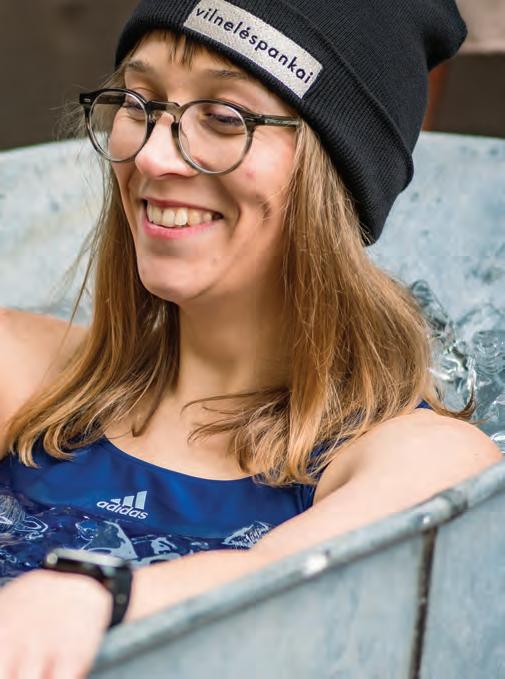



BY CAROLYN FRENCH
Stanley, Idaho, is the epitome of a summer weekend—where alpine lakes, river rapids and starlit dance floors create the ultimate mountain montage. Use this guide as your unofficial scorecard, rack up bonus points, queue the perfect playlist, and stay open to the unplanned magic in between.

Every great Stanley adventure kicks off with an unspoken pact between you and your companions: surrender to the call of the Sawtooth Mountains. Appoint a driver to conquer the pass, pile into your chariot of choice, and set off on the scenic cruise up Highway 75—an hour-long journey north, fueled by curiosity and good company.
Bonus Points: +1 for keeping the windows rolled down, +2 for every bug that flies into your passenger princess’s eye.
Song Choice: Take it Easy Summer by The Eagles
The drive up is always filled with anticipation – the promise of shimmering alpine lakes and midnight skies strewn with endless stars await – but nothing puts the pedal to the metal like breakfast waiting on the other side of the pass at Stanley Baking Co. Upon arrival, the first order of business should be a breakfast burrito.
With a full belly and a full heart, take your pick of the world’s best digestion walks. The Sawtooths are home to a dreamy lineup of hikes –from leisurely strolls to quad-burning climbs (pro tip: check your fitness ego at the trailhead if you choose the latter). Goat Lake offers a middle ground, promising Sawtooth Valley views that will make you want to sing “This Land is Your Land.” Bring a PB&J to enjoy at the summit –after that final push, you’ve earned it.
Bonus Points: +1 for bringing a fly rod, +2 for catching anything.
Song Choice: Ends of the Earth by Lord Huron
There’s nothing better than a warm meal and a cozy bed (or bag) after a long day of exploring. Reserve a table at the Stanley Supper Club for a bit of fine dining, or hit Papa Brunee’s for a quick slice before setting up camp. Danner’s Log Cabins offers mountain views and a homey feel, plus the historic bonus of spending the night in one of Idaho’s first ranger stations! Or you can plant your stake under the stars at Stanley Lake Campground
Bonus Points: +1 for pitching a tent correctly, +2 for leaving no trace
Song Choice: Sweet Disposition by The Temper Traps
One of the best times to experience Stanley’s magic this summer will be late June when the Sawtooth Valley Gathering brings together artists and adventurers alike for the ultimate summer night. The best way to pregame for this epic evening is by starting your day with a cup of coffee and a fruit smoothie from Peaks and Perks on Stanley Main Street. Bask in the sunlight and admire the full view of the Sawtooths before heading off to Redfish Lake.
Approaching Redfish on a Saturday can be daunting – securing a parking spot is no easy feat – but the first glimpse of crystal blue water is worth it. Stake out a spot on the beach or rent a boat— the ultimate exploration vessel—and cruise across Redfish to the legendary jumping rock. Drop anchor, take the leap, or simply vibe from the boat. No shame in just soaking it all in. When your lake legs start to wobble, refuel with fish tacos from Lakeside Grill and picnic on the Redfish lawn.

Bonus Points: +1 for doing a trick off the rock, +2 for getting invited onto someone’s wake surfing boat
Song Choice: Left Me Like Summer by Daily J
As the sun starts to dip, recharge at your home base and gear up for a night at the Sawtooth Valley Gathering (June 19-25). With the mountains as your backdrop, explore vendor booths, grab dinner from a food truck, and support this year’s lineup (featuring a few Sun Valley locals) with your best dance moves. Between the alpenglow of the surrounding snow-crested peaks and the flashing of stage lights, the night is guaranteed to shine. If the curtains close and you’ve still got gas left in the tank, wander down the hill to the Kasino Club for a proper nightcap. Swap stories around the firepit or head inside to keep the rhythm alive.
Bonus Points: +1 for mastering the hula hoop, +2 for every dance battle you accidentally get into
Song Choice: Night Moves by Bob Seger
Whether you spent last night closing down the Kasino Club or turning in early, there’s no time to waste sleeping in. A Stanley weekend isn’t complete without spending time on the Salmon River. Book a trip with one of Stanley’s world-class white-water companies to paddle down some of Idaho’s most jaw-dropping scenery with the best river guides in town. The Salmon invites its guests to share meaningful conversations and quality time, but be sure to keep an eye downstream – Piece of Cake rapid has a reputation for humbling both seasoned paddlers and rookies alike.
Bonus Points: +1 for sitting in the splash zone, +2 for swimming a rapid
Song Choice: Bam Bam by Sister Nancy
The river spits its voyagers out at the Sunbeam Café. Located at the confluence of the Main Salmon and Yankee Fork, rafters can expect to smell freshly baked cookies from a mile away. The local eatery greets its guests with open arms and mouth-watering quesadillas, plus some games to keep the kids (or the adults) entertained.
When it’s time to shuttle home, stop at the Sunbeam Hot Springs or the Boat Box Hot Springs – both nestled along the Salmon riverside. Don’t let that sulfur smell turn you away – there’s nothing more healing than letting these hot pools warm away your worries. When the river chill has thawed, it’s time to head for home. Make sure to stop at Smiley Creek for a milkshake on your way back south—it’s the sweetest goodbye to a wonderful weekend up north.
Bonus Points: +1 for a post-hot spring cold plunge, +2 for being the fearless driver to conquer the way home after a long weekend.
Song Choice: Call Me the Breeze by J.J. Cale
All of this said, the real adventure lives in the in-between moments— the spontaneous turn down a side trail, the unexpected swim, and the dance when no one’s watching. Treat this itinerary as a loose guide. The memories come from saying yes, and showing up with an open heart, ready for whatever the mountains offer. ï











BY HAYDEN SEDER
Maybe you’ve been passed on a tough mountain bike trail by someone barely breaking a sweat, wondering how they do it: then you spotted that it was an e-bike. Maybe you’ve seen commuters on the bike path, kids in tow in a car seat and decked out with saddle bags. Across towns and demographics, one thing’s for sure: e-bikes have taken over the Wood River Valley.
And for good reason. With over 200 miles of e-bike-friendly trails in the Wood River Valley, there’s no shortage of ways to use these bikes, whether for your daily commute, in place of owning a car, or to help you mountain bike those enduro-style rides you’ve always wanted to check out.
There are several bike shops in town that rent and/or sell e-bikes, and across the board, these stores have seen a huge increase in demand. “E-bikes are now the majority of my sales—I never thought that would happen, but it has,” said Jason Dykhouse of the Elephant’s Perch, whose best-seller is the cargo e-bike from Specialized. This Class III bike can fit a child on the back and various types of bags in front and back, making it a viable alternative to owning a car for many families. In terms of rentals, the cruiser kind, ideal for the bike path, is the biggest draw at the Perch. “These
are out every day, all day,” explained Dykhouse.
Harry Oettinger, owner of Black Tie Rentals, says he’s seen a huge increase in demand for e-bike rentals each year for the last four years. And that demand is across the board: “It’s almost like every year a new type of customer or demographic is discovering it,” he said. One of the biggest increases has been people using cruiser-style e-bikes instead of renting a car when visiting. “We are focused on the visitor who wants an alternate way of getting around Sun Valley and who doesn’t want to worry about parking.”
Within town, e-bike usage regulations are established by ordinances at both the city and county levels, which generally stipulate that you must obey traffic laws. For those traveling on the Wood River Trail (also known as the bike path), there is a 20-mph speed limit. There are, of course, certain etiquettes that should be observed on this multi-user path, such as keeping right except to pass, giving advance notice before passing and maintaining a reasonable speed.
As for biking on public land trails, these regulations are set by the US Forest Service and the Bureau of Land Management (BLM), and where to ride can be a little more nuanced. E-bikes are allowed on any
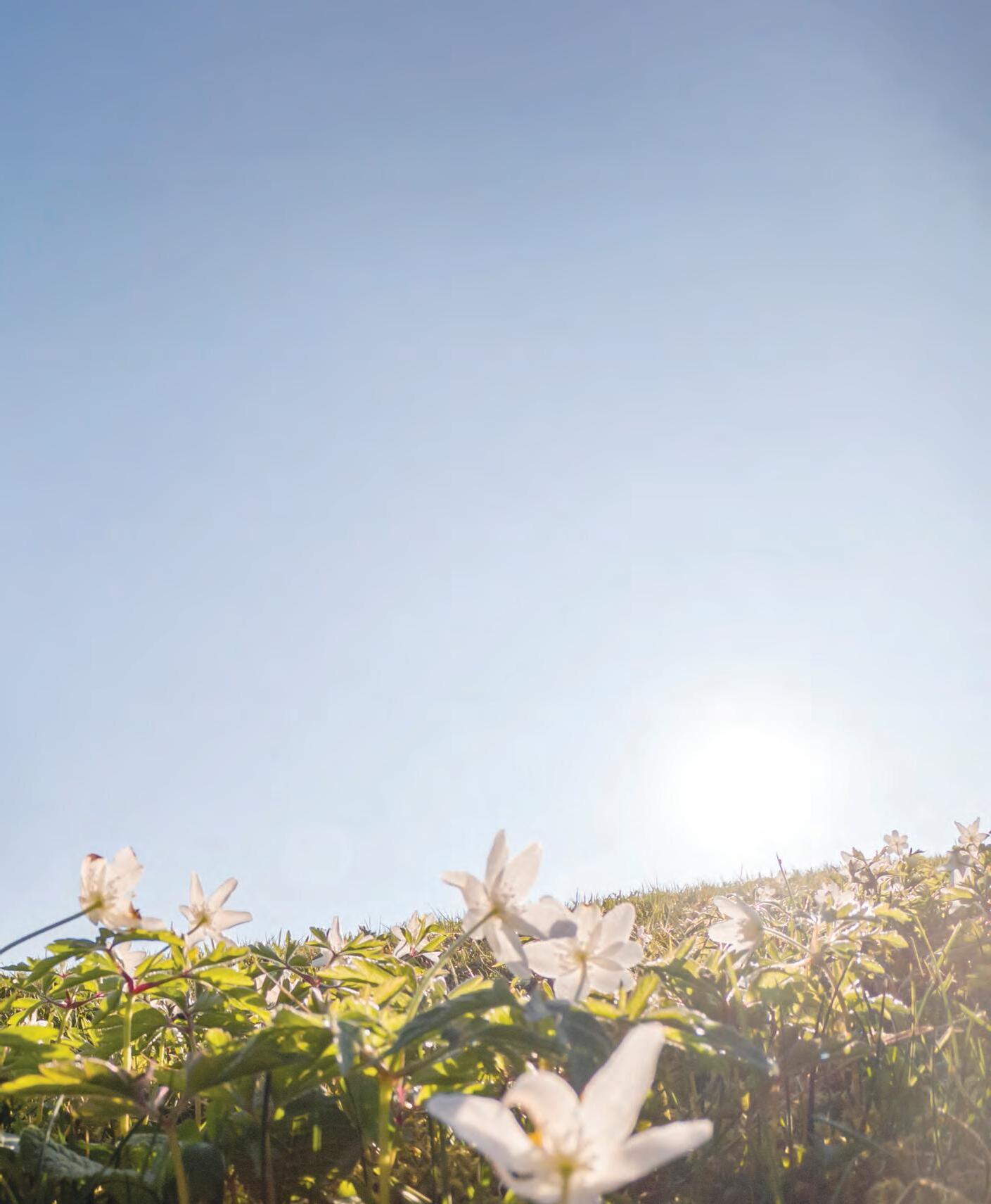
motorized roads and trails on Forest Service land, which encompasses most of the land surrounding Ketchum and Sun Valley. Most land surrounding Hailey and Bellevue is BLM land, where e-bikes are allowed more broadly on many trails. For guidance on which
‘‘ E-bikes are now the majority of my sales—I never thought that would happen, but it has,”
—JASON DYKHOUSE OF THE ELEPHANT’S PERCH
trails allow e-bikes in the area, check out the Blaine County Recreation District’s Trail link (https://summertrailink.bcrd.org/), which tells you which modes of travel are allowed on each trail.
Given the nuances of which trails allow e-bikes, one might think there would often be scuffles between “acoustic” bike riders running into e-bikers where they don’t belong. But
Fox Creek trailhead
Lake Creek trailhead
Corral Creek Road (this includes Pioneer Cabin trail and Corral Creek trail)
Lake Creek Road (this includes Taylor Canyon and High Ridge trail)
Bald Mountain trails
Sun Valley Resort trails (including White Clouds loop and Proctor Mountain trail)
Adam’s Gulch EXCEPT: Trail #146 - Old Adams Gulch Road Trail and Eve’s Gulch Trail, which is the trail that follows the bottom of the drainage (it is the only motorized trail access from Adam’s Gulch trailhead).
Harriman Trail
Galena Lodge trails
Titus Lake trail
Galena Summit Toll Road Trail
Trails accessed via North Fork Road #146 behind the SNRA headquarters
Carbonate Mountain Trail
Draper Preserve River Trail
Toe of the Hill Trail
CLASSIFIED
Class 1:
750-watt motor or less
Pedal assist only
Max motor-assisted speed of 20 mph
No throttle
Class 2:
750-watt motor or less
Pedal assist and a throttle
Max motor-assisted speed of 20 mph
E-bikes are not allowed on the following non-motorized trails or any trails accessed from:
according to Wood River Trails Coalition Executive Director Sara Gress, while there were quite a few complaints when e-bikes started becoming popular a handful of years ago, these days she only gets a couple of calls or emails about e-bikes each season, and those are mostly about where to ride them.
Local bike shops are also doing their best to curb potential bad e-biker behavior. Dykhouse explains that the Perch doesn’t rent e-mountain bikes since these would usually be for people from out of town. If they’re not showing up with a truck to take the bike to the appropriate trailhead, they may attempt to e-mountain bike on trails accessible from town, none of which allow e-bikes. “I don’t want to be part of the problem by just handing people these e-mountain bikes and have them show up all over in places they’re not supposed to be,” said Dykhouse.
Class 3:
750-watt motor or less
Pedal assist only
Max motor assisted speed of 28 mph
No throttle
UNCLASSIFIED
Motor greater than 750 watts
Unrestricted motor-assisted speed with pedal assist
Unrestricted motor-assisted speed with throttle
Multiclass ride modes

Similarly, Dykhouse urges parents not to buy e-bikes for kids (and typically doesn’t stock bikes appropriate for children), who have gained somewhat of a reputation throughout the Valley for riding e-bikes recklessly and over the speed limit on the bike path, prompting the various cities to consider implementing some kind of ordinance to curb this.
Similarly to Dykhouse, Oettinger feels a certain responsibility for making sure those he rents his e-bikes to are obeying local ordinances and observing proper etiquette. “Every rental we do, we explain the etiquette and operation of it,” he said. “We’re dealing with a lot of first-time e-bike users.”
Black Tie also does not rent Class III or unclassified styles of e-bikes, and they only have one e-mountain bike rental for similar reasons to the Perch. ï














BY KAREN BOSSICK

Every summer a mother and her two daughters fly to Sun Valley, not to ride Sun Valley’s 400 miles of single track, play golf on its picturesque courses or attend Sun Valley’s Ice Show. They come to walk dogs.
The mother was pregnant with her first daughter when she started taking part in Mountain Humane’s unique Hikin’ Buddies program. Now, the daughter has graduated from high school and is headed to college.
“They’re part of a military family based overseas, so they travel thousands of miles specifically to hike our dogs,” said kennel manager Bailey Gould, who is in charge of Hikin’ Buddies. “It’s been cool for our volunteers to watch the girls grow up so they can walk the dogs themselves. They’re just real dedicated to the cause.”
Hundreds of dog lovers have taken part in Mountain Humane’s program since it began 25 years ago. Adams Gulch was chosen because of its variety of trails and large parking lot with plenty of room for Mountain Humane to set up its booth.
“We’re about the only program of this type. Other shelter supervisors have told me they can’t imagine having the volunteer bandwidth to help out with a program like this,” said Gould.
Gould loads up five to eight dogs in Mountain Humane’s van every Wednesday morning during the summer, then drives them to Adams Gulch trailhead near Ketchum where she has them ready to go at 9 in the morning.
“The drive up to Ketchum is very loud with the dogs barking and me singing songs to whatever’s on the local radio station,” she said. “The van has built-in crates and kennels in the back so it can be hosed down after we’ve finished. But, initially, it’s a big scary metal box for the dogs that have never been in it before. They’re sitting there wondering where they’re going to be dropped off.”
Once the dogs get out of the van, they immediately recognize, “Hey, it smells different here.”
“There are trails to hike, birds flying in the sky… They get a lot of enrichment out at the trailhead—it’s a change of scenery from the shelter,” said Gould. “Dogs that go every week know the routine, they know what’s



Hikin' Buddies runs from 9 a.m. to 1 p.m. every Wednesday at Adams Gulch from the first Wednesday of June to the last Wednesday of August.
Dog walkers are given instructions and poop bags when they sign out dogs.
Children under 18 are not allowed to take a dog out alone. Young children may hold the leash only if an adult is also holding it.
It’s recommended that dog owners not bring their own dogs unless they have another handler to walk them separately.
Those interested in volunteering for Hikin’ Buddies may submit a volunteer application at www.mountainhumane.org.
happening, and they are all excited when they hop in the van.”
The menagerie taking part in the weekly hikes has included labrador retrievers, chihuahuas, huskies, doodle dogs, cattle dogs and hound dogs.
“We go for the bomb-proof dogs—the ones that are going to be good with other off-leash dogs coming up to them, the ones that are not going to mind children petting on their faces, the ones that are not going to pull people’s arms very hard,” said Gould.
Puppies who haven’t had all their vaccines don’t go out on walks, but they get to hang out in a pen where they can interact with people and be socialized.
Between 20 and 60 people show up on any given day, wanting to take the dogs out for a walk. There’s often a line waiting when Gould pulls up in the parking lot. Dogs are paired up with those first in line, and away they go, the dogs wearing bright yellow vests and leashes that say “Adopt Me.”
“People like to come early so they can meet all the dogs and figure out which dog might be the best match for them,” said
Gould. “When the dogs return, we sign them out to another party to go on another hike— just like a library book.”
Some of the dog walkers are vacationers who left their dogs at home—walking the shelter dogs gives them the dog fix they’re craving. Others want to adopt a dog, and taking one out on hikes gives them a chance to see if they’re a good match.
Still, others can’t have a dog for one reason or another, but they love dogs and so relish the opportunity to walk them.
“We have twins in their 60s from Jerome who drive up here every week just for Hikin’ Buddies. So, it’s been a hoot to see them every year,” said Gould.
“They just want to make a shelter dog’s day,” said Christine Ferguson, the executive director of Mountain Humane.
Rosemary Aquilante was among Hikin’ Buddies’ early volunteers. She says that not only does it offer kids an opportunity to learn how to be around dogs, but it also lets dogs decompress as they “sniff and sniff and explore as much as they want.”
She notes that the walks give the dogs exposure to people on horses, even the moose that spend time in Adams Gulch.
“It opens dogs up to the real world,” she said. “The dogs that come to Hikin’ Buddies have never swam in water, and it’s especially fun watching them when the little creek is flowing and they experience it for the first time. Some like to paddle around; others are frightened and try to run away. A lot come to the bridge and halt because they don’t know what to do. But they’re going to need to cross a bridge once in a while if they live here.”
And when the day’s over?
“The ride home is much quieter,” said Gould. “The dogs are all napping.”
Last year Hikin’ Buddies resulted in the adoption of six dogs—some to families visiting from California and Washington.
“Shelter life can be stressful for some dogs, and Hikin’ Buddies is a great opportunity to give them a real-life experience off-site, allowing us to learn more about a dog’s behavior and personality,” said Gould. “It provides them physical and mental stimulation outside of a shelter environment, and it sets them up for success when they do get adopted.” ï


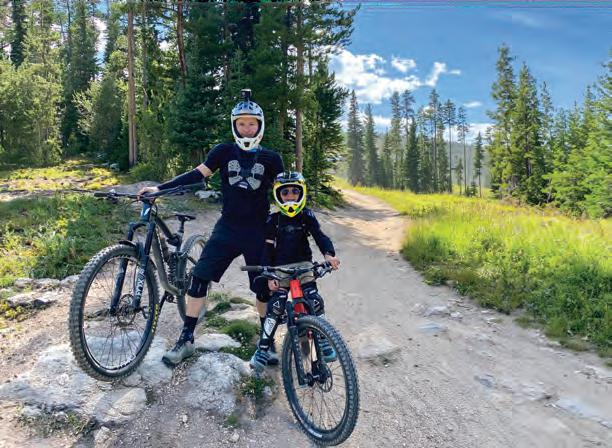


Summer is a prized period in the Wood River Valley. It’s what keeps us here. From world-class fly fishing to mountain biking to the summer-time favorite Fourth of July, there is nothing quite like summer in the Wood River Valley. However, besides the summer outdoor activities, this place we call home also features a wide array of art, music, culture, and great food. There are countless cultural events to attend, everything from exceptional music to stand-up comedy to the Sun Valley Writers’ Conference. Here is an abbreviated calendar of events for the summer and beyond.
Weekly on Wednesday Afternoons
The 2025 Ketchum Farmers Market will be moving to the Forest Service Park at 131 River St. East every Wednesday afternoon from from 9 a.m. to 1 p.m.. Join the fun, shop, taste the freshness of local produce, get to know your farmers, buy in-season produce and plant starts, listen to free music with family and friends and enjoy the atmosphere of the Wood River Farmers’ Markets. Support locally made and grown products and help strengthen and build our local economy! Your health will thank you. wrfarmersmarket.org
Weekly on Saturday Mornings
The 2025 Hailey Market is every Saturday from 9:00 a.m. to 1:00 p.m., from June 14 through October 18. The Hailey market will remain in its excellent location in front of Roberta McKercher Park (Main Street on the south end of town, between 3rd and 4th Avenue)! Enjoy some live music and ready-to-eat foods. Customers are encouraged to bring their own bags and market baskets. The market is continuing to accept EBT and offer the Double Bucks program. Please see the Wood River Ranch Beef trailer for more information. wrfarmersmarket.org
June 17
Join Ketch'em every Tuesday at 6:30 p.m. in Forest Service Park! Get your boogie on! Enjoy an evening of food, drinks and live music.
June 19-22
The 10th Annual Sawtooth Valley Gathering returns to the stunning town of Stanley, Idaho, featuring over 40 live performances by national, regional, and local artists across seven stages. Camping options, on-site and off-site, will be available from Wednesday, June 18, through Monday, June 23. Festivalgoers can also enjoy a variety of beverages, food, artisan vendors, workshops and more. visitsunvalley.com
June 21
Having raised over $1 million for international and local charities/programs, the Sun Valley/ Ketchum Rotary Club is bringing back the Sun Valley Brewery at Festival Meadows in Sun Valley from 12 p.m. to 5 p.m. Proceeds go to Blaine County Search and Rescue, the Community Holiday Baskets Project, the Wood River Rotary Scholarships Fund and The Hunger Coalition. Over 1,500+ beer lovers from all over the Intermountain West are anticipated to attend. This is a family-friendly event with over 25 different breweries and 50 different beers from across the Pacific & Rocky Mountain NW. Games, music, food and even wine! sunvalleybrewfest.com


June 22
Experience live jazz performances at “Jazz In The Park” free concerts in Ketchum’s Rotary Park on Warm Springs Road across from the YMCA, Sundays 6 to 8 p.m. Bring your lawn chairs and picnics!
June 23-26
The Sun Valley Forum is a global climate solutions accelerator that brings together cross-sectoral leaders, innovators, and change-makers to collaborate on the most urgent issues facing people and our planet. With a track record of impact, the Forum surfaces the strategies, technologies, business models, and financing that can power the urgent transformation of our energy and food systems, restoration of nature, and revitalization of communities across the globe. Mainstage keynotes will inform and inspire, while targeted “Multiplier Effect” workshops will accelerate specific impact initiatives by refining strategies, sparking partnerships and mobilizing resources. sunvalleyforum.com
June 24-26
The 44th annual Sun Valley Wine Auction will be a celebration of wine and art, benefiting the Sun Valley Museum of Art, which has been the cultural keystone of the community, empowering arts exploration and creativity, engaging cultural conversations, and connecting the community to world-renowned thinkers and creators. sunvalleywineauction.org

June 26
Get ready to Saddle Up and Shoot for the Stars at the 34th Annual Cowboy Ball at the Swiftsure Ranch in Bellevue! Dust off your boots, polish your bling, and join us in supporting a great cause: Horses Changing Lives. The evening starts with cocktail hour at 5:30 p.m. Enjoy a family-style dinner, exciting auction items, and live music from Nashville artist Chris Hennessee. swiftsureranch.org
June 26
Sawtooth Brewery is excited to announce the 2025 Hailey Live summer music series. Free music will be played Thursday nights from 6:30 to 9 p.m. at Hop Porter Park in Hailey.
June 28-29
Ballet Sun Valley is thrilled to welcome The National Ballet of Canada to Sun Valley! Founded in 1951, this world-renowned company is celebrated for its diverse repertoire, contemporary style, and extraordinary talent. With a storied history featuring legends like Nureyev and Baryshnikov, the company now thrives under Artistic Director Hope Muir. Fresh from acclaimed performances in London and Paris, The National Ballet of Canada continues to soar on the international stage—and next, Sun Valley! balletsunvalley.org
July 1-2
Geopolitical Disruptions and American Competitiveness, in collaboration with the Manhattan Institute, the 2025 Sun Valley Policy Forum Summer Institute is a two-day event at the Argyros Performing Arts Center exploring the

intersection of global disruptions, technological change, and key domestic debates. Dive into issues shaping our world—economics, energy, education, industrial policy, AI, and more. Enhance your experience with a Season Pass for exclusive dinners and meet-and-greet opportunities. Speakers include Matt Taibbi, Walter Kirn, Reihan Salam, Coleman Hughes, Seth Dillon, Abigail Shrier, Heather Mac Donald and Sir Niall Ferguson. theargyros.org
July 2-5
Celebrate the Fourth of July at Hailey’s 2025 Days of the Old West Independence Day celebration. Enjoy the celebration of a classic American parade on Main Street with local restaurants serving up their specialties. Watch world-class and local cowboys and cowgirls at the Days of the Old West Rodeo, view the Fourth of July Parade, visit the Blue Cow Antique Fair, and end with a big firework show; it’s no wonder Hailey has been called one of the best places to celebrate the Fourth of July in the West. valleychamber.org
July 2
Experience the magic of Sun Valley on Ice, featuring medal-winning skaters, stunning athleticism, and fresh performances all summer. Choose Grandstand Seating for an up-close, thrilling view, or elevate your evening with Terrace Seating, which includes a buffet, bar service, and premier views. Group seating options are available! For more information, please call the Guest Center at 208.622.2135.
July 3-4
Join us for the Baldy Bluebird Music Festival at River Run Lodge, presented by Sun Valley Resort and RJK Entertainment! Enjoy performances by Ian Munsick, Corey Kent,

Kip Moore and more. Proceeds benefit Idaho Basecamp and the Blaine County Charitable Fund. Fireworks follow the July 4 concert! sunvalley.com/events
July 5
Lyle Lovett has redefined American music over a career spanning 14 albums, blending country, swing, jazz, folk, gospel, and blues with masterful storytelling. A four-time Grammy winner and Texas State Musician, Lovett’s live performances—whether solo, acoustic, or with his Large Band—highlight his rich, eclectic style, making him one of music’s most captivating and celebrated artists. theargyros.org
July 17-19
The Sun Valley Tour de Force is a weekend of epic proportions for car lovers of all ages. This signature event has moved to the heart of Fairfield — a rural Idaho town of under 500 people that’s ready to embrace the thrill of speed like never before. The 3.2 miles of state highway become a no-speed limit zone in the heart of the Sawtooth National Recreation Area. So, for one day only, drivers can put their machines to the ultimate test. The fastest speed on record is a Bugatti Chiron, achieving 253.01 mph. Drivers come from all over the country and beyond; it’s truly an experience of a lifetime. Eight events take place over three days. sunvalleytourdeforce.com
July 19-21
Thousands will gather in Sun Valley for the 31st annual Sun Valley Writers’ Conference. This year’s theme, “Words & Wonder,” celebrates the power of storytelling to spark awe and connection. Featured guests include Max Boot, Griffin Dunne, Doris Kearns Goodwin, Colum McCann, Liz Moore, Ruth Reichl, Ocean Vuong and The Improvised Shakespeare Company. Expanded free events, single event tickets, livestreams and community programs make SVWC accessible. svwc.com
July 24-25
The Argyros presents BODYTRAFFIC, an international, renowned, forward-thinking dance
Join us at the Sawtooth Botanical Garden
11 Gimlet Rd. Ketchum, ID 83340
Wednesday July 16th 6:00 pm - 9:00 pm
Raffle Prizes Galore! Silent Auction
Live Auction:
Pickleball Exhibition & Dinner w/ John McEnroe
Garden Totem
Stanley Adventure Weekend
Paddle Up for BMC Internship Program
Encaustic Painting by Jodie Stejer
Zenergy Pass
All Season Sports Package
At Your Service Catering | Big Rock Construction
Better Ask Brenda Catering & Concierge | Conrad Brothers
Ketchum Grill | Nourish Me
Salted Sprig | Sun Valley Culinary Institute
Join us at Sawtooth Botanical Garden 11 Gimlet Rd. Ketchum, ID 83340
Tickets available at bouldermtnclay.org or Scan QR code
Tickets are $100 and include: Complimentary wine cups, beverages & great food from Ketchum Grill Pizza Truck and local caterers!
Please RSVP by July 15th




company proudly hailing from Los Angeles. Since its founding in 2007 by Artistic Director Tina Finkelman Berkett, the Company has held steady to its mission to champion contemporary dance, educate audiences, present new voices, question the future, and incite positive change. Its goal is simple: get the world moving. BODYTRAFFIC is an incubator for new voices and continues to move the needle of what dance can and cannot be–elevating it beyond an art form to a way of thinking, being, and doing. Both nights’ performances begin at 7:30 p.m. theargyros.org
July 28-Aug. 21
The Sun Valley Music Festival’s 41st Summer Season presents a star-studded lineup of guest artists for over three weeks of free concerts in the beautiful, natural surroundings of Sun Valley. svmusicfestival.org
July 29-Aug. 3
Jaialdi 2025, Boise’s vibrant Basque festival, celebrates Basque culture with traditional music, dance, food, and sports. Held every five years, it features events like Festara, Dantzaldi, and Sports Night, drawing 30,000+ visitors to the Basque Block, Expo Idaho and Idaho Central Arena. jaialdi.com
July 30
The River Run Summer Series is back with extended lift service until 7 p.m., live music, food trucks, and more! Enjoy lift-assisted biking, hiking, and a vibrant base area with an outdoor bar, games, and ice cream. Each event supports a local non-profit and features discounted evening tickets or a Season Pass. sunvalley. com/events
July 31-Aug. 1
Join Men’s Second Chance Living (MSCL) and the Wood River Pickleball Alliance (WRPA) for a weekend of exciting pickleball! Enjoy clinics led by senior pros, MSCL’s 4th annual fundraiser tournament, a Gala Dinner with an exhibition
match featuring tennis legends, and a senior professional tournament on Friday and Sunday. visitsunvalley.com
Aug. 8-10
Join us at Atkinson Park in Ketchum for a juried fine arts festival featuring 132 artists from 27 states. Explore exceptional painting, sculpture, ceramics, photography, and more. Enjoy food trucks, live music, a picnic area, and kids’ activities. The festival is free and open to the public, just off Main Street. sunvalleyartsandcraftsfestival.com
Aug. 9-10
Experience an unforgettable evening with Isabella Boylston! Enjoy an exclusive screening of excerpts from her upcoming documentary, directed by Jon Avnet, followed by a conversation with Bella and her American Ballet Theatre costars. The night concludes with live performances of classic and neoclassical ballet excerpts. theargyros.org
Aug. 28-31
Rebecca's Private Idaho (RPI) offers up to four days of racing and riding over 200 miles of pristine gravel in the center of Idaho's heartland. Choose from one of our one-day gravel races or our coveted four-day Queen’s Stage Race for experienced and elite racers. One of America’s longest-running, mass-participation gravel races, RPI supports the charitable efforts of the Be Good Foundation. rebeccasprivateidaho.com
Aug. 29-31
Join Ketchum’s Wagon Days over Labor Day weekend, August 29-31, 2025, celebrating mining history since 1958. Don’t miss the Big Hitch Parade on August 30 at 1 p.m., one of the largest non-motorized parades in the Pacific Northwest, featuring buggies, carriages, and stagecoaches.
Aug. 29
Internationally acclaimed comedian Eddie Ifft returns to the Argyros Theater on August 29 for a night of nonstop laughter. Known for his razorsharp wit, Eddie has sold out global venues and starred on Comedy Central, Showtime and Netflix Is a Joke. Don’t miss his bold, highenergy performance—grab tickets now before they sell out! One night only in Sun Valley. theargyros.org
Sept. 1-5
Béla Fleck reunites the original Grammywinning Béla Fleck & The Flecktones, featuring Howard Levy, Victor Wooten and Roy “Futureman” Wooten. Blending jazz, bluegrass, classical, and more, their indescribable sound defies genres. Experience the unique musical synergy only this quartet creates in a performance that’s impossible to categorize. theargyros.org

Sept. 4-6
Join the Valley Music Festival for three days of live country, bluegrass, folk, and alternative music in stunning Sun Valley. Enjoy toptier artists, rising talent, two stages, and an exclusive VIP acoustic stage. With breathtaking mountain views, local food, craft beer, and cocktails, it’s a music lover’s paradise. visitsunvalley.com
Sept. 11
Since 2007, The Boxmasters have crafted a diverse catalog inspired by 1960s rock and roll, echoing the Beatles, Byrds, and Beach Boys. Their music also pays homage to The Mothers of Invention, Kris Kristofferson, John Prine, and Big Star, blending these influences into a unique, timeless sound that captivates listeners. theargyros.org



WORDS BY ADAM TANOUS

Beaver Creek, Camp, August Complex, Dixie, Park, Durkee—all innocuous enough sounding placenames— but words now burned into the Western lexicon. While just a handful of the thousands of wildfires that burn across the 11 Western states each year, they have come to represent wide-scale destruction and a changing world. Forest fires are literally as old as the hills, but talk to firefighters, incident commanders, and researchers, and they will all tell you that this is different. Fires are bigger, more frequent, and more severe than in years past. The fact is the era of fire is upon us.
Ronnie Abolafia-Rosenzweig, a researcher at the National Center for Atmospheric Research, led a
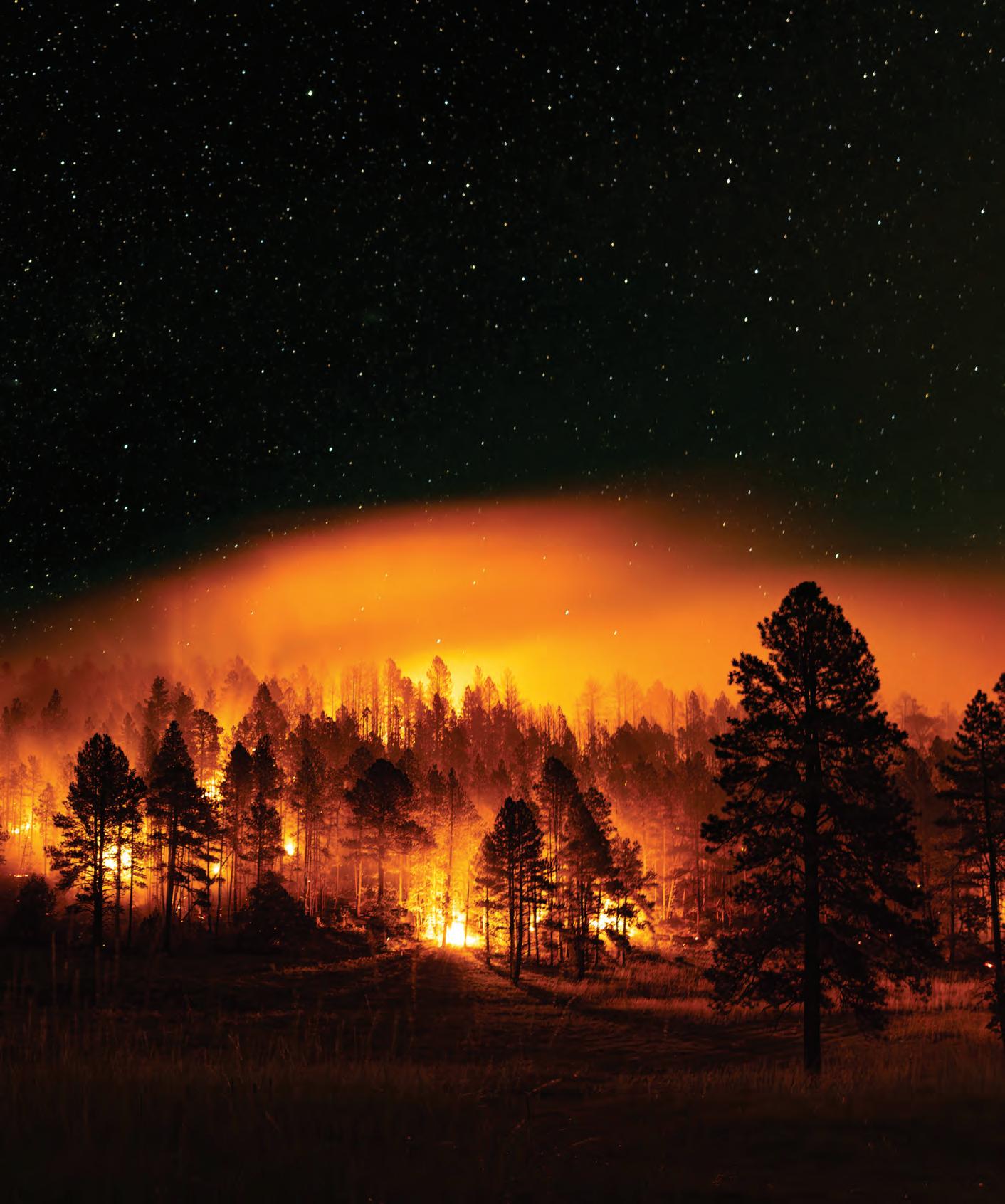

2022 study of fire activity across the Western states using satellite data that has been gathered since 1984. On average, the annual burned acreage has increased by 3.6%, or about 104,000 acres every year. And because averages can sometimes hide more dramatic trends, Abolafia-Rosenzweig further analyzed the study period and split it in half, looking at fire activity between 1984 and 2000 and then comparing it to fire activity between 2001 and 2018. In the first period, 27.4 million acres burned. In the latter period of years, the burned acreage more than doubled to 55.9 million acres. And though it may seem intuitively obvious, the nature and intensity of bigger fires have also changed. In his book, “Fire Weather,” John Vaillant details the catastrophic 2016 Fort McMurray fire in Alberta, Canada, that burned 1.5 million acres, displaced 90,000 people and caused an estimated $4 billion in damages. The temperature at the fire front reached 1,000 degrees Fahrenheit, causing violent updrafts of hot air, smoke, and toxic gases that reached 30,000 feet into the stratosphere. With the updrafts came equally violent downdrafts on the outer edges of the rising column. The downdrafts acted like a giant fan, pouring oxygen onto the inferno.
Another phenomenon at Fort McMurray—only observed and identified in fires of the last 25 years—was that of fire-generated lightning and hailstorms. As the mix of soot, water, hot air and other gases reaches the stratosphere, it cools and condenses into hail and rains down. The violent updrafts can—as they did in Fort McMurray—also generate what is called a pyrocumulonimbus cloud (pyroCB), a thunderhead created by the fire. While fire embers
can travel five miles or so with the right winds, a pyroCB can spread lightning and, therefore, fire 50 miles in any direction. As Vaillant points out in his book, these pyroCBs were witnessed in the previous century but were always associated with volcanic eruptions, not wildfires.
That the nature and scope of wildfires in the West is changing is not in dispute. The more pressing question is: Why is it happening?
Fuel, Oxygen and Heat…a chain reaction
Anyone who has gone camping or has a fireplace intuitively understands fire and what it takes to start one. But what exactly is fire?
In short, it is a chemical reaction—one between oxygen and cellulose, which is the structural element of plants and trees. When wood (cellulose) is heated up to 572 F (its flash point), it releases hydrocarbon gases that react with oxygen to form carbon dioxide and water. Importantly, heat and light are given off in the reaction. In the fire world, the reaction is simplified into the “fire triangle,” in which fuel, oxygen and heat form the three vertices. In fact, there is a fourth critical element—a chain reaction—that keeps providing heat, enabling the fire to continue. Some refer to this as the “fire pyramid.” The key fact about the pyramid, or the triangle, is that if just one of the elements—oxygen, fuel, heat, or the chain reaction—is taken away, the fire stops.
To understand why fires have gotten bigger, more frequent, and more intense, one need only look at these variables. Clearly, the oxygen content of our atmosphere hasn’t changed over time. Granted, once a fire starts, a fierce wind can introduce more oxygen into a wildfire. That notwithstanding, no one has yet shown that the Western climate has become windier over the last century of forest fires.
Beth Lund joined the U.S. Forest Service in 1976 as a 20-yearold firefighter. At her retirement in 2024, she had risen to Deputy Director of Fire and Aviation for the Intermountain Region. She was also one of only 16 Type I incident commanders nationwide, those who lead and manage the largest and most complex wildland fire incidents. One of those major fires included the Beaver Creek
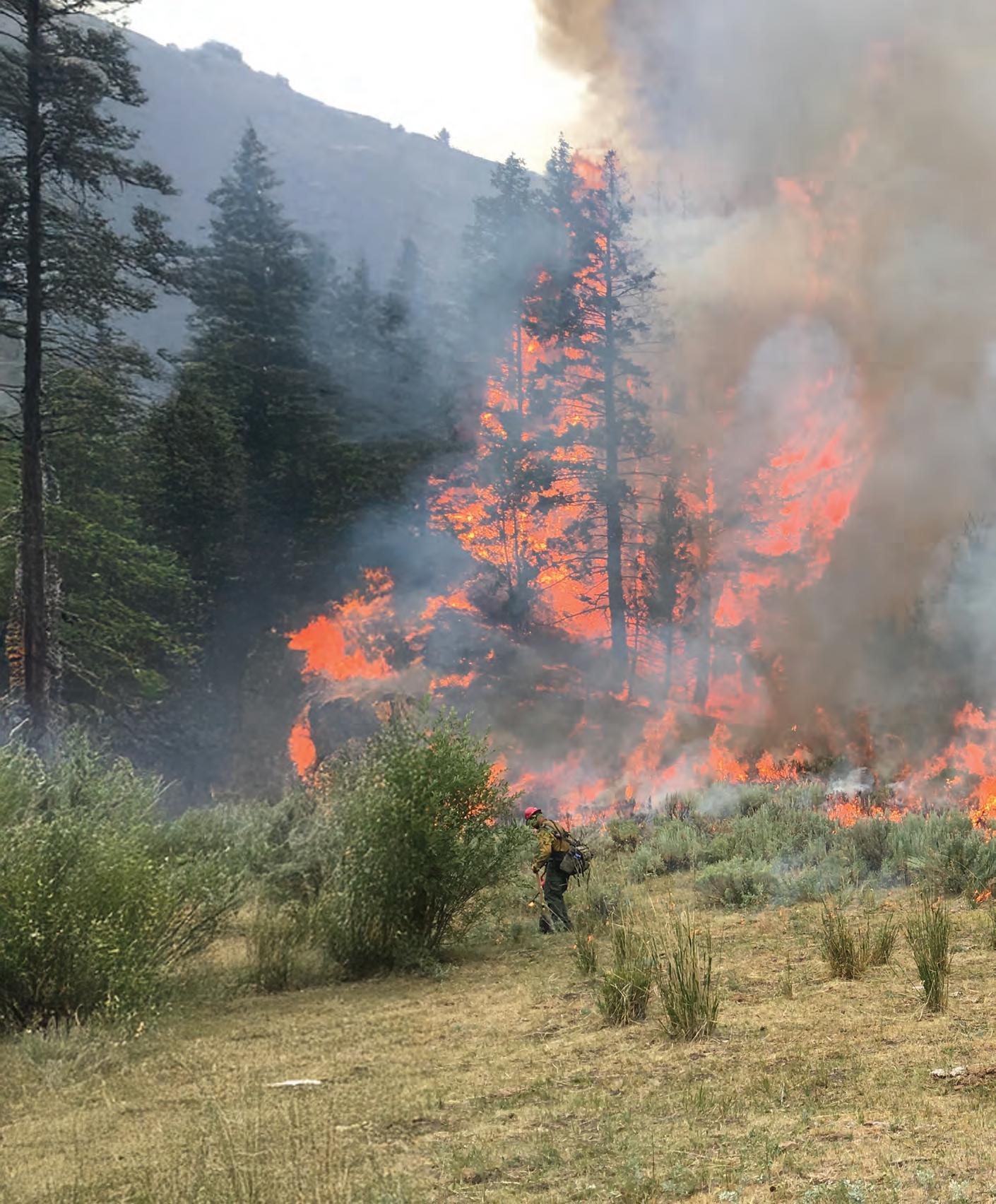
HOTSHOT GEAR
Hotshot crews are equipped for extended shifts on the fireline, often operating self-sufficiently for up to 48 hours. Typical gear includes:
Nomex fire-resistant clothing and a hardhat
A line pack containing water, meals ready to eat, a fire shelter, a first aid kit, headlamp, and hand tools
Pulaskis, chainsaws, shovels, and drip torches
Radios to maintain communication with leadership and support staff
SMOKEJUMPER GEAR
Smokejumper equipment is designed for both aerial delivery and immediate fire suppression on the ground. A typical gear list includes:
A padded jumpsuit with integrated body armor
Helmet with face shield
Main and reserve parachutes
A jumpsack that contains personal supplies and fire suppression tools
Chainsaws and additional hand tools that are dropped separately via cargo chute


fire in 2013 that ripped through the Sawtooth National Forest near Sun Valley, Idaho, burning nearly 115,000 acres.
In an interview prior to her retirement, Lund pointed to several factors that have changed since she began fighting fires. “The scope and scale of fires since the 70s has gradually grown…The number of people that are out in the woods started to increase because the population grew, so there were more human starts. And I think the forest health is definitely an issue … Really, the root cause of forest health declining is fire suppression in and of itself … that’s probably commonly known … After the big fires of 1910, we went on this campaign to put everything out. ‘Put everything out by 10 a.m. the next morning.’ It was called the 10 a.m. policy.’”
The U.S. Forest Service, established in 1905 by President Theodore Roosevelt and led by Gifford Pinchot, was charged with managing the public lands that Congress had designated as “forest reserves” in their Forest Reserve Act of 1891. These “reserves” later became known as national forests. While the original mission of the USFS was to ensure the nation had adequate timber supplies, as well as quality water sources, the Great Fire of 1910 shifted the organization’s focus.
The Great Fire of 1910 raged through Idaho, Montana and Washington, burning nearly 3 million acres and killing 85 people, 78 of whom were firefighters. The scope of destruction took the country by surprise. Lawmakers doubled the Forest Service budget, and the organization refocused its efforts on “total fire suppression.”
In 1935, the then head of the
Forest Service, Ferdinand “Gus” Silcox, formalized the suppression approach with the “10 a.m. policy.” It was a policy that was in place until 1978, and that inadvertently led to great build-ups of fuel in the national forests. Forests became older, denser, and filled with dead and dying trees waiting to ignite.
‘‘ We’re trying to manage fires more now. And we have a different risk management process and decisionmaking and responder risk tolerance. We’re really trying to manage exposure and responder risk, more so than in the past.”
– JAKE RENZ
Researchers have been able to show, however, that over time, our forests have gotten hotter. In a 2018 paper, “Climate Change and the American West,” John Abatzoglou and Lauren Parker reported that between 1895 and 2016, air temperature in the Western states increased by 2.3 degrees F, with the majority of that increase coming since 1970 and with four of the five warmest years coming since 2010. Hotter air temperatures generally mean drier air and, subsequently, drier fuels in the forest, which is measured by the metric “aridity.” Drier fuels are more flammable. Because they have less water in them to act as a heat sink, drier fuels can more quickly reach their flash point.
In a recent interview, Abatzoglou provided additional

data through 2024 that continues to show the exponential relationship between increasing forest fire area and aridity.
The increase in hot, dry weather has other implications for forest fires besides drying out the fuel load. It can make forests more susceptible to attacks from insects and pathogens.
“The same factors that are facilitating chronic drying of vegetation that enable fire are being reflected in increased drought stress that can lead directly to mortality or aid in bark beetle impacts,” Abatzoglou said. “… Studies on bark beetle have highlighted three factors that favor outbreaks: one, lack of very cold winter temperatures that kill off beetle populations, two, warmer temperatures during the year that increase reproductive cycles, and, three, drought stress that weakens tree resistance to attack.”
What has also changed over time is the cost to suppress wildfires. The National Interagency Fire Center has tracked costs to suppress fires nationwide from 1985 through 2023. In 1985, that total cost was $679 million (in 2023 dollars), and $235 per acre burned. In 2023, the total cost was $1.96 billion, with a cost per acre of $545.
Certainly, the tools, as well as the protocols, for fighting fires are more sophisticated than they were 39 years ago. Jake Renz, the North Zone Fire Management Officer (FMO) for the Sawtooth National Forest, is in his 20th year of fighting fires in the West. Since he started in 2005, much has changed, on both the fire side and the fire-fighting side.
“We’re definitely getting drier. We definitely have more people
out there, and there’s more interface,” Renz said. “And the number of acres has increased. It’s due to a lot of factors: We’re trying to manage fires more now. And we have a different risk management process and decision-making and responder risk tolerance. We’re
A “start” might be reported by the public recreating in the forests, a backcountry pilot, or perhaps by a Forest Service-contracted night flight using infrared technology to spot heat signatures. To confirm the start, Renz and his team will do a reconnaissance flight via helicopter to determine if and how firefighters might access the area: can smokejumpers get in there, is there a landing zone for helicopters, is there road access for an engine crew?
If there is access, the next question Renz has to answer is: Are there critical values at risk? Generally, these are things humans have built or introduced into the forest: cabins, infrastructure, power lines, and the like.
As a fire grows, Renz and colleagues will start ordering up resources as appropriate and, if available: HotShot crews, smokejumpers, helicopters, rappelling teams, retardant flights and air tankers. When a fire gets to a critical level, a Complex Incident Management Team will be called in for a 14-day stint. This will be a staff of 90 that has the experience and qualifications to attack a large fire.
Of course, large fires in the West rarely happen in isolation, and so present a dynamic and multi-front challenge. There are often several fires burning at once. And this is when the National Interagency Coordination Center (NICC), located in Boise, Idaho, comes into play. NICC will coordinate the mobilization of resources nationwide, depending on relative needs and availability. As the climate in the West gets hotter and drier, the fire seasons longer, the work of NICC has increasingly become a mad scramble to shuffle resources and personnel from state to state, fire to fire.
really trying to manage exposure and responder risk, more so than in the past … Now, we don’t necessarily stick folks in the nastiest, gnarliest spots.”
A wildfire “start” can come in many forms but is categorized as either a natural start—lightning— or a human start, which could be from a campfire, cigarette, car tail pipe, or even arson. The Park fire in California, which burned 429,000 acres, was started by a man pushing a burning car into a ravine.

Laura Lowery, an entomologist with the U.S. Forest Service, has studied mountain pine beetles and Douglas fir beetles extensively, particularly in the Sawtooth and Boise National Forests. She explained that these rice-sized beetles, like wildfire, “…are supposed to act as a disturbance agent in the forest.” The Douglas fir beetle, for instance, attacks only trees that are greater than 20 inches in diameter and that are under stress for one reason or another, be it drought, defoliation caused by a pathogen, or wildfire burn that has not killed the tree. Lowery said that the trees give off ethanol when stressed, and the beetles can sense that. They will then communicate with each other via pheromones to attack a stand of trees. As beetles kill trees—it may take a thousand or more to kill a tree—they open up gaps in the forest that then let in sunshine and allow new trees to grow. In this way, the forests become “resilient.”
“Where you run into problems is when you don’t have enough gaps in the forest and new trees aren’t growing, and you get lots of old trees … and that’s where we are now,” Lowery said. “Through fire suppression over the decades, when we kept fire out … trees kept growing older and older.” The homogeneity of the forest becomes a vulnerability; large outbreaks are more likely to occur. And large outbreaks kill big swaths of forest, introducing still more dry fuel into the mix.
The dynamic works both ways. Lowery noted that after big fires—like the 2007 Castle Rock fire and the 2013 Beaver Creek fire in the Sawtooth National Forest—there are large numbers of trees under stress, either burned but alive or simply stressed by drought or pathogens such as dwarf mistletoe. And so, the beetles thrive, and, as happened in 2007 and 2013, much of the forest seems to turn pink and red with dying or dead trees, all of which become kindling for another big fire. A feedback loop sets in.
What can break the cycle, according to Lowery, is “an untimely cold,” a cold snap in early spring or fall. “But what the research is showing is that we don’t have enough cold in the winter to kill them (beetles) under the bark. Not like we did in the past … so that’s a difference from the early 1950s or earlier.”

Surprisingly, the majority of big fires are caused by humans, not lightning. But as Renz pointed out, this may have more to do with
When the smoke clears, a different kind of mission begins—one rooted not in suppression but in renewal. Wildfires, while often devastating, can also be a natural part of a healthy ecosystem. In fire-adapted regions like the Great Basin, flames help clear overgrown vegetation, return nutrients to the soil, and create space for new growth.
Particular species, like lodgepole pines, actually depend on fire for regeneration. Their cones only open under intense heat, releasing seeds into the freshly cleared landscape.
However, not all burned areas recover easily. High-severity fires, invasive species, and steep or degraded terrain can hinder natural regeneration. In these cases, the BLM deploys Burned Area Emergency Response (BAER) teams—multi-agency units of specialists tasked with evaluating damage and initiating rehabilitation.
Stabilization is the first step. Treatments like aerial seeding, erosion control, and herbicide application protect the soil and prevent invasive species from taking over.
Longer-term recovery projects follow in the months and years ahead. These efforts may include planting native vegetation, restoring wildlife habitats, and monitoring soil health and water quality to support long-term resilience. Each site is approached with a tailored plan based on ecosystem type, fire severity, and weather conditions following the burn.
Fire can be regenerative, but only if managed carefully after the fact. It’s a delicate balance.
As climate change drives larger, more frequent wildfires across the West, smokejumpers and recovery teams are adapting their strategies. From the adrenaline of the jump to the patience of planting new life, these fire professionals represent the full cycle of wildfire management—from ignition to renewal.
For the smokejumpers of the Great Basin, each mission begins with a leap— and continues long after their boots touch the ground.
single trees that we catch than 100,000 acres.”
Often called the Second Industrial Revolution, the latter years of the 19th century were a time of roaring economic growth and development in the U.S. Railroads expanded west, telegraph lines went up, factories were built—extraction industries— coal, timber and minerals— flourished. When an assassin’s bullet ultimately ended the life of then-President McKinley on September 14, 1901, not only did a new president take office, but a new era—the Progressive Era— took hold. Theodore Roosevelt was a Republican who deeply appreciated the Western forests for their aesthetic value, but he was also a politician who viewed them as the key to sustaining America’s growth through the timber they generated and the watersheds they protected. While deeply influenced by forester Pinchot and naturalist John Muir, Roosevelt single-handedly ushered into the 20th century the idea of conservation as a political and economic way forward for the world’s industrial leader.
timing. Humans tend to start fires when the weather is conducive to wildfire: hot and dry. “Generally, when a storm rolls through, there is usually moisture involved with it. The RH (relative humidity) goes up, the temps go down, and the fire doesn’t generally rip. It can, but there are definitely more
A century and a quarter later, the forests that Roosevelt put in reserve for the American people—230 million acres and 150 national forests—endure as the living, breathing heart of the Western landscape, albeit with the imminent threat of a rapidly warming climate. Granted, all of life is predicated on evolutionary change; however, the changes the world faces now are orders of magnitude faster than biological, ecological, and, most importantly, political systems can adapt to.
Fire changed the course of human history once before. It may change it again. ï
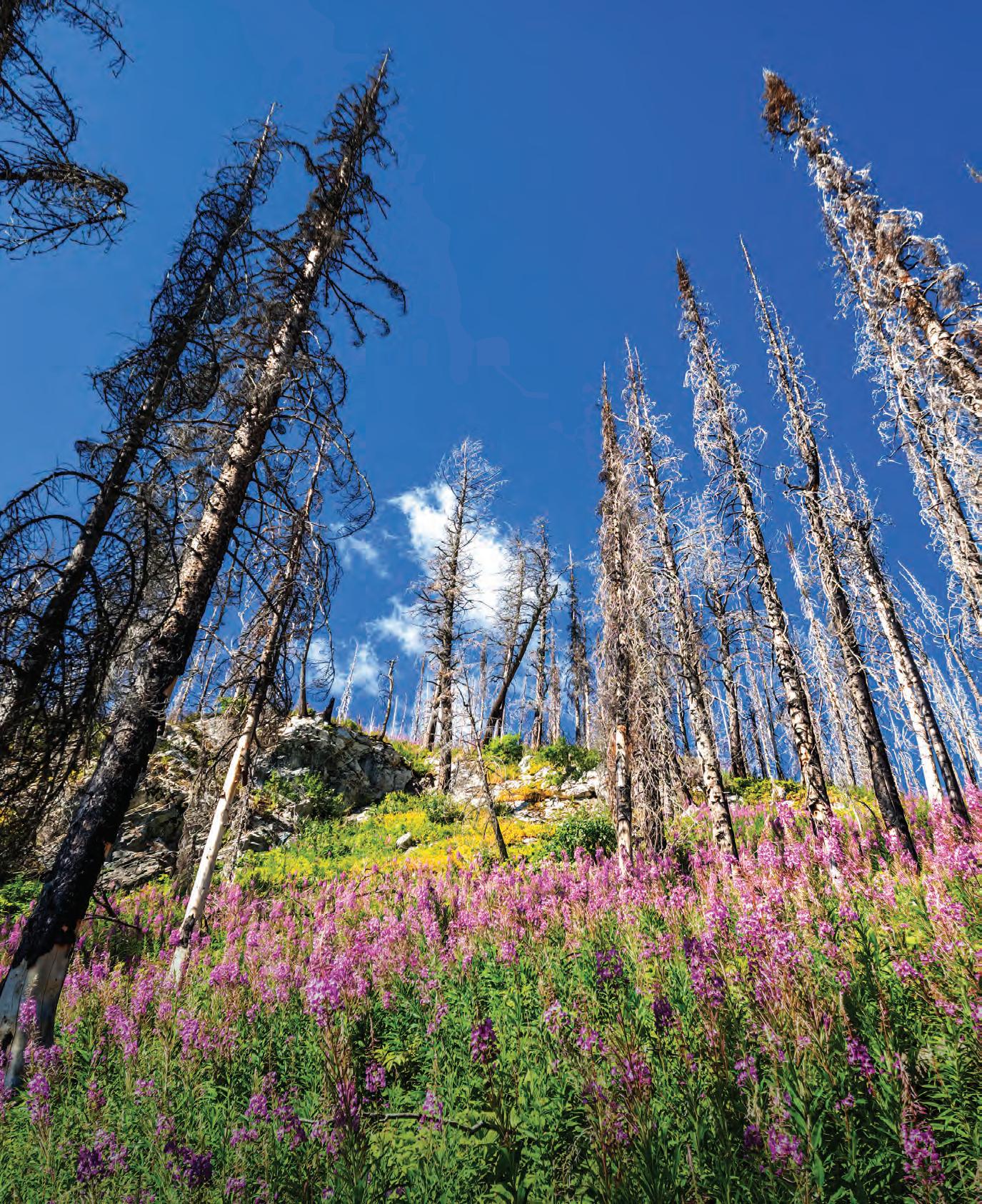
BY MARK DEE
In 1999, Kathleen and Brian Bean drove east of Carey to the land that would become their legacy. The Bay Area couple—Brian, a retired Marine turned investment banker, and Kathleen, a development director for The Nature Conservancy’s California operation—set out for a new start, a place to put their visions of conservation to concrete work. Eventually, they found a ranch.
The catch: They’d have to learn to run it like one.
“I thought it was crazy,” Kathleen said earlier this year. “I thought it was a really big idea. And I wasn’t so sure we could pull it off. But Brian was determined, so away we went.”
Today, Lava Lake Lamb’s reach spans nearly 825,000 acres—24,000 of deeded ranchland with grazing allotments encompassing another 800,000. The Beans’ project runs 125 miles tip to tail, rising some 8,000 vertical feet from the sagebrush steppe of the Snake River Plain to the highest alpine peaks of the Pioneer and Boulder mountains, brushing 12,000 feet high.
For Brian, it has become a laboratory larger than Rhode Island. He remains energized by the details and by Lava Lake’s central question: How can a ranch raise its livestock and restore the land they graze for everything else that lives there? The answer he’s found requires a different sort of bottom line.
The task of herding sheep hasn’t really changed since John Hailey, the city’s namesake, trailed his first bands into the Wood River Valley during the 1860s: Keep the hooves moving, the flocks safe, and the lambs fat. Where it was managed at all, the range was managed in broad chunks, with flocks taking what they could from allocated acres and, hopefully, leaving enough for next season’s migration nearby. The Beans decided to approach it the other way. What didn’t they want to take—and what other values could be found on the land? Working with The Nature Conservancy, they mapped everywhere a sheep might go and estimated everything it might eat. Then, they blocked off portions to leave for everything else.
Brian Bean could tell you more—much more. And, in her way, so could Kathleen, whose patient, loving cadence has as much to do with Lava Lake’s success as Brian’s bookish precision.
In some ways, the ranch represents a return to both of their roots. Kathleen grew up on a farm in Iowa before her family decamped for California. Brian studied botany and biology until he found a career
in finance. And at the ranch, they’ve deepened their passions. While Brian developed his grazing protocol, Kathleen went back to school, this time to study theology. Her day job is as assistant rector at St. Thomas Episcopal Church in Ketchum. The link between the two, she says, “is obvious and easy.”
“We are obligated—it should be our privilege and joy—to care for the earth, for all creatures,” she said. “God loves everything that God made, and that includes insects and rare plants and sheep and people.
“We’re all in this together.”
Twenty-six years in, this ad hoc motto has found its way into the heart of the Beans’ project. For both the Beans, the need for these connections— for Brian, physical; for Kathleen, spiritual—is as focused now as ever. Their customers seem to agree. Lava Lake entered the market in the early days of the modern local food movement, 81 years after Idaho’s 1918 herding peak. In 2024, the state grazed about 10% of the 2.65 million sheep it ran back then. In a small way, Lava Lake still aims to revamp the state’s heritage industry and to use it as leverage in the burgeoning push to bring food closer to home.
“Everyone’s heart is in the right place,” said Julie Johnson, owner of NourishMe, a Ketchum grocer specializing in local food, including Lava Lake lamb.
When we spoke in March, the Beans had put the heart of the Lava Lake ranch on the market. Their tone swayed, sometimes a bit uncertain, other times elegiac—a couple weighing their next act while considering the meaning of their last, on the land and what lives there, on the industry and the people they’ve come to love. For friends they’ve made along the way, it’s already clear.
“It’s a really powerful act to change the way people view ranching in Idaho,” said Amy Mattias, executive director of the Sun Valley Institute for Resilience and a one-time Lava Lake employee. “A lot of people in our community don’t necessarily think highly of ranching because they’ve seen it done poorly in other areas and in their beloved public lands. I think the Beans have shown a lot of folks that it can be done differently. And, when it’s done in that way, it can be beneficial to us all.
“Plus,” Kathleen added, “people love having Lava Lake Lamb on the menu.”


BY BEN BRADLEY
As a recent addition to the local business landscape of the Wood River Valley, Defense Technology startup Forterra breaks the mold of the typical mountain town business that the Sun Valley area has attracted for generations. Unreliant on the local tourism economy, Forterra has been steadily expanding its operations at both its Carey test facility and Ketchum operations office, thanks to Valley local Scott Sanders, who serves as Forterra’s chief growth officer.
Sanders was born and spent his early years in Seattle before moving to Ketchum in 1996, entering fifth grade at Hemingway Elementary School. He and his family had ties to Sun Valley that go back to the beginning of the resort itself. Sanders’ grandparents were among the first droves of eager skiers, who began enjoying Idaho’s idyllic slopes in the 1930s and never stopped.
Like many local Ketchum kids, Sanders developed a love for skiing and the expansive “backyard” Idaho’s public lands provided. “In retrospect, I had a really great childhood growing up in the Valley,” says Sanders. “I really developed an appreciation for the incredible access to nature that you get in Sun Valley.”
After graduating from Wood River High School, Sanders knew that he wanted to experience life outside the Valley. At the time, a nearly ubiquitous television commercial for Norelco electric razors, of all things, would serve as an unlikely inspiration that set Sanders onto the path of military service. The spot featured Virginia Military Institute (VMI) students trying out the company’s latest offering and piqued Sanders’ curiosity.
After consulting with some VMI alumni and hearing that the institute and its program were famously difficult, Sanders knew he wanted to take on that kind of challenge, noting, “If you tell me I can’t do something, I’m definitely going to try to go do it.”
The year was 2004, and a good number of Sanders’ fellow Wood River Wolverines had either enlisted in the military or enrolled in service academies in direct response to the 9/11 attacks. For Sanders, who was not entirely certain he wanted to commit to military service, VMI offered the opportunity to experience an intense military program without needing to commit to service. The only service requirement was enrollment in one of the ROTC programs. Faced with deciding which of the ROTC programs to select (Army, Navy, Marines, etc.), Sanders took his cue from the upperclassmen he had seen around the campus. He noticed right away that many of the cadets who exhibited exceptional leadership skills and had their uniforms adorned with gold stars denoting academic achievement were in the Marine Corps ROTC program, and he decided to follow suit.
When he graduated from VMI in 2008, Sanders was commissioned in the United States Marine Corps, entering as a Second Lieutenant and Intelligence Officer in the Marine Corps. He would spend nearly a decade in the service,
eventually becoming an operator with Marine Forces Special Operations Command (MARSOC) as a Marine Raider.
In 2014, after multiple deployments, Sanders’ Marine Special Operations Team (MSOT) group was deployed to the Philippines to help reestablish a U.S. military presence in the country and continue the development and training of the Philippines military, with which the U.S. has shared a mutual defense obligation since 1951. Throughout their time in the Philippines, Sanders and his team needed to develop strategies to help them overcome not only the obvious language barrier but also the dramatic differences in training and experience. After MARSOC denied their petition to develop technology to aid in their endeavor, Sanders and his Special Forces cohorts elected to take on the challenge themselves. Through the cobbling together of available ‘off-theshelf’ technologies and some ingenious computer engineering of their own, they were able to create a serviceable solution, but the exercise impressed upon Sanders the huge technology gap facing service members in the field.
After suffering a bullet wound to his spine, Sanders concluded that his time in the military–and defense as a whole–was over. However, after meeting with the five co-founders of the Defense Tech firm Anduril, his mind was immediately changed. As Sanders put it, Anduril’s aim was to “redefine how technology is developed for the Department of Defense.” Given his first-hand experience with the technology deficit in the Philippines, the mission of Anduril was too compelling to pass up.
Over the next four years, Sanders found a home with the Anduril team, working alongside fellow combat veterans and computer engineers to create a meaningful impact on the tools available to America’s fighting men and women. While building out Anduril’s testing facility in southern California, Sanders ended up working with a landowner who happened to also own a considerable amount of property in Blaine County, just south of Carey. It was this connection that paved the way for Sanders to return to his hometown to continue his work helping the armed forces leverage technology to keep Americans out of harm’s way. After joining the Forterra team in 2022, Sanders was again tasked with finding a location for a testing facility, and he knew at once who to call.
The rugged landscape of southern Idaho offered the ideal terrain for Forterra to test their autonomous vehicle platform, as it perfectly mimics the extreme climate and topography their vehicles are likely to encounter on deployment. Sanders could not have asked for a more ideal opportunity to carry on his work while being afforded the chance to return to his hometown. “I found this very unique situation in life where I get to spend a lot of time in this place that I loved growing up, and want to live long term,” reflects Sanders. “But at the same time, I get to work on something super impactful that hopefully changes the way we defend our country and our way of life.”
BY KAREN BOSSICK
Amber Acker-Sanborn and her sister Maggie Acker-Buck can’t recall a time when they weren’t hanging out in their dad’s Sun Valley Animal Center. The two grew up attending the surgeries of alpacas and other exotic animals as their father, Randy Acker, performed hip replacements on snow leopards from the Idaho Falls Zoo and repaired broken legs on a bear cub and a circus tiger that performed in Las Vegas. Early on they realized there was only one career path for them: following in Dad’s footsteps.
“It was fun attending the surgeries of the two snow leopards. Not only were they beautiful, but they had such huge paws,” said Acker-Buck. “We grew up helping with the pet store and cleaning animals’ cages. And, when we were little, and an emergency came up, Dad would put us in a kennel, and we’d pretend to be puppies drinking out of little bowls.” Their childhood home was filled with everything from cats to cockatiels— animals from the clinic that the family would foster until they healed.
“I always wanted to be a veterinarian,” said Acker-Sanborn. “I love being with animals and the humans who are all about animals and their well-being. And I love working with my family. We definitely played ‘vet,’” she added. “Sometimes it still feels like we are playing vet.”
The Acker family includes Randy’s brother Mark Acker, who retired from Sawtooth Animal Center in Bellevue several years ago, and Scott Acker, who works at the Sun Valley Animal Center’s downtown clinic. Mom—Sue Acker—left her work at Montessori to fill in as a receptionist for the veterinary clinic one year and never left until she retired a few years ago.
Acker-Buck joined the Sun Valley Animal Center in 2010 after graduating from Oregon State University in Corvallis: “Sun Valley is a great place to live, and I was fortunate to be able to come back.”
After graduating from St. George’s University in the Caribbean, AckerSanborn treated military working dogs and civilian-owned pets on a U.S. military base in the United Kingdom while her husband Reid was in the U.S. Air Force. She traveled home to Sun Valley to work with her father during her husband’s deployments and returned permanently with her husband and son Ryder when Reid got out of the Air Force. Together, the sisters fill their days administering vaccines, doing wellness checkups and performing various surgeries.
“I enjoy helping animals heal,” said Acker-Sanborn. Like my dad, I have a special interest in surgery—some of my favorites being the tibial plateau leveling osteotomy and the total hip replacement,” she said. “Patients that undergo those procedures generally do well and return to normal activity.”
“We see a lot of dogs—and cats, too—who are brought here from outside Idaho—California, Washington, Wyoming, Nevada, Utah, Colorado, Montana, Alaska, even New York for hip replacements,” added Acker-Buck. “My dad teaches a lot of hip and knee courses, which leads to a lot of referrals.”
Sue Acker said she is proud of both daughters and believes they made Randy’s job a lot more fun as he was able to share with them, teach them, watch them learn.
Randy, who is transitioning to retirement, says he’s gratified that he’s leaving the clinic in his daughters’ hands. He was surprised but very happy when they decided to go into the profession and said it was a dream come true. They work together often and learn from one another. He will continue to help even after he retires. Acker-Sanborn said she felt fortunate to have had hands-on learning from her father in addition to her veterinary schooling.
“He has given me tips for avoiding complications that are not found in textbooks,” she said. “The biggest thing I’ve learned from my father is resilience. I am so lucky to have my dad as my mentor. I aim to be just like him in so many ways.”
The Acker family legacy began when Randy Acker moved to Sun Valley in 1979 from Fort Collins where he had attended vet school. His brothers soon followed.
Randy became acquainted with Sun Valley while backpacking here, and it was local veterinarian Bob Beede who suggested he go to vet school. When Randy returned, he ended up joining Beede the day after he arrived, taking the place of Beede’s partner who had just left. In vet school Randy put together the skeletons of dogs that had been used in experiments studying the effects of radiation. Randy sold them to college professors to make a little extra money.
His love of tinkering paid off when he and Ketchum engineer Greg Van Der Meulen invented the BioMedtrix Canine TATE Total Elbow Replacement, following that up with the TATE Total Ankle Replacement. Both were named after Amber and Maggie’s childhood yellow lab, Tate, who had elbow dysplasia and pain associated with end-stage osteoarthritis of the joint.
Acker-Buck said it’s nice that her father and uncles are still available to help: “It’s great having this all in the family—we’re very lucky to have support.” ï


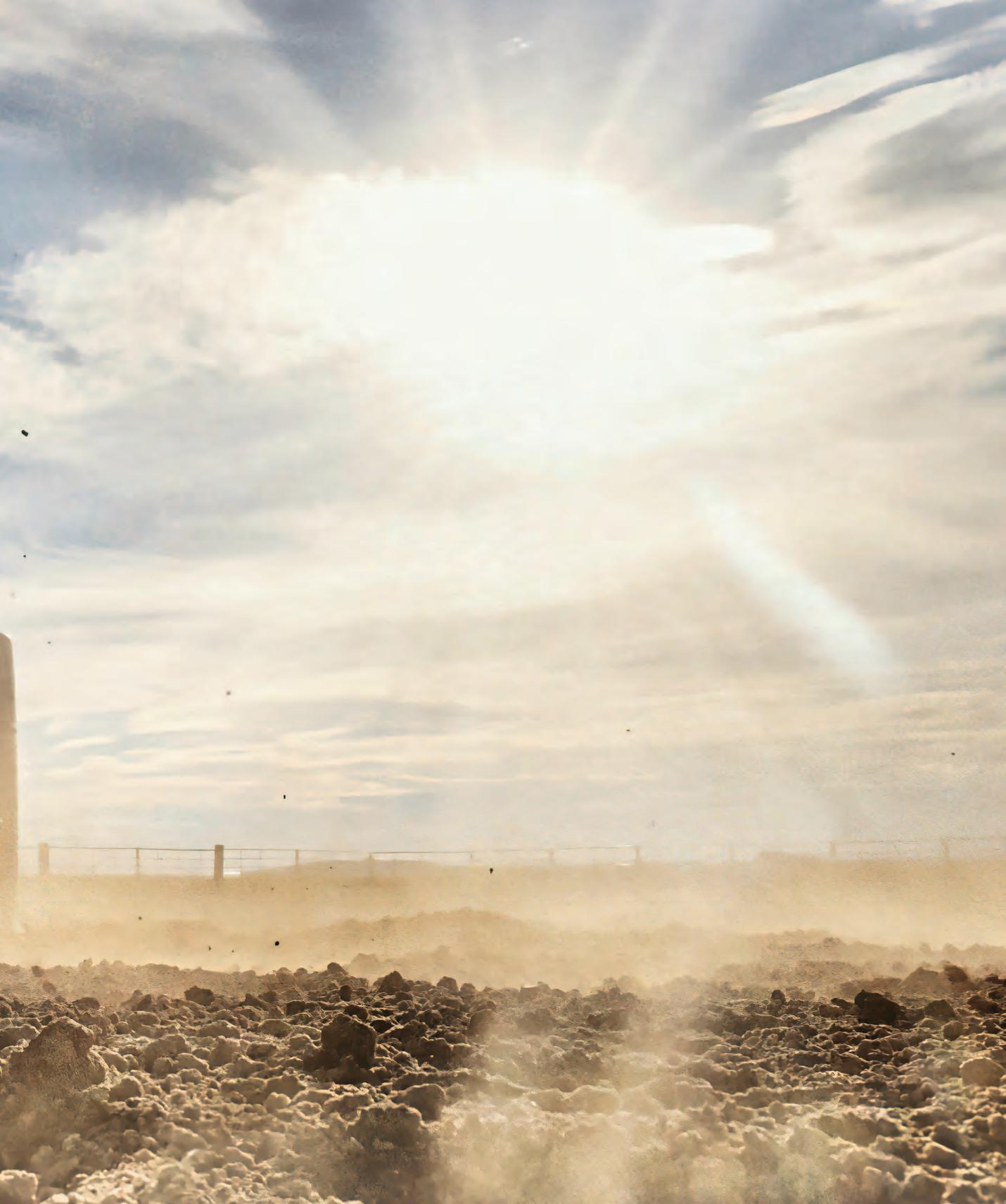
WORDS BY PATTI MURPHY PHOTOS BY HILLARY MAYBERY AND RYANN DEAVILLE
The horse explodes into the arena at top speed, kicking up dirt as it races toward the first of three barrels placed in a triangular pattern in the center of the arena. As it blasts toward the first barrel, the rider needs to know when to slow down just enough to make a tight, hairpin circle around the barrel without knocking it down. The team then gears up to a full gallop to perform the same gutsy moves around the next two barrels. After the final turn, they race against the clock toward the exit. The entire run is over in mere seconds.
This is women’s barrel racing, an adrenaline-fueled sport known for its speed, precision, athleticism, and a trusting partnership between horse and rider. It’s a sport often won by margins of hundredths of seconds. There is no time for wrong moves or mistakes when you’re up against the clock and risking injury at every turn.
Barrel racing originated in the early 1900s as a way for women to participate in male-dominated rodeos. At that time, women’s barrel races were exhibition events judged for elegance and graceful movement of their horses and their own attire, rather than speed or performance.
In 1948, 38 ranch women met in Texas to form an all-female rodeo sanctioning body, the Girls Rodeo Association (GRA), renamed Women’s Professional Rodeo Association (WPRA) in 1981. The WPRA has played a crucial role in setting standardized rules for barrel racing, including the official cloverleaf pattern, which emphasizes speed and control. Through the years, female barrel racers have revolutionized the rodeo world, proving over and over that they are among the most talented and fearless athletes in professional sports.


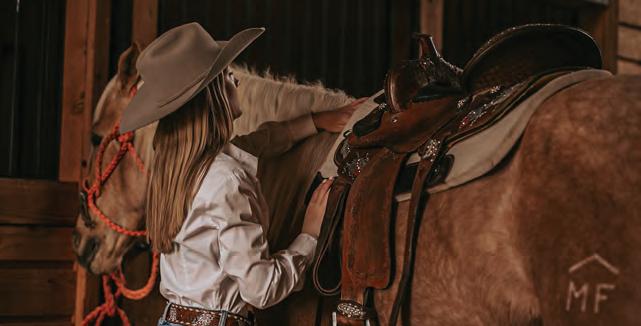


Futurities are generally for young horses, typically four and five years old in their first year of competition. They cannot have competed in any barrel racing events for money, prizes, or points before a specific date.
Derby races are for horses that are typically five, six, and seven years old. They may have competed in futurities or other barrel racing events.
Maturity classes are generally open to horses older than the typical derby age, often eight years old and under, but the specific age range can vary depending on the event. Mature horses are experienced competitors that have typically run in futurities, derbies, and open barrel races.



Bellevue barrel racer Cynthia Carroll began her lifelong love affair with horses, spending summers at her father’s ranch in California, where she learned to ride, rope, and compete in rodeo, a passion she continued through school into adulthood.
When she moved to Idaho, Carroll began competing in the Hailey rodeo. One day in 2020, as she was practicing roping at a friend’s house, she hopped on a mare there, and lost her heart to her soon-to-be new team roping head horse, Kate Shining Mirada, or Kate.
“I sent her to a barrel trainer, Brandon Labbee of 7B Performance Horses in Buhl during the winter of 2020-2021, and we started competing together that spring,” she said. “She’s an incredibly consistent horse, and if I do my part, she gives me the same run every time.
Carroll, Kate, and her other horse, GQ, compete two or three times a week in various jackpots throughout Idaho and northern Utah. Jackpots are generally barrel-racing-only events.
“Barrel racing saved my life.”
Carroll has had her share of wrecks, but there is one that she said was her life-saver.
“It happened at the Southern Idaho Barrel Racing Association’s (SIBRA) year-end finals in September 2023 on my horse, GQ. He ducked into the third barrel, and I pitched forward pretty violently and cracked my rib on the horn.”
She ended up in the emergency room. Doctors were worried about an internal bleed and ordered a CT scan. The result was that they found clear cell renal carcinoma in her left kidney, Stage 3. She had no symptoms.
“If I hadn’t broken my ribs on GQ, we never would have found the cancer. Barrel racing literally saved my life.”
She also had to have a full hip replacement and took 18 months off to recover, but is now back competing, having run eight races already in 2025. Her fastest time recorded on a standard pattern is 17.6 seconds.
“The relationship between rider and horse is the most important aspect of barrel racing. I mean, you’re a team, and you have to trust your horse. You’re going fast and turning hard, so you have to trust them.
“I love how different each horse is. Kate is a bit of a nervous princess with a huge side of bad ass, and she saves me a lot when I make a mistake. GQ doesn’t let me get away with anything; he’s a bit of a freight train, and we hit a lot of barrels, but the feeling when we get a good run in is incredible. The horse I just sold, Dice, loves a crowd, and I swear he thinks the fireworks at the Hailey rodeo are all for him, so he runs his heart out. At a jackpot, he sometimes runs hard and sometimes just phones it in, but he decides when he’s gonna go for it.
“But, when it all goes well, it really is the most exhilarating feeling in the world. I think it’s as close to flying as we humans are going to get.”
Addee Hall has been riding since she was a little girl. Now, 16 years old, the Ketchum sophomore is heading into her second year of competition.
Heading into high school, Hall was already competing in hockey, and she started thinking about adding another sport – barrel racing.
Although her parents were not horse people, they were completely supportive and began asking around about available barrel horses. Soon, Bellevue barrel racer Cynthia Carroll reached out to her.
“I had never met or talked with Cynthia before, but she was like, ‘Why don’t you come over to my house and ride some horses, and I can evaluate you and see what you can handle,’ said Hall.

After that meeting, Carroll put the word out for Hall. “I think I found my horse two months after that.”
“My horse was fully patterned and she just wanted to go, go, go,” Hall said. “I was still learning and wanted to take things slow, and it took me a long time to trust her and trust that I knew what I was doing.” At Carroll’s suggestion, she got barrel training in Buhl, which put her horse where she could feel the most confident to perform.
Hall competes primarily in southern Idaho through SIBRA, the Southern Idaho Barrel Racing Association, which not only hosts most of the events but also promotes good sportsmanship and fellowship among equestrians.
She said one of the hardest parts of racing is to be in sync with your horse. “You can be as ready as you can, but your horse may not always be on the same page. You need to be super in tune with your horse, like ‘this is your job, this is my job,’ and put your horse in the best spot possible so they can do their job.”
She’s made about 70 runs; her fastest time around the barrels is 19.0 seconds.
“Make connections because it’s helpful when you know people who are looking out for you. And, make sure you’re having fun. The racing community is super supportive, and they’re always there if you ever need anything.”
Lana Parker has a long and colorful history in barrel racing. She got her first barrel horse as a gift from her older sister and rode in high school and college. She was Miss Rodeo Idaho and the 1971 Miss Rodeo America, an annual pageant that selects the official spokesperson for the Professional Rodeo Cowboys Association.
She and her husband, Tim, have lived in Wendell for 43 years on 10 acres. “When I got married, I kept riding barrels, and then my daughter Kali came along, and she was a natural. When she was nine, I started putting her on some of my better horses. I was her mentor, and soon she was outdoing me and became my mentor,” Parker said.
Someone once asked Parker why she quit running barrels. “Well, it’s pretty hard when your nine-year-old girl beats you all the time,” she laughed. When Kali used to compete, she was among the top 25 racers in the

world. Today, she trains futurity colts and barrel horses on the Parkers’ ranch. Currently, she is working with about 16 head.
I n 1986, Parker and her husband formed the Southern Idaho Junior Rodeo Association (SIJRA), in which young rodeo athletes had the opportunity to compete and be exposed to the rules and processes of professional rodeo.
“Many National High School, Collegiate, and PRCA champions came through SIJRA, including Zane Davis, Cody DeMers, TW Parker, Kali Parker, Kini Wright, to name a few,” said Parker.
In 2005, Parker revamped the junior association into the Southern Idaho Barrel Racing Association, or SIBRA. The group produces professional barrel racing events at venues that provide good ground and safe facilities, and where riders and horses at every level can compete for prize money and awards.
“We try to give the barrel racing community the opportunity to compete and grow, and we are backed by some very giving sponsors, allowing us to offer bigger and better events, support the CSI Rodeo Team, and bring great opportunities to the Magic Valley such as the KK Run For Vegas.”
From the inception of the junior program, through the past 20 years of SIBRA, Parker said they have endeavored to live up to their motto and goals, “Making today’s contestant tomorrow’s champion!”
A standard barrel racing pattern, as defined by the Women’s Professional Rodeo Association, has the following dimensions:
• 6 0 feet from the starting line, called the scoreline, to the 1st or 2nd barrels
• maximum of 90 feet between barrels 1 and 2
• maximum of 105 feet between barrels 1 and 3, and between barrels 2 and 3
• m inimum of 60 feet from timers to barrels 1 and 2
• Penalties: 5-second penalty for knocking over a barrel
Barrel racing is run in a pattern that’s shaped like a cloverleaf. Horses start the pattern by running for the right barrel first and must end on the farthest barrel. The horse will do a figure eight around the first two barrels, then loop around the last before running back toward the gate. ï




The WPRA Rule Book states: Contestants’ appearance must be neat, clean, and professional. Any contestant whose appearance is deemed unprofessional will be fined. The fine will be $100.00. Contestants must wear collared long-sleeve shirts with either buttons, snaps, or a full-length zipper on the front of the shirt. Jeans without holes, Western boots and a Western hat must be worn for all rodeos. Helmets are acceptable for any WPRA competition. (Source: WPRA 2025 rule book)
WPRA: Women’s Professional Rodeo Association
PRCA: Professional Rodeo Cowboys Association is the world’s oldest and largest professional rodeosanctioning body. In 2023, the PRCA sanctioned 790 events in 37 states and three Canadian provinces. The National Finals Rodeo is the PRCA’s premier event.
NBHA: National Barrel Horse Association is the largest barrel racing organization in the world.
NHSRA: The National High School Rodeo Association is an international organization dedicated to promoting rodeo among high school students.
Jackpot barrel races are informal or local barrel racing competitions where riders pay an entry fee to compete, and the prize money (the “jackpot”) is made up of the pooled entry fees. They’re a popular format in the rodeo and barrel racing world because they’re often more accessible and relaxed compared to big, sanctioned events like those put on by the WPRA.
Entry Fee: Each rider pays to enter.
Payout: The total pot (jackpot) is divided among the top finishers, usually based on time. Divisions (D System): Often, they use a “D” system (1D, 2D, 3D, etc.), which splits the competition based on time differences from the fastest run. That way, more riders can win something, even if they’re not the fastest overall. So, even if you’re not a pro-level rider, you can still place and receive winnings in the lower levels.



w e d d i n g s
PHOTOS BY STEVE STEINHARDT ALL WORDS BY CRISTY SELLAS
Natalie Silk and Joe Harding both hail from San Marino, California which is where their childhood friendship began. This friendship lasted 15 years and then blossomed into love…fulfilling the secret dreams of both their families! And family is what this couple is all about. Joe used his great-grandmother’s ring when he proposed to Natalie on the beach in Cabo (suggesting that Natalie leave her Invisalign retainer behind when he proposed they “take a walk!”)
Natalie and Joe’s wedding weekend was the perfect merging of family fun and classic Sun Valley. From the rehearsal dinner at the Roundhouse with country music, huckleberry cocktails, and tear-jerking toasts, to the Trail Creek wedding and party for 255 family and friends. Many of the attendees were first time visitors to Sun Valley and couldn’t have been more enchanted by the magic of summertime.
The welcome party was casual and filled with kids and games and delicious BBQ. A big focus of this first gathering was a custom hat bar where guests could choose their own style and embellishments. It was a huge hit—they made 245 hats! Welcome bags for the guests included necessities like local cookies and custom koozies and golf balls.
The wedding day was filled with beautiful details: parasols for the ceremony; chocolate chip cookies, espresso martinis and a cigar bar for the late night; and a very special touch just for Natalie—surprise pink peonies—her favorite flower, out of season in August, sourced all the way from Alaska.
The Dads played a big part in the events of the day. Joe’s father, Dave, officiated the wedding and ended the ceremony with an Irish blessing—a nod to their shared Irish heritage. Natalie’s father, Steve, also paying tribute to the homeland, had both the families’ original Irish crests hanging in the tent. And on a lighter note, Steve also had a special shot ski made for the occasion!
Their wedding dinner was a sit-down formal affair, and then their fantastic band brought the energy and kept the party dancing until midnight.
Everything about the weekend and the wedding itself was bright and colorful and fun—just the way Natalie and Joe imagined it. Natalie spent her childhood making memories in Sun Valley at Christmas time and on the Big Wood during the Summer. A Trail Creek wedding filled with love and family and friends has always been her dream. Heather, their wedding planner, kept everything on track, and helped the couple bring their vision to life.
And because the couple (especially Joe!) are Swifties; their wedding would not have been complete without some of Taylor Swift’s music! Natalie walked down the aisle to Wildest Dreams and their first dance was Invisible String!
Natalie, who works in Influencer marketing, and Joe, a real estate investor, took some time off to honeymoon in Tahiti, Moorea, and Bora Bora. ï

Many of Joe and Natalie’s guests were first-time visitors to Sun Valley, so the couple focused on florals and decor that were bright and fun, as a way to share the magic of summer in the mountains!



s o u r c e
Venue and Catering: Sun Valley Company
Wedding Planner: Heather Minor Events
Photographer: Steve Steinhardt Photography
Videographer: Sam ENG Films
Bride’s Dresses: Lela Rose, Gianvito Rossi, Elizabeth Filmore
Hair: Danielle Anspatch
Makeup: Meredith Skilllman, Leah Webber
Flowers: Bloom Theory
Music: Bonnie Foster Productions, Sun Valley Ensemble
Invitations: Wouldn’t it be Lovely
Party Rentals: Studio 11 Staging & Events, That’s Entertainment, Xowyo Paper + Events, Blush Creek Chair Rentals
Photobooth and Dance Floor:
Sound Wave Events
Custom Hat Bar: Fallen Sky Stone





Our floral design is uniquely elegant for every occasion. Locally owned and operated, we take pride in meticulously creating thoughtful floral arrangements tailored for every occasion.



PHOTOS BY SEAN THOMAS
The Idaho Rocky Mountain Ranch in Stanley was the setting for all the fun and festivities during Natalie Kapp and Alexander Byrd’s July wedding last year. The Ranch has been a special place for Natalie and her family since she was a little girl and one of the first places she and Alexander vacationed together. And that’s what their wedding weekend felt like—an amazing vacation at the Ranch with family and friends.
Natalie, a Philadelphia native, met Alexander at the University of Virginia where they were close friends before their relationship turned romantic. Eventually, Alexander proposed on a secluded beach at sunset in the Bahamas.
Their wedding guests were welcomed with gift bags of necessities like Idaho potato chips, Advil and sunscreen as well as custom hats at a hat branding station! The Ranch was truly wedding headquarters as the welcome party was a cookout by the hot pool; the rehearsal dinner was family style in the Ranch dining room and the reception had open station style dining with cocktail hour flowing right into the meal which led right into the dancing led by The Downtown Band—keeping the dance floor filled all night.
Alexander and Natalie really wanted their guests to experience all the amazing ranch food and dining and were thrilled with the top-notch team at the Ranch who worked closely with their planner to make all their wedding visions come true.
One vision Natalie had: she wanted to be able to dance at her own wedding. Seven months prior to their big day, she had spinal surgery
and spent the following months working incredibly hard at her physical therapy to make sure that she was able to walk down the aisle and share her first dance with her new husband!
Not too tied to tradition, Natalie and Alexander spent the night before the wedding together and exchanged gifts of cufflinks and earrings to be worn the next day. Natalie’s bridesmaids chose their own dresses and Natalie’s dress was actually the first dress she tried on. When you know, you know.
Their weekend was filled was thoughtful moments and gestures: Natalie’s brothers made a surprise Shot Ski signed by all their guest which hangs in their apartment today. Late night snacks were homages to the couple’s hometowns: soft pretzels for Philly (Natalie) and ham biscuits for Richmond, VA (Alexander.)
Prior to the wedding itself, the wedding party found time to spend a day rafting on the river with the gang at White Otter who also provided transportation for those guests not staying at the ranch, and because he’s a big trivia buff, Alexander (with his sister) also organized a family trivia night which was a great way to bring the two families together. Lastly, Natalie’s mom worked with Sawtooth Brewery and Abby at Abby Armistead Art to create a custom label beer for the weekend: Love Byrd Lager.
After all the fun of the action-packed wedding weekend, the couple enjoyed a relaxing honeymoon in Paris, Provence, and Cannes. ï


s o u r c e
Venue: Idaho Rocky Mountain Ranch, Stanley
Wedding Planner: Londyn & Grey Events
Photographer/Videographer: Sean Thomas Photography
Bride’s Dress: Oscar de la Renta
Bride’s Shoes: Christian Louboutin
Hair: Feathered Flip
Makeup: Britt Davis
Groom’s Attire: Alton Lane
Groom’s Shoes: Lucchese
Bridesmaid’s Dresses: Choose their own dress.

Groomsmen’s Attire: Wore their own tux.
Flowers: Bloom Theory
Music: Kevin Ware, The Downtown Band
Food: Idaho Rocky Mountain Ranch
Beverages: Road Bars
Cake: Stanley Supper Club
Invitations: Abby Armistead Art
Officiant: Connie Blair
Party Rentals: That’s Entertainment





PHOTOS BY KIRSTEN SHULTZ
Tommy and Kendall met through a friend on the platform of the E train in New York City so their June wedding at the Trail Creek Pavilion was about as far away from their Manhattan commute as one could get. Tommy is a portfolio manager from New Canaan, Connecticut and Kendall hails from Houston, Texas and now works in Sales Finance at Google.
While on vacation in Turks and Caicos in 2023, Tommy surprised Kendall with a sunset proposal and they began happily planning their June ’24 wedding in Sun Valley which turned out to be a perfect romantic weekend filled with loved ones and friends and ideal summer weather.
The fun started with a welcome party Thursday night at Tommy’s parents’ Sun Valley home. Guests received goodie bags filled with the weekend schedule of events, a T & K cookie, bandanas and other weekend necessities like water and snacks.
The rehearsal dinner was held at Knob Hill and was “Texas Barbecue themed” since Kendall and her family are Texans—with Texas pride and a big love of BBQ! Family and friends dressed in their “Western Cocktail” finest to celebrate the happy couple and the Lone Star State.
The wedding itself was held at Trail Creek Pavilion—Kendall and
Tommy wanted the atmosphere of their special day to be very summery but also elegant—sit down dinner formality but with high energy and great music. Patrick and the LVB or Las Vegas Band (winners of The Knot “Best of weddings” 4 years in a row) brought every guest to the dance floor for song after song.
For the ceremony itself, Tommy walked down the aisle to “Standy by Me” by Ben E. King and Kendall walked to “Wildest Dreams” by Taylor Swift. Their first dance was to “Them” by Brad Paisley.
By the time they walked down the aisle though, they were “technically” already married because they had actually exchanged vows privately earlier that same day during their “First Look.” Their officiant, Kendall’s brother-in-law, shared some of their promises to each other to their friends and family during the ceremony. This sounds like a great way to give the vows the gravity and privacy they deserve while at the same time, getting the “important part” out of the way so no one has to worry about misspeaking or getting too teary to finish!
The couple honeymooned in the Seychelles for two weeks with a quick visit to Paris before returning to New York. ï
s o u r c e
Venue: Sun Valley Company
Wedding Planner: Amanda
Seaward’s Absolute Weddings
Photographer: Kirsten Shultz Photography
Videographer: Radion Photography
Bride’s Dress: Sareh Nouri
Bride’s Shoes: Stuart Weitzman
Hair: Daniel Anspach
Makeup: Chantelle Conway
Bridesmaid’s Dresses: Amsale
Flowers: Tara Bella, Bloom Theory
Music: Rudy Kremmer Quartet, Patrick and the VLB
Food: Knob Hill, Sun Valley Company
Invitations: Bloom Theory
Officiant: Brother-in-law
Party Rentals: Studio 11 Staging & Events, That’s Entertainment, Edge Event Productions, The Event
Escort Display: Bloom Theory







PHOTOS BY MELANIE DUNN
Local couple, Emily Sawyer and Jimmy Bowman tied the knot last Summer surrounded by their close family and friends and their adorable sons. Jimmy, a firefighter, popped the question to Emily, an events manager, on Christmas morning and the family rode the Sun Valley sleigh to Trail Creek Cabin that night to celebrate.
They started their wedding weekend with welcome drinks at the legendary and beloved Duchin Lounge. The wedding itself was performed at a friends’ home followed by sunset cocktails on their deck and an intimate reception in the Warfield Mezzanine which the couple transformed into the perfect wedding space with beautiful linens, florals, custom menus, and photographs. As an events manager, Emily planned the entire wedding weekend herself—crafting beautiful centerpieces for the tables and collaborating with Jimmy on all the customized and personal details from invitations to place cards!
The guests received welcome bags with hats, wine and koozies for the lake day the wedding party enjoyed up north, and Emily put together special gifts of jewelry for her bridesmaids—her two sisters, with the help of her cousin and her dear friend.
This wedding and the planning leading up to it was truly all about family and Emily’s and Jimmy’s children were very much a part of all the weekend events—even the ceremony. They wore matching outfits and walked in the processional and the oldest even kept the secret of Jimmy’s Christmas proposal for an entire week—not an easy task for a child!
Local singer, songwriter Kate Buxton performed “Guide Me Home” by Lenachka as Emily walked down the aisle and “Lover” by Taylor Swift during the recessional. Emily found her beautiful Justin Alexander gown at Julietta Bridal (after having chosen a completely different gown online!) but when you know, you know! And Jimmy had a suit made by Bespoke—quite a wardrobe change for a firefighter—but he enjoyed the process and even had the date of their wedding embroidered on the underside of the collar.
Friends and family agree that Emily and Jimmy balance each other and their foundation of friendship and respect is a strong one. Their blended family is filled with happiness and gratitude.
Emily and Jimmy traveled to Chicago for their honeymoon AND ran the Chicago Marathon while they were there! The couple that runs marathons together (and plans weddings together and blends beautiful families together) stays together! ï
As creatives, both Emily and Jimmy loved and cherished the time they spent collaborating on all of the custom, personalized details— from the invitation suite to welcome letters, menus, place cards, shot cards, signage and more.

s o u r c e
Venue: Private Residence
Wedding Planner: Bride
Photographer/Videographer: Melanie Dunn Photography
Bride’s Dress: Justin Alexander Gown
Bride’s Shoes: Custom Cowboy Boots
Hair/Makeup: Kasey Dixon
Groom’s Attire: Bespoke, Custom
Linen-Wool Blend Suit
Flowers: Floret Design Studio
Music: Kate Buxton
Food: Warfield Distillery & Brewery
Cake: Assorted Mini Desserts by Warfield Distillery & Brewery
Invitations: Designed by Bride and Groom
Officiant: Matthew Hall
Party Rentals: Procured by the resourceful Bride, who decided to purchase what they wanted rather than renting!




From their New York city rooftop proposal to their schooner sendoff at Grumpy’s, Erica and Barrett’s wedding story reads like a romance novel. California natives now living in NYC, Erica and Barrett have both always felt most grounded in the mountains of Sun Valley. Their wedding weekend was all about sharing their “happy place” with their friends and family.
Erica and Barrett greeted their out-of-town guests with welcome bags filled with chocolate chip and oatmeal raisin cookies from Bigwood Bread, a schedule of the weekend’s events, water and hydration packets as well as a custom Sun Valley deck of cards to honor Erica’s grandmother who was an avid bridge player! Even their “Save the Date” cards had a custom etching of Bald Mountain which was again featured in their invitation.
Erica credits her mother and Kacie at Bloom Theory with bringing her vision of their wedding day to life. Bucking tradition a little bit, Erica had a winding aisle instead of the standard “straight road to the altar” and this detail became the centerpiece of the ceremony—both dramatic and whimsical among the aspen trees on the upper lawn of Trail Creek. The planning team was able to incorporate formal elements like custom linens at the formal sit-down dinner but also keep things comfortable and homey with couches and comfy pillows and bowls of citrus on the bars. Plus, their band—Ben Mallare Entertainment—(at times 11 members on stage!)—was absolutely incredible and “instrumental” in making the party a true celebration.


As the premiere event rental company in the Sun Valley area, That’s Entertainment has everything you need to bring your vision to life. From classic china and stemware, to handmade tables and luxurious dining chairs, to sub-flooring and largescale tenting, we carry it all. We also sell wine by the case at the best prices in the valley! Whether you’re planning a dinner party for 12, a cocktail party for 75, or a wedding for 300, That’s Entertainment can help you make your next event an exceptional one.


September weather in Sun Valley is definitely unpredictable, and when the rain came down and the temperature dropped during the rehearsal and the dinner following at Enoteca, there were a few moments of panic, and extra heaters were ordered for the reception tent, but ultimately, the blue skies and Sun Valley sunshine prevailed!
Erica and Barrett were so excited to share Sun Valley with all their guests, and they were also thrilled to use such an incredible list of local vendors for their festivities. Both their photographer and their celebrant were technically “discovered” because of Erica’s dad’s love of fly fishing. Hillary Maybery photographed Erica’s dad on the river one afternoon and he asked her if she did weddings! And the family has known Pete Debaun from Silver Creek for many years and given his background in divinity, he was the perfect choice to officiate their ceremony.
Both sides of the family had their share of sentimental moments … Barrett carried a garter in his jacket pocket that has been worn through 75 years of his family’s marriages and Erica and her father both coincidentally gifted each other the same picture taken when Erica was a child. Her father handed her the photo as they danced their father/daughter dance and Erica had commissioned an artist to paint a watercolor of the exact same picture.
From the Western themed welcome party at The Warfield—with flower filled cowboy boots and playful signage from Bloom Theory to their final private “last dance” and sparkler exit, Erica and Barret’s special weekend was the epitome of a spectacular Sun Valley wedding. ï




s o u r c e
Venue and Catering: Sun Valley Company
Wedding Planner: Heather Minor Events
Photographer: Hillary Maybery Photography
Videographer: Carli + Beau
Bride’s Dress: Mira Zwillinger
Bride’s Shoes: Loeffler Randall Hair: Danielle Anspach
Makeup: Meredith Skillman, Lea Webber
Groom’s Attire: Bhambi’s Custom Tailors
Flowers: Bloom Theory
Music: Travis McDaniel, Valley Ensembles, Ben Mallare Events & Entertainment
Cake: Sun Valley Company
Invitations: Swell Press Paper Co.
Officiant: Peter Debaun
Party Rentals: Studio 11 Staging & Events, That’s Entertainment, Nuage Designs, Xowyo Paper + Events, Blush Creek Chair Rentals
Lighting/Production: Edge Event Productions
Photobooth: Soundwave Events
Custom Linens: MinhCraft/Etsy















PHOTOS BY HALSEY PIERCE
Catie Schmidt and Aaron Fabish’s extravagant wedding was a perfect mixing of classic Sun Valley wintertime fun and New England traditions. From skiing with family and friends and Après enjoyment at Apples to rehearsal dinner at the Roundhouse and a formal sit-down dinner wedding reception at the River Run Lodge, the party never stopped and the Metro Music Club (live music was a must for Catie and Aaron) kept the couple and their guests on the dance floor late into the night.
Sun Valley brought Catie, who is from Greenwich, Connecticut and Aaron, a Seattle native, together. The couple first met on Christmas Eve 2018 after the Torchlight Parade but the timing wasn’t exactly right until the Summer of 2020 just as the world was beginning to re-open after the pandemic.
Catie lost her father that same year, and an important part of the planning process was finding ways to honor Steve. “He was the life of every party, the ultimate girl dad and the one person that we both wished could have been there on our special day,” Catie said. The couple’s first dance was a mash up of Billy Joel’s New York State of Mind and September by Earth Wind and Fire—September 21st is Catie’s late father’s birthday.
The morning of the Ski Day, Catie and her sister, Maggie, skinned up Dollar to spread their father’s ashes, and at the reception, all the specialty cocktails were favorites of Catie’s Dad. The rehearsal dinner was held at the Roundhouse and Kacie Spenst of Bloom Theory, used Catie’s Dad’s World Class sailing trophies as décor on the bar.
The Roundhouse was almost transformed into a version of The Polo Bar (Ralph Lauren is Catie’s favorite designer) and the tables were named after Sun Valley legends—with a printed history of each personality as a conversation starter.





The wedding party didn’t just dine on the mountain, Catie and Aaron wanted their guests to be able to SKI while they were in town for the wedding so the welcome gifts included lift tickets to enjoy the incredible skiing and then the group met up at Apples—the couple’s favorite spot for Apres ski fun.
As she planned the reception at River Run, Catie brought her New England sensibilities to the mountains. She grew up with formal dinners for every holiday; her mother sets an incredible table, and she wanted her wedding décor to reflect those carefully curated seating arrangements, florals, and linens that she remembers from her childhood in Connecticut. So, with the help of Lili Hansen Events, Catie and Aaron were able to transform the ski lodge into the setting of an elegant Black Tie affair.
Catie knew the moment she got engaged that she wanted her wedding to be black tie and she started planning early for the different looks she would need. Again, she wanted her East Coast roots to be part of the overall vision for the wedding.
Allison Jadallah—Catie’s dear friend and owner of Julietta Bridal styled all of Catie’s dresses and accessories perfectly.
For the wedding, Catie wanted a classic style; she (and her mother) chose Mark Ingrahm’s “Lucy” for her bridal gown, and for her reception—or “dancing” dress, Catie wanted something more Hollywood Glam so she and Allison chose a Savannah Miller backless dress which had bow detail like the gown Catie wore during the ceremony—creating a through line. For the rehearsal dinner at the roundhouse, Allison organized an appointment at Mark Ingrahm Atelier in NYC and Catie found a stunning Elizabeth Fillmore silk dress with tulle overlay and crystal detailing that looked like snowflakes. The dress had a tulle jacket as well adding to the sophisticated look and making that ensemble the perfect choice for a winter wedding.
When Catie’s mother walked her down the aisle to Pachelbel’s Canon in D, it was hard not to feel the loss of their beloved father and husband, but Steve’s presence was felt in every moment and every toast and every thoughtful gesture throughout the weekend.
Catie and Aaron’s first dance was truly an ode to Catie’s father, and they used that moment to kick off the party. “My sisters and Mother joined us on the dance floor followed by the rest of our wedding party and all our family and friends—it was a perfect way to honor Stevie.” ï



s o u r c e
Venue and Catering: Sun Valley Company
Wedding Planner: Lili Hansen Events
Photographer/Videographer: Halsey Pierce Photo
Bride’s Dresses: Julietta Bridal, Mark Ingram Bridal Atelier, Savannah Miller, Elizabeth Fillmore
Bride’s Shoes: Manolo Blanik
Makeup: Chantelle
Hair: Natalie Westerhold
Groom’s Attire: Julietta Bridal
Bridesmaid’s Dresses: Julietta Bridal
Flowers: Bloom Theory
Music: Metro Music Club
Cake: Sun Valley Company
Invitations: Willow Paperie
Officiant: Reverend Jonah Kendall
Wedding Ceremony: St. Thomas
Episcopal Church
Party Rentals: The Event
PLAN THE PERFECT WEDDING WITH OUR EXCLUSIVE MAGAZINE FROM VENUES TO VENDORS AND SUN VALLEY MAGIC!
In Sun Valley WEDDINGS Vol. 2 , explore everything you need to plan the destination wedding of your dreams. Discover exclusive venues, trusted local vendors, weekend itinerary ideas, and expert tips to make the most of every moment—from welcome party to farewell brunch. Because in Sun Valley, your wedding is more than a day. It’s a memory you and your guests will treasure forever.
Look for Your Copy on Newsstands July 2025!



BY CRISTY SELLAS
By Joseph Rossano at the Gail Severn Gallery
The ‘Of Water’ exhibition will feature an installation of mirrored salmon-like forms, hand-blown from molten glass as well as paintings in graphite on panel that will include Salmon, Trout, Otters, Ducks, and Deer by Joseph Rossano. Photography of Salmon roe and rivers in the Sawtooth National Forest by Laura McPhee and paintings by additional
artists will round out the exhibition. An installation of over 100 salmon-like forms will suspend from the gallery’s 24-foot ceiling and form a salmon ball that viewers can walk within and around. These mirrored hand-blown sculptures suggest a ghost-like migration, capturing the fragility and resilience of wild salmon. Both elegant and reverent, the installation provides a space for meditation on this fragile ecosystem. Other works by Rossano will highlight riparian wildlife equally
impacted by dwindling salmon populations. These works represent not only the loss of species but the disappearance of a process in which salmon fertilize forests, feed predators and cycle nutrients between land and sea. To discuss this wider ecological impact, Idaho Rivers United has partnered with Gail Severn Gallery and Joseph Rossano to provide a series of panel discussions with experts, nonprofits, and tribal leaders.


Joseph Rossano is also the original artist and creator of The Salmon School which is an international traveling exhibition that brings to light the diminishing salmon and steelhead populations all over the world. The installation features a life-size school of mirrored salmon-like forms. These molten glass hand-blown salmon-like pieces are mirrored art, reflecting the viewer from every angle. The original forms were developed in conjunction with The Museum of Glass in Tacoma, Washington. Designers were able to create forms that were easy for other artists to replicate, so they too could demonstrate their shared concern for the plight of wild salmon.
Rossano describes the mirrored fish as “reflecting you,” and the surrounding “rainbow line” on the walls is the actual DNA sequence of the fish. This speaks to the resilience of the species—salmon and humans alike. Rossano hopes that viewers will not only see themselves in the fish but also see our connection to nature and acknowledge that we can be part of the solution.
At the end of the installation, a video screen shows diverse footage of wild salmon
from all over the world, capturing their natural beauty as they alternate between freshwater and saltwater habitats, spawning in rivers and then spending their adult lives in the ocean.
Rossano hopes that all who attend The Salmon School will see the merging of science, art and academia. He hopes that we recognize ourselves in the fragile transparency of these mirrored fish and can see that our strength lies in our shared humanity.
The Salmon School was first displayed at the Bellevue Arts Museum in Washington State in 2019. Since then, the installation has moved to the United Nations Climate Change Summit in Glasgow in 2021, was part of the Queen’s Jubilee at Balmoral Castle in 2022, and later showed at St. Margaret’s Church in Braemar, Scotland, that same year. Following its UK tour, The Salmon School returned to the Pacific Northwest and The Museum of Glass in Tacoma—as an ambassador for the United Nations Decade of the Ocean and the United Nations International Year of Glass.
But the The Salmon School is not simply an art installation.
According to the website, www. thesalmonschool.com, “The Salmon School is an international merger of art and science,
‘‘ Joseph Rossano has chosen to make things that are about something bigger than ourselves, about individuals and creatures— whether they be human or other—that need our help.”
in service to all trying to do good for salmon, salmon peoples, and the cold, clean water on which they depend.”
The Salmon School is a human ecosystem of diverse stakeholders—scientists, artists, politicians, advocates, Indigenous peoples, NGOs, and communities—working to ensure that wild salmon and the rivers they call home are preserved for many generations to come. The installation features artisans from four continents and includes more than three dozen community, scientific, and conservation organizations that have come together–many for the first time—as part of The Salmon School partnership.





Like the fish themselves, The Salmon School migrates worldwide, motivated by the plight of wild salmon and advocating for change.
As part of The Salmon School, local communities and schools have been engaged through education initiatives and art projects designed for younger artists, including “design your own fish.” These easier but related projects allow younger people to have access to the artwork of the Salmon School, allowing its reach to continue and extend both geographically and demographically.
The four lower Snake River dams, Ice Harbor, Lower Monumental, Little Goose and Lower Granite, were built by the U.S. Army Corps of Engineers between 1955 and 1975. The dams’ history is quite complex. Proponents of the dams believe they serve an invaluable purpose in navigation of barge traffic and the economy, agriculture, irrigation, and hydroelectric power generation for a
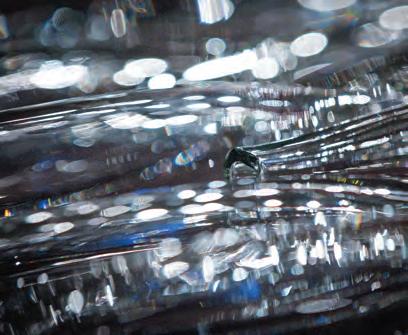
large area. Those who argue for the breaching of the dams point to their negative impacts on salmon and steelhead populations and the overall ecosystem. Critics also point to some studies suggesting that the cost of the dams may outweigh the benefits, especially compared to the economic costs of salmon recovery, as well as the negative impact on tribal communities who have lost resources.
Greg McReynolds, executive director of Idaho Rivers United, is helping Gail Severn Gallery to organize their upcoming Salmon School Exhibit. He has authored a special feature story: Tamáalwit Is the Law. His article explores the conflict surrounding the dams and the treaties made with the Nez Perce.
An excerpt from McReynolds’ story states, “The land governs us. The water that runs in the rivers is the same water that runs in us. We breathe the same air that the trees breathe. The soil that holds the trees was nourished by salmon. The land sustains us, and we are beholden to it. The Nez Perce call it tamáalwit – it is the law that binds us to the land and makes us accountable.” ï






BY WINSLOW BROKAW
Rudi finds joy in the process of playing with different color combinations and achieving the smoothest gradient transitions. “It never gets old trying to make it perfect,” he says. And the worst part? He laughs, “Waiting for the paint to dry.” Rudi’s wife, Cara Shumate, a graphic designer, plays a key role in determining each piece’s color palette and perfecting the stencil, helping Rudi bring his artistic vision to life.
In a world that values speed and instant gratification—where attention spans are short, trends come and go in the blink of an eye, and digital content sets a relentless pace—Rudi Broschofsky’s patience, focus, and dedication as an artist, curator, and partner at the Broschofsky Galleries in Ketchum stand in refreshing contrast.
His work is a synthesis of intellect, heart and craftsmanship, revealing a depth, beauty, and meticulous artistry that can only be achieved through time, care, and reverence for both history and reinvention.
His inspiration? “I’ve always had that,” Rudi remarks.
Long before he fully understood the significance of the art world, Rudi was immersed in it—road-tripping across the country with his family, visiting artists’ studios in Santa Fe and Taos, building relationships within the art market, and forming friendships with artists like Russell Chatham and Billy Schenck. When his parents’ art collection outgrew their home in 1987, they founded Broschofsky Galleries. Rudi was just five years old.
Raised on a remote property outside Ketchum, Rudi spent much of his childhood surrounded by nature, with few distractions beyond his imagination. “I grew up way out in Board Ranch on a dirt road,” he recalls. “I was isolated, and my nearest friend lived six miles away. Art was my outlet. Like any kid, I enjoyed it but never thought I’d pursue it seriously.”
That changed in 2012 when he was invited to participate in a show at Ketchum’s renowned Ochi Gallery. The experience pushed him to refine his style, commit to his craft and develop the meticulous stencil technique that would become his signature.

Drawing inspiration from street art—think Banksy’s bold silhouettes and the grit of urban murals—Rudi creates work that fuses the unconventional vibe of street art with the iconic imagery of the American West. Using an X-Acto knife, he meticulously cuts lines into what will be a stencil, sometimes spending months on a single piece. The process is meditative, requiring extraordinary precision and patience. Up close, the forms appear abstract and fragmented, but once you view from a few feet away, the image emerges—a buffalo, Native American portraits, cowboys on horseback and landscapes. His work reimagines classic subjects of the Old West through a contemporary lens—a bold reinvention of the Western genre.
“I take the concept of street art, like spray paint and simple stencils, and push it to the extreme,” Rudi explains. “My work is too detailed and meticulous for the street. I want people to enjoy that same bold, urban vibe in their own living spaces. I’m drawn to cowboy and frontier imagery because it’s so unexpected in this style. That contrast is what makes it exciting.”
Beyond his art, Rudi plays a pivotal role in shaping Ketchum’s artistic landscape. As partner and curator of Broschofsky Galleries, he honors its legacy while evolving it, ensuring the gallery remains a cornerstone for both historical and contemporary Western art. Broschofsky Galleries is one of the few places where the works of legends like Russell Chatham, Billy
Schenck, and Andy Warhol exist alongside contemporary artists such as David Yarrow.
“We’re lucky to have a world-class gallery in a small town,” Rudi says. But it isn’t luck that has cemented Broschofsky Galleries as a respected institution—it’s the trust and relationships that he and his family have built over decades. For instance, the gallery remains one of the primary representatives of Russell Chatham’s work following Chatham’s passing in 2019. It’s a testament to the long game—the idea that reputation, like great art, is built slowly through patience, consistency, and care.
‘‘
Develop your own style. That could mean a signature subject, a color palette, or a unique technique. But beyond that, you need to understand what you want to accomplish and commit to carrying it out for your foreseeable career. It takes a lot of hard work and dedication.”
—RUDI BROSCHOFSKY
Rudi’s dual perspective as both artist and gallery director gives him a unique understanding of the art world—both the creative process and the business behind it.
“Half of being an artist is the business side,” he says. “I’ve seen incredibly talented artists struggle because they miss deadlines or don’t communicate professionally. Knowing what people want in their homes is a huge advantage as well.” His experience managing the gallery has given him invaluable insight into what galleries seek, how artists can present themselves, and the patience required to cultivate long-term success.
For those looking to explore their creativity, Rudi offers straightforward but profound advice: “Develop your own style. That could mean a signature subject, a color palette, or a unique technique. But beyond that, you need to understand what you want to accomplish and commit to carrying it out for your foreseeable career. It takes a lot of hard work and dedication.”
In an era where life is often rushed, mass-produced, or designed for quick consumption, Rudi stands apart. He is a patient, kind, and thoughtful presence bridging past and present, tradition and innovation, with a steady hand and deep respect for his craft. Through his leadership at the Broschofsky Galleries and his own artistic journey, he continues to create a space where Western art is not just preserved but reimagined for a new generation. His process is not hurried or automated—it is deliberate, meticulous, and deeply intentional. Each work he creates carries a story, a piece of history reinterpreted and brought to life for us to enjoy. “The elevator pitch for street art is pretty tough. People don’t understand or respect it without an image to add perspective,” laughs Rudi. “I am grateful to be able to turn street art into fine art. It’s about transforming something people often frown upon into something they respect and admire.” ï

Rudi remains deeply committed to honoring and supporting the communities that inspire his work. Each piece includes a description of the subject and its location. For particular pieces, Rudi has collaborated with Indigenous organizations, including the Lakota Tribe, and actively supported efforts to reintroduce buffalo to Native lands. These initiatives reflect his respect for the people and land he depicts in his art.
BY PAMELA KLEIBRINK THOMPSON

The theme for the 31st annual Sun Valley Writers’ Conference is “Words and Wonder.” If this is your first time at the conference, you’ll wonder why you never attended before.
Although passes are already sold out, there are still many ways to celebrate words, books and authors from Saturday, July 19, through Monday, July 21. With free Pavilion Lawn talks, a free community speaker series in partnership with The Community Library, free live streaming from anywhere in the world, a free school speaker series in local schools, a free Beyond the Page podcast and free online content in the digital media library available on the website, the Sun Valley Writers’ Conference is accessible to everyone and every budget. “These programs were developed specifically for people in the local community, young attendees and students and teachers in local schools,” shared Kate Elgee Haase, marketing and communications manager. Some of the podcasts include Swamp Story: Dave Barry’s Florida, and Curtis Sittenfeld on Love and Comedy. Audio clips include Dennis Lehane on Writing TV series versus Writing Fiction. Video clips can also be seen on the website, including those from The Community Library talks of 2024 of Judy Blume and John Vaillant.
Founded in 1995, the Idaho nonprofit SVWC’s mission is “to bring together
readers, writers, and artists of diverse age, background, and experience to be informed, enlightened, challenged, and inspired by a world-class literary program in the great outdoors.”
Besides the free events, there are single event tickets available for only $35 each to select Pavilion Talks. Tickets will also be available for a Live Watch Party at the Argyros Center in downtown Ketchum. The final schedule for the conference can be found on the conference website, but here’s a sneak peek at what will be offered.
Spend a midsummer night’s dream in Sun Valley and catch one of the options for entertainment at this year’s conference–a performance from the Improvised Shakespeare Company. Founded in Chicago in 2005, the Improvised Shakespeare Company creates a fully improvised Shakespearian masterpiece based on one audience suggestion–a title of a show that has never been written. Working without a script or rehearsal, actors create characters, improvise dialogue and share Shakespeare as he’s never been seen before.
This July, be regaled by words from literary stars, including Max Boot, who will enlighten his listeners about the affable and often opaque 40th President of the United States, Ronald Reagan. Doris Kearns Goodwin will unveil a tale of her husband’s love story with politics and presidents. Erling Kagge will present a breathtaking
‘‘ It is our hopeful goal, that for a few magical days, each of us will be filled with a sense of wonder…”
—JOHN BURNHAM SCHWARTZ, SVWC LITERARY DIRECTOR
adventure story about the North Pole, while Griffin Dunne will share hilarious and dark stories from his new memoir The Friday Afternoon Club, which tells about his extended family—Hollywood insiders who led incredible lives filled with secrets and scandals.
Other 2025 thought leaders and presenters include Sloane Crosley, Andre Dubus III, Carl Hiaasen, Liz Moore, Nayantara Roy, Theodore Schwartz, M.D., retired Admiral James Stavridis and former U.S. Surgeon General Dr Vivek Murthy and more.
This year, The Community Library in Ketchum will host free talks by Ruth Reichl on July 16 and Sonia Purnell on July 22. Reichl’s most recent projects are The Paris Novel, and a documentary, Food and Country, with Laura Gabbert (City of Gold), which premiered at Sundance. Purnell’s latest book, Kingmaker, is an electrifying re-examination of Pamela Harriman, one of the 20th century’s

JULY 28 — AUGUST 21
Alasdair Neale Music Director | Stephanie Childress Associate Conductor
14 Free Concerts Including Guest Artists
Gabriela Martinez • Time for Three • Mason Bates
Gautier Capuçon • Jacomo Bairos • Olga Kern
Fundraising Gala SIMPLY EXTRAORDINARY…
Yuja Wang
August 6
Music Institute Summer Education Programs
July 28 – August 9

28
Opening Night with Gabriela Martinez
AUGUST 3 AUGUST 4
Time for Three Plays Mason Bates*
29 Haydn and Stamitz
5

6
AUGUST 10
An Evening of Ravel (followed by Lawn Party)* AUGUST 11 AUGUST 12
AUGUST 17
Olga Kern Plays Rachmaninoff*
* Recommended for families.
AUGUST 18 Olga Kern and Festival Musicians Play Beethoven
Gautier Capuçon Plays Elgar
19
Instilling a lifelong love of classical music
Aprende más en español en svmusicfestival.org 208-622-5607
Upbeat with Alasdair 11:00 AM Community Library
Gabriela Martinez and Festival Musicians Play Brahms AUGUST 1 Beethoven 4 and Anna Clyne AUGUST 2
Gala Concert: Simply Extraordinary... Yuja Wang AUGUST 7 Schumann, Beethoven, and Marquez Upbeat with Alasdair 11:00 AM Community Library AUGUST 8
13 Brahms Symphony No. 4 AUGUST 14
20
Summer Music Institute Student Performances 3:00 PM • 6:30 PM AUGUST 9
Gautier Capuçon and Festival Musicians Play Schubert AUGUST 15 AUGUST 16
21
Season Finale: An Evening of Richard Strauss
Pops Night: Latin-Inspired Dance Music with Jacomo Bairos*
22 AUGUST 23
Programming subject to change. Visit svmusicfestival.org/events for complete concert details or scan the code with your mobile device. All concerts are free (with the exception of the gala fundraiser), begin at 6:30 PM and are held at the Sun Valley Pavilion.


Sun Valley Magazine has been delivering national award-winning publications for over 50 years and has the largest requested circulation of any magazine in the area, period! We are the only magazine in our market with both local and national distribution. Aligning your brand and business with Sun Valley Magazine will ensure that you stay top of mind among this coveted audience—we are an influencer in the Sun Valley market! Contact sales@sunvalleymag.com
Since 1973, Sun Valley Magazine has remained the trusted resource for passionate residents and curious newcomers. We continue to deliver the most sought-after demographics in the state of Idaho:
AFFLUENT, EDUCATED, ACTIVE and SOPHISTICATED readers living a LUXURY RESORT LIFESTYLE!



NONFICTION


The Once and Future Worker By

The Haves and Have-Yachts: Dispatches on the Ultrarich by








Kingmaker: Pamela Harriman’s Astonishing Life of Power, Seduction, and Intrigue by Sonia



The Movement: How Women’s Liberation Transformed America 1963-1973 by
After the North Pole: A Story of Survival, Mythmaking, and Melting Ice by
Defectors: The Rise of the Latino Far Right and What It Means for America by Paola Ramos












Everyone Who Is Gone Is Here: The United States, Central America, and the Making of a Crisis by
greatest unsung power players, as well as an eye-popping tale of sex, money, politics and fabulous clothes.
The goal of the SVWC is to inspire and challenge, uplift and enlighten, and connect everyone through a shared love of literature. “It is our hopeful goal that for a few magical days, each of us will be filled with a sense of wonder through the medium of words–those singular elements of human genius, poetry, art, learning and emotion,” stated John Burnham Schwartz, SVWC Literary Director. “We traverse on a path to a deeper knowledge of self and society... towards beauty, empathy and understanding.”
Each year, SVWC partners with local schools and teachers to introduce authors to students at a private student/author luncheon. Past presenters include Pulitzer Prize winners Colson Whitehead and Anthony Doerr. SVWC donates books that are read as part of the spring high school language arts programs in the Wood River Valley. Students will be able to get books signed and ask burning questions to dive deeper into the lessons within their text.
“We believe in inspiring the next generation of readers and burgeoning writers and weaving a love of literature into the fabric of our community and beyond,” shared Elgee Haase. “We hope to encourage people to become lifelong participants of SVWC but, more importantly, to become lifelong readers and supporters of the arts.”
For more info or to purchase an individual ticket for a seat in the Pavilion, visit https://svwc.com/ ï



Like
Chapter One Bookstore 340 Second Street Ketchum, ID 83340 208-726-5425 ketchumbookstore.com/
Iconoclast Books & Gifts 15 East Bullion Street Hailey, ID 83333 208-726-1564 facebook.com/IconoclastBooks


BY HAYDEN SEDER
In an unassuming space in the industrial center of Ketchum, next to a laundromat and dog wash, is The Spot, a nonprofit theater company celebrating 10 years of bringing cutting-edge productions to the most intimate of spaces, pushing the bounds of creativity. Run by a collective of creative directors who manage both the artistic and administrative operations of the theater, The Spot is a direct reflection of the talents and vision of its team.
The Spot opened in 2014 (with their first show taking place in 2015), an idea hatched by original founders/creative directors Yanna Lantz, Brett Moellenberg, Peter Burke and Kevin Wade, who met while working with the St. Thomas Playhouse. Their experience there taught them much of what it was like to run a theater company and would also introduce them to many of the key players still involved with The Spot today. Natalie Battistone also joined as a creative director in 2015 and Samuel Mollner in 2016.
The original intent of The Spot was to act as a training facility and school for young performing artists to help them reach the next chapter of their acting careers. The four founders quickly realized that classes wouldn’t pay the bills, so after pooling together a collective $3,000 and procuring some loans, they opened their first show, Next to Normal, in the small garage space that would become their home for the next decade.
“I don’t know if we had that clear of a vision,” said Moellenberg of their humble beginnings. “We wanted to create a space that was open for kids who were interested in the performing arts like we had growing up. We wouldn’t have expected or dreamed to be where we are now; we didn’t expect to be a regional theater company.”
After the success of the first show and questions around when the next would be, The Spot continued to provide youth classes and training but pivoted to putting on more shows and eventually became a nonprofit in 2016, which allowed them to take donations, catapulting their growth.

Anyone who has been to a show at The Spot knows that these aren’t typical Broadway shows. Part of the appeal of The Spot has always been the team’s desire to seek out the off- (or sometimes off-off) Broadway shows and the works of independent playwrights to push the boundaries of both what audiences in the area would see and how far they could push the actual physical walls and flexibility of their small black box theater. The limitations that originally dictated early production choices, such as lack of funds to bring in outside actors or create elaborate sets, created what the crew looks fondly on as some of their best performances, whether because it required all four founders to participate in the shows or because the ensuing set designs pushed them to get creative.
“Looking back on old shows, we just had no business producing these shows,” said Moellenberg. “We would pick these shows and be like, let’s figure out how we can do it. We can’t do that as much anymore because we have worked hard on our mission, vision, and strategic planning, and our decision-making has matured in a way to continue our growth. Utilizing the advice and wisdom of our board members has also been a major part of our evolution.”
Lantz echoed Moellenberg. “We were fearless,” she concurred. “To be able to form a company where you can do the work you’re passionate about and tell the stories you want to tell—what a liberating thing that was. Because you don’t get that opportunity anywhere else in the world.”
With the nonprofit status, recurring donations, a board of directors and an endowment at their disposal, the founders now had a bit more leeway in terms of bringing in outside talent, which they do for almost every one of the four or so productions a year they can bring to their stage. On top of that, they are now able to actually pay their actors a weekly salary!
Looking back over the last 10 years and the 44 productions they’ve put on, The Spot’s creative directors identify a few key factors in their lasting success over the years, the biggest of which is the connections they’ve formed and the support of the community.
“Relationships have been so important,” said Lantz. “Starting with the crew and how much we needed to trust and rely on each other. We really gave this everything we had when we started and continue to.”
That foundation of trust eventually led to bringing more into the fold, from adding a board to meeting individual donors within the community. They also cite maintaining their distinctive edge over the years, though the circumstances that once demanded such quirkiness have changed.
“The quality of work hasn’t changed much in terms of our capacity to create theater; we just have more experience and resources to do it now,” Moellenberg explained. Added Lantz, “It’s always a unique experience when you come here, and I think that sets us apart too.” ï


The Sun Valley area boasts a diverse and cosmopolitan art community. Here is a sampling of what’s in store at galleries this summer.

July – August 3
FOX AND FRIENDS: ANNE SIEMS SOLO EXHIBIT
In her solo exhibition, Fox and Friends, Siems invites us to wander through a delicately rendered world, one populated by enigmatic figures, curated objects, spectral animals, and intricate natural forms. The paintings and drawings, created between 2024-2025, revisit an earlier body of work begun in 2007 in which children are the main characters. Animals also play an important role—as companions, co-conspirators, protectors, and sometimes alter egos. The fox, both clever and elusive, becomes both guide and symbol: a trickster spirit leading us through emotional landscapes, outer worldly turmoil, and inner quietude. Having always been interested in memory and childhood psychology, elements of childhood dreams, fairy tales, and memories from Siems’ own childhood and teenage years play a significant role in each painting. The layers of time, both real and imagined, create a liminal space where the past and present commingle. Working primarily with acrylic and mixed media on panel, Siems uses translucent washes and fine linework to build ethereal compositions.
June - September
Westward Visions is a group show of gallery artists with an array of subjects and interpretations of the American West, historic through contemporary. Displaying vintage photographs from Edward Curtis’ 30-year project “The North American Indian” (1898 – 1928) across the board to Western pop works from Andy Warhol’s “Cowboys and Indians” series (1986).
David Yarrow’s large-scale photographs captivate viewers with their rich storytelling, dramatic landscapes, and theatrical compositions. Rudi Broschofsky and Billy Schenck’s bold paintings offer a vibrant and distinctive take on contemporary Western pop art. While both artists embrace a reductivist style, their approaches set them apart. Schenck’s ‘paint-by-numbers’ technique presents a realistic yet deliberately flattened perspective, whereas Broschofsky’s line-drawing method introduces a mix of abstraction and representation. Also highlighting recent acquisitions of paintings by Russell Chatham.
June 18 – July 23
JASON WHEATLEY - SOLO EXHIBIT
Jason Wheatley is drawn to the idea that still life is anything but still. In his paintings, wildlife is captured within the confines of still life, where birds pause in contemplation, animals are caught in moments of curiosity or mischief, and objects are arranged with a purposeful intention that suggests something has just happened or is about to unfold. Every element holds weight, offering a resonance that extends beyond its physical form.
His process involves layering both paint and meaning, weaving symbols that speak to a world beyond the material. A great white heron stands as a guardian between realms, while goldfish swim in impossible spaces, challenging the boundaries of perception. These compositions are carefully crafted, yet they invite discovery, revealing layers of meaning that evolve with each viewing. Wheatley’s work serves as a reminder that nature is never separate from the art we create, but is interwoven with it, speaking in the language of silence. Through these paintings, Jason Wheatley asks the viewer to pause, to engage with the liminal, and to consider what might be hidden in plain sight. Silence, in his work, is never empty—it is the space where the unseen takes shape.
June 23 – July 30
ROBERT MOORE AND OVANES BERBERIAN
Artists’ Reception: Friday July 11th, 5-7.30pm
One of the shining stars in American art, Ovanes Berberian is a nationally renowned teacher and plein air artist who has been at the forefront of the American art scene for many years. His deep understanding of hue, value and color relationships make him sought after not only by collectors, but by students who come from near and far for a chance to attend one of his workshops. A plein air purist, he elects to paint on location, inspired by a more direct confrontation with his subject. He states unequivocally that in painting the most important thing is color harmony. Ovanes’ use of color, combined with his dynamic, painterly style, makes each landscape and still life come alive striking a chord deep within the viewer. Berberian’s paintings are held in numerous private and public collections, including those of celebrities, professional athletes, corporations and heads of state.
Renowned plein air painter Robert Moore serves as an inspiration and mentor to many accomplished artists. His technique involves applying a multitude of oil hues onto his canvas then working a palette knife with both hands until his composition emerges from the apparent chaos of texture and color. The process is all the more extraordinary given the fact that Moore suffers from partial color blindness. Robert prefers painting on location to best express the immediate impression of each subject. His use of vivid colors and frequent high-keyed values reveal a spiritually inspired joy. His travels have taken him to China, Europe, Canada, and extensively throughout the United States.
June - September
Isabelle van Zeijl is an internationally acclaimed artist celebrated for her transformative self-portraits that elevate the human spirit. Her powerful works subvert traditional notions of beauty, femininity, and identity, offering a deep, introspective exploration of the self. Drawing from both modern and historical aesthetics, van Zeijl reimagines her own image as a canvas, creating intimate yet universal depictions that are both vulnerable and empowering.
T.S. Harris’ paintings delve into the core themes of human existence—desire and loss, impermanence and beauty, and the complexities of our relationships with

others. Drawing inspiration from mid-century imagery, her works are vibrant yet tinged with nostalgia, capturing ephemeral moments from a past era. Suspended in time, Harris’ elegant, stylish figures dream by the pool, take vacations, swim, and ski. These figures, both enigmatic and captivating, serve as reminders of our own fleeting nature and the summers that will soon fade from memory.
Guy Stanley Philoche, a Haitian-born modern artist, immigrated to Connecticut when he was three years old. He chose to pursue art as his calling, diverging from his family’s sports-oriented background. His diverse palette, which consists of works on paper, canvas, and panel, exudes strength and sophistication. He employs innovative layering techniques that invite viewers to engage with the tactile richness of each piece. Philoche envisions a profound connection between his audiences and the textures of his art, fostering a deeper appreciation for each creation.
July 24 – August 22
FRANCES McCORMACK– SOLO EXHIBIT
Frances McCormack’s lush botanical abstractions reflect a freedom of expression honed through years of artistic practice. In 2019, she turned to collage, a medium that allowed her to work on a smaller scale. This shift required a change in approach, as collage demands patience—a quality McCormack muses she wishes she had learned earlier. The process involves a meticulous search for perfect details, whether from a drawing, photograph, or instruction manual. Though smaller in scale, McCormack’s collages carry the same energy as her large-scale paintings, referencing the natural world through the lens of the marvelous. These works invite interpretation and are structured organically, like the walled gardens and spaces she has sought out for inspiration. Her travels to Italy, Spain, Turkey, Mexico, and her home state of California have provided thoughtful respites where the noise of everyday life fades, allowing creativity to flourish.
June - September
Graham Galleries’ group art exhibition will showcase diverse paintings, and sculptures by four artists. Large-scale paintings characterized by bold expressive colors, particularly in his depiction of the bison, are done by Chris Mantle. Chris O’Rourke’s sculptures are recognized for being minimalist yet complex compositions that often feature clean lines, bold colors, and geometric shapes. Idaho artist Heather Mehra-Pedersen uses intense color with palette knives to create her oil paintings. Her artistic journey is rooted in modern impressionism. Bobbi Bennett combines her love of photography and surfing with her ability to curate vintage boards, making each surfboard a work of art.
Each artist brings a unique perspective, blending different mediums, styles, and themes to create a rich tapestry of visual storytelling. The exhibition invites viewers to explore the intersection of imagination, emotion, and the everyday, creating an engaging dialogue between the artists’ individual practices while highlighting their shared commitment to push the boundaries of contemporary art.
July – October 3
JUN KANEKO – SOLO EXHIBIT
Jun Kaneko’s work transcends the boundaries of traditional ceramics, exploring the relationship between volume and space, surface and atmosphere. Born in Nagoya, Japan, Kaneko has pursued a dynamic studio practice since the 1960’s and was a pioneer in the field of large-scale ceramics, pushing the envelope in terms of clay’s structural capability. The artist is renowned for his monumental “Dango” forms—rounded, oblong sculptures whose name means “dumpling” in Japanese. These towering sculptures, often reaching over six feet in height, are enveloped in painterly glazes and detailed patterns inviting viewers to contemplate stillness, rhythm, and the meditative qualities of repetition.
Kaneko’s bold use of color and geometric motifs—stripes, dots, and grids—draws on a fusion of influences from Abstract Expressionism to Japanese calligraphy, evoking a sense of both timelessness and modernity. The works radiate presence while remaining introspective, drawing visitors into a quiet dialogue between object and observer.
July 24 – August 22
TONY HERNANDEZ – SOLO EXHIBIT
Tony Hernandez’s paintings are visual haikus, where simplicity belies complex themes and rich imagery. An Atlanta-born artist, Hernandez has spent his career capturing detailed depictions of children and objects at the center of custom birch panels. Each piece evokes a sense of history, storytelling, and familiar iconography. The background is blank, filled with soft grains of the birch wood, or the whiteness of a sheet of paper, focusing on a singular illustrative image. With an immersive approach, Hernandez gently asks the viewer to fill in the blanks and become part of each painting.
July – September
THOM ROSS
For over forty years, artist Thom Ross has been inspired by the American West. For Ross, “The American frontier is a place where history and myth collide. It’s full of powerful tales of good versus evil... stories which persist because it’s an eternal battle played out in the world even within our own selves.”

Packed with vibrant colors, bold brushstrokes and kinetic imagery, his paintings restore a liveliness and complexity to often oversimplified, stale depictions of frontier America. “Rather than paint in a realistic, photographic style, I’d much rather suggest something of the eternal, mythical quality of the West.”
With an unmistakable style, Ross often paints his larger-than-life subjects on an equally impressive scale. A self-described “storyteller who paints,” Ross is eager to connect his subjects from the past with the audiences of today. The Opening Night reception with the artist will be on July 11th from 5:00-7:30pm at Hemmings Gallery.
June – August
SECOND NATURE: A GROUP EXHIBITION
Second Nature gathers a group of artists whose works reveal the deep entanglement of memory, daily life, and the natural world. Across paintings, sculptures, and ceramics, the exhibition explores the artists’ instinctual need to create with place as their muse. Andy Mister’s pastel and acrylic snapshots of domestic life focus on everyday flowers in a jar on a windowsill. Meanwhile, interior and exterior worlds collapse into one another in the paintings of Brittany Fanning, Polly Shindler, and Anna Valdez. Elijah Ford and Ian Stanton’s clouds fleetingly shape shift, folding together reflection and wonder, while Matthew F. Fisher and Maggie Shafran’s paintings consider shifting perspectives. Emily Marchand’s large companion vessels celebrate the often-overlooked labor of pollinators, positioning her lush, hand-painted ceramics as elegies to a fragile ecological balance, and Sam Shoemaker’s mushroom sculptures introduce the mythology of adaptation and survival. Through considered observation and surreal improvisation, the artists of Second Nature instinctually embed the natural world into their works–not as a static backdrop but a living, breathing presence within memory, routine, and imagination. Whether tied to home, studio, ocean, or mountain, the places we carry within us contain abundant narratives.


August 1 – October 3
The Of Water exhibition will feature an installation of mirrored salmon-like forms, hand-blown from molten glass as well as paintings in graphite on panel that will include Salmon, Trout, Otters, Ducks and Deer by Joseph Rossano. Photography of Salmon roe and rivers in the Sawtooth National Forest by Laura McPhee and paintings by additional artists will round out the exhibition. An installation of over 100 salmon-like forms will suspend from the gallery’s 24-foot ceiling and form a salmon ball that viewers can walk within and around. These mirrored hand-blown sculptures suggest a ghost-like migration, capturing the fragility and resilience of wild salmon. Both elegant and reverent, the installation provides a space for meditation on this fragile ecosystem. Other works by Rossano will highlight riparian wildlife equally impacted by dwindling salmon populations. These works represent not only the loss of species but the disappearance of a process in which salmon fertilize forests, feed predators and cycle nutrients between land
and sea. To discuss this wider ecological impact, Idaho Rivers United has partnered with Gail Severn Gallery and Joseph Rossano to provide a series of panel discussions with experts, non-profits, and tribal leaders. Read the story in this issue of Sun Valley Magazine’s IN THE ARTS for more details and additional events and panel discussions related to the Of Water exhibition.
August 4-8
Featuring: Steven Lee Adams, Jack Braman, Shanna Kunz, Lori McNee, Robert Moore, Silas Thompson, Ovanes Berberian and Bart Walker
En plein air is a French expression meaning “in the open air” and refers to the act of painting outdoors with the artist’s subject in full view. Plein air artists capture the spirit and essence of a landscape or subject by incorporating natural light, color and movement into their works. Kneeland Gallery’s exciting annual plein air event allows you to get involved in a variety of fun activities involving 8 of our premier plein air painters. First and foremost, we encourage you to interact with the artists. They really do love the attention! Attend a variety of events in addition to the paint out, including a plein air workshop and the gallery walk where you will have the opportunity to chat with all the artists and view their work from the week. While the artwork represents a mix of subject matter and styles, all the paintings offer a true sense of place and your own meaningful remembrance of our beautiful surroundings.
July 24 – August 22
DANA HART-STONE
As a child in Eastern Montana, Dana Hart-Stone explored abandoned homesteads, uncovering fragments of settlers’ lives that sparked his curiosity about America’s lost histories. Today, vintage photographs replace his childhood wanderings, allowing him to digitally weave together the story of Western development. Hart-Stone’s work offers a raw lens into themes of race, gender, sexual identity, socioeconomic status, and class, giving voice to the generations who shaped the country, one garden, wheat field, and parade at a time. The small, sentimental images are pieced together to create large-scale digital tondo paintings that are filled with curiosities and stories.
Captivated by the American West, photographer Steve Wrubel has dedicated his lens to the rodeo ring since 2019. These images capture split second between rider and animal, showing the power and stamina of both athletes. The rodeo is a way of life largely untouched by modernity. Like the cowboys he follows, Wrubel values the skill and connection it takes to work with animals and land. Both seek to tame the wild, if only for a few fleeting seconds. Through these moments, Steve captures the raw beauty of the American West—an image of both artistry and enduring spirit.
August
SARAH BIRD – SOLO EXHIBIT
“A Brief History of Flight” by Dana Hart- Stone at Gilman Comtemporary

Drawing on techniques from a background in realism but referencing the warped perspectives of Flemish Primitive paintings, Sarah Bird weaves landscape and still-life painting together to create self-determined worlds.
Layering and rearranging motifs from the history of Western oil painting, Bird uses an old language to depict her contemporary life. Making reference to the
surreal twists of Bosch, van Eyck and other Flemish Primitives, her paintings “weird” the landscape often fore fronting humble personal objects like seashells, feathers and fruit set against deep mystifying horizons. The Opening Night reception with the artist will be on August 8th from 5:00-7:30pm at Hemmings Gallery.
August 25 – September 30
ANDREW BOLAM, ANDREW SKORUT AND DOUGLAS
Utah landscape painter Douglas Aagard is known for his bold use of color, texture and light. His subjects are as varied as the Utah landscape itself, consisting of farmland scenes, maple trees bursting with color and mountain peaks. Andrew Skorut was born and spent his early years in Krakow, Poland before immigrating to the U.S. in 1987. At first glance his paintings appear to be simple landscapes but further study reveals that they are as abstract as they are representational. He reveals concealed depths within his surfaces through layers of paint and glaze, which he then partially removes with rags, sticks and other objects. Andrew Bolam is English born and now resides in Reno, Nevada. His acrylic paintings follow two separate yet linked directions-building abstract marks into recognizable imagery, and using silhouettes of animals to elicit an emotional connection to his paintings. His love of the American West is evident in his images of deer, elk and bears roaming through aspen trees as well as his Native American subjects. Artists’ Reception: Friday August 29th, 5-7.30pm.
August 23 – September 30
THAI MAINHARD – SOLO EXHIBIT
Thai Mainhard is an abstract painter based in Los Angeles, California. Originally from Rio de Janeiro, Brazil, her work is deeply rooted in human experiences, emotional tension, and personal memory. Through dense color palettes and loose, expressive mark making, Mainhard explores the interplay between the tangible and the intangible, the spiritual and the material. Her paintings reflect a search for meaning beyond physical representation, offering glimpses of an idealized world. For Mainhard, abstraction is a way to capture the essence of life through both recognizable and ambiguous forms.
September
KRISTINA FOLEY – SOLO EXHIBIT
Using the ancient technique of felt making, fiber-artist Kristina Foley creates art and textiles that infuse nature, warmth and a wild opulence into everyday life. Since the domestication of sheep over ten thousand years ago, felt making has evolved as an art form centering in both utility and beauty. Foley honors this millennia-old relationship between human and animal by celebrating the natural qualities of wool, infusing each piece with the essence of the animal without compromising on ethics. Her practice is shaped by a deeply personal sense of place and unwavering commitment to sustainability.
Her technique allows the raw beauty of the fiber to emerge and transform through felt making, resulting in works of art that invite a respectful, reciprocal connection with the beauty, utility and spirit of the animal. The Opening Night reception with the artist will be on August 29th from 5:007:30pm at Hemmings Gallery. ï



(The Basque Country is located in the western Pyrenees, straddling the border between France and Spain on the coast of the Bay of Biscay. More specifically, the Basque Country is geographically split between Spain and France. Specifically, it encompasses three provinces in northern Spain, three in southwestern France, and one in northern Navarra.)
The first Boise Jaialdi was celebrated in 1987 as a one-time event. That inaugural year saw 30,000 revelers participating—celebrating Basque culture together through exhibitions, performances, a parade, a symposium, and Mass. Then, in 1990, the second Jaialdi took place not only to honor the rich Basque culture but also to celebrate the 100th anniversary of Idaho’s statehood. The success of those first two festivals led to the organizers’ decision to hold Jaialdi every five years. Due to the pandemic, the most recent festival was held in 2015, making this year’s celebration the first in 10 years, providing even more reason to rejoice and commemorate the traditions and customs of the
Basque people in downtown Boise.
The sports competitions during the festival feature the international champion weightlifters—Harrijasotzaileak—lifting cylinders and stone balls, the woodchoppers or Aizkolariak showcasing their skills, as well as traditional rural sports (herri kirolak) like throwing hay bales, lifting wagons, and hoisting anvils.
Every day of the festival features “Basqueing on the Block,” which is essentially a street party with food, drink, and strolling musicians. Thursday night culminates in a Street Dance with both Basque and Basque-American bands. Festara occurs on Friday—a celebration of the traditional music and dance of the Basque Country, including performers from Euskal Herria and Boise’s famous Oinkari Basque Dancers. Dozens of dance groups take to the two stages in the Expo throughout the day on Saturday, and vendors will be present selling novelties, jewelry, and clothing.
Saturday night is Dantzaldi—a high-energy, all-ages concert headline by the internationally
renowned Basque rock band Gatibu.
The party finally winds down on Sunday evening with Mass at the Cathedral of St. John The Evangelist, where the Boise Onati Dancers will perform a sacred liturgical dance on the altar.
Music, dance, and good food are at the heart of Basque culture. The Basque people understand the importance of being with others and sharing what they have. This sense of community, togetherness, and camaraderie—discovering the simple joys in life—can be felt everywhere during Jaialdi and every day with the Basque people.
Basque cuisine is known for its bold and diverse flavors, reflecting its mountainous and coastal geography. Key characteristics include the use of fresh seafood, particularly salt cod, and local ingredients like garlic, spicy peppers and Idiazabal which is sheep’s milk cheese. Additionally, Basque cuisine features a variety of stews, grilled meats and fish, and a unique tradition of pintxos (Basque tapas). ï
(The Basque Country is located in the western Pyrenees, straddling the border between France and Spain on the coast of the Bay of Biscay. More specifically, the Basque Country is geographically split between Spain and France. Specifically, it encompasses three provinces in northern Spain, three in southwestern France, and one in northern Navarra.)
The first Boise Jaialdi was celebrated in 1987 as a one-time event. That inaugural year saw 30,000 revelers participating—celebrating Basque culture together through exhibitions, performances, a parade, a symposium, and Mass. Then, in 1990, the second Jaialdi took place not only to honor the rich Basque culture but also to celebrate the 100th anniversary of Idaho’s statehood. The success of those first two festivals led to the organizers’ decision to hold Jaialdi every five years. Due to the pandemic, the most recent festival was held in 2015, making this year’s celebration the first in 10 years, providing even more reason to rejoice and commemorate the traditions and customs of the Basque people in downtown Boise.
The sports competitions during the festival feature the international champion weightlifters—Harrijasotzaileak—lifting cylinders and stone balls, the woodchoppers or Aizkolariak showcasing their skills, as well as traditional rural sports (herri kirolak) like throwing hay bales, lifting wagons, and hoisting anvils.
Every day of the festival features “Basqueing on the Block,” which is essentially a street party with food, drink, and strolling musicians. Thursday night culminates in a Street Dance with both Basque and Basque-American bands. Festara occurs on Friday—a celebration of the traditional music and dance of the Basque Country, including performers from Euskal Herria and Boise’s famous Oinkari Basque Dancers. Dozens of dance groups take to the two stages in the Expo throughout the day on Saturday, and vendors will be present selling novelties, jewelry, and clothing.
Saturday night is Dantzaldi—a high-energy, all-ages concert headline by the internationally renowned Basque rock band Gatibu.
The party finally winds down on Sunday
evening with Mass at the Cathedral of St. John The Evangelist, where the Boise Onati Dancers will perform a sacred liturgical dance on the altar.
Music, dance, and good food are at the heart of Basque culture. The Basque people understand the importance of being with others and sharing what they have. This sense of community, togetherness, and camaraderie—discovering the simple joys in life—can be felt everywhere during Jaialdi and every day with the Basque people.
Basque cuisine is known for its bold and diverse flavors, reflecting its mountainous and coastal geography. Key characteristics include the use of fresh seafood, particularly salt cod, and local ingredients like garlic, spicy peppers and Idiazabal which is sheep’s milk cheese. Additionally, Basque cuisine features a variety of stews, grilled meats and fish, and a unique tradition of pintxos (Basque tapas). ï














Enoy these Basque dishes at home or during the Jaialdi Festival when you visit this summer. Clockwise from top left: Gilda served skewered is a quick and easy appetizer. Montadito de Txangurro is a crowd pleaser. The paella and the croquettes at the Basque Block are sure to hit the spot. Bacon wrapped anything is delicious, and adding goat cheese and dates to the mix is a *chef’s kiss*
Txangurro is a species of spider crab. The shredded crab is mixed with mayonnaise and spooned over sliced bread or crostini, which is a bite-sized open-faced sandwich.
1 lb. jumbo lump crabmeat
• 1 /4 cup mayonnaise
• 1 /4 cup crème fraîche
• 1 t bsp dijon
• L emon zest and juice
E spelette or smoked paprika
• S liced chives
• S hopped parsley
• S alt to taste
Prepare in advance: Drain the crab and mix it with all the ingredients (feel free to adjust the seasoning as you like it). Cover the bowl and refrigerate. Just before guests arrive, re-season if needed and spoon onto toasts.
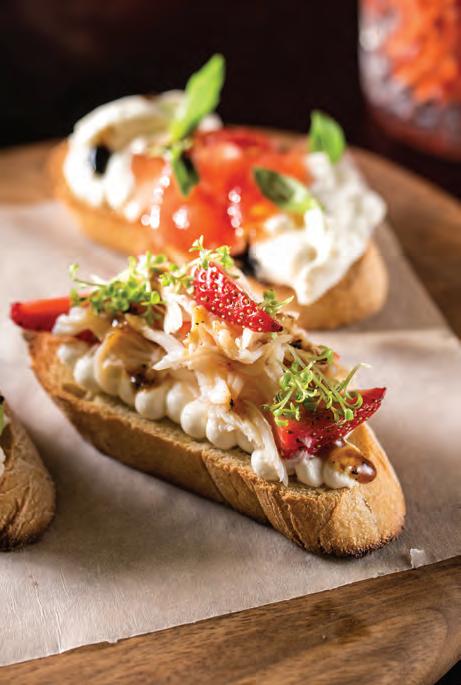

Technically, this isn’t considered pintxos, but serving a spread of cheese is one of the easiest appetizers to prepare. Much of the cheese from the Basque region, including these three, is made from sheep’s milk.
You can usually find Idiazabal and Ossau-Iraty at your local cheese shop. Serve them with crackers, jamón serrano, salty nuts, membrillo, and/or jams.
Idiazábal is a sheep’s milk cheese known for its buttery, nutty, and subtly smoky flavor. It is traditionally enjoyed with membrillo (quince paste) and walnuts.
Ossau-Iraty is a firm sheep’s milk cheese from the French Pyrénées. It is creamy and rich. Serve it with Marcona almonds to enhance its nutty flavor.
P’tit Basque cheese is produced on the French side of the Pyrénées. It is a medium-firm cheese with a strong aroma.
PS. Cheese is most flavorful at room temperature, so this can be set up early, making it one less thing to pull out of the refrigerator later.


Some simple Pintxos recipes to try as you prep for Jaialdi:
GILDA
• Green Spanish olives,
• Piparras (Basque peppers)
• Boquerón’s
Skewer all ingredients. Voila. Done. Make ahead: Place on a tray, wrap with plastic wrap, and refrigerate until guests arrive.
TUESDAY, JULY 29 & WEDNESDAY, JULY 30
BASQUE-ING ON THE BLOCK: Basque Block, 5 p.m The party starts with food, drink, and strolling musicians .
THURSDAY, JULY 31
MORE BASQUE-ING ON THE BLOCK: Basque Block, but with a noon start time!
SPORTS NIGHT: Idaho Central Arena, 7 p.m. Watch legendary competitors test their skills! Traditional farm sports like weightlifting, wood chopping, hay bale throwing, and wagon lifting will be on full display.
STREET DANCE: Basque Block, 8:30 p.m. No Basque festival is complete without dancing. Join us after Sports Night as we enjoy Basque & BasqueAmerican bands.
FRIDAY AUGUST 1
BASQUE-ING ON THE BLOCK: Basque Block, noon. Enjoy even more Basque Block festivities! We’ll keep the party going with more food, drink, and fun.
FESTARA: Idaho Central Arena, 7 p.m. Festara is a celebration of the traditional music and dance of the Basque Country, including performers from Euskal Herria & Boise’s famous Oinkari Basque Dancers.
SATURDAY, AUGUST 2
B ASQUE-ING AT EXPO IDAHO: Expo Idaho, 10 a.m. Enjoy dozens of dance groups from throughout the West as they perform indoors on two stages. Don’t forget to stock up on souvenirs — vendors will be on hand with novelties, jewelry, and clothing. Food, drink, a sports arena, and sheep wagons will also be onsite.
DANTZALDI: I daho Central Arena, 7:30 p.m. Join Basque and Basque-American bands for Dantzaldi, an all-ages concert. The fun and energetic lineup of performers, headlined by internationally-renowned Basque rock band Gatibu, will showcase both traditional and contemporary Basque music.
SUNDAY, AUGUST 3
B ASQUE-ING AT EXPO IDAHO: Expo Idaho, 11 a.m. The dancing, sports, and fun continues!
JAIALDI MASS: C athedral of St. John the Evangelist, 5 p.m. This is your chance to see the Boise Oñati Dancers perform a sacred liturgical dance on the altar. Cathedral of St. John the Evangelist, 807 N 8th St.
STREET DANCE: B asque Block, 8:30 p.m. We’ll say agur to Jaialdi 2025 with a fun-filled evening of music
• D ates, pits removed
• g oat cheese
• b acon slices
Make ahead: Cut each date lengthwise, but not in half. Stuff with goat cheese and pinch the date to close it. Slice the bacon in half and tightly wrap each date with a bacon slice. Use a toothpick to secure the bacon around the date. When ready to bake, preheat the oven to 350ºF. Bake on a parchment-lined baking tray for 15-20 minutes, flipping them halfway through to crisp both sides.
Pinxtos recipes from Paris Dining Club
For more information on the festival and festival events, visit jaialdi.com

BREAKFAST & CAFES
At 4 Roots, all of our juices, smoothies and acai bowls are all made fresh and customizable!
Dedicated to being as organic as possible, all thier meats are humanely raised and free from all nitrates and antibiotics. Juices are cold pressed to order using the freshest ingredients in unique and healthful flavor combinations.
611 Sun Valley Rd., Ketchum. 208.420.8418.
Homemade soups, salads, and a variety of great sandwiches. Serving the Valley for over 15 years and rated #1 Best Sandwich Deli. Let us prove it, and your belly will thank you.
171 N. Main St., Hailey. 208.788.2411.
Visit us at one of our spectacular locations, both featuring beautiful outdoor views, fantastic food and outstanding service. Baking locally in Sun
Valley since 1997 using only the most wholesome ingredients from sustainable sources. Fresh and homemade is how we do it!
271 Northwood Way, Ketchum. 208.726.2035.
Locally roasted, custom blended coffee brewed to perfection. Large selection of loose-leaf tea. Home-baked scones, muffins and breads. Breakfast and lunch.
208 N. River St., Hailey. 208.928.6200.
Café, bakery, and market located in the heart of Hailey. Our market offers prepared dinners to-go, housemade provisions, grocery essentials, local produce, dairy, meats, fish, beer and wine. Stop in to shop our daily “Dinner Tonight” offerings and more, or order from our weekly dinner and grocery menu online for pickup.
103 S. Main St., Hailey. 208.913.0263.
No matter how sophisticated your sweet tooth, The
Chocolate Foundry is a one-stop sweets and snack shop that will satisfy any craving. Fudge, Jelly Belly candies, licorice, soft-serve ice cream and a fun selection of novelties are a hit with kids, and grownups will also love fine chocolates and a selection of frosty floats, milkshakes and OMG-inducing sundaes. Sun Valley Resort, Sun Valley. 208.622.2147
Offering rich and mouth-watering gelato, milkshakes and empanadas. Also serving a selection of boba tea, coffee, and sweet treats and baked goods—all handmade from scratch.
126 S. River St. A-8, Hailey. 208.928.4814
The perfect place for a summer or winter outing. Enjoy one of the carefully maintained trail loops (on foot or bike in the summer, or on Nordic skis when the snow flies), before sitting down for a handcrafted lunch using the freshest seasonal ingredients. Call or check their website for special dinner events and offerings, like their Galena Full Moon Dinners. 15187 State Hwy. 75, Ketchum. 208.726.4010.

Adjacent to the Sun Valley Lodge lobby, Gretchen’s Restaurant welcomes you with a relaxing atmosphere. Enjoy breakfast, lunch or dinner and full bar service. Sun Valley Lodge, Sun Valley. 208.622.2144.
Our café serves delicious gourmet espresso drinks and fresh-baked goods from our on-site bakery. All of our coffees are fresh roasted in Hailey and our baked goods are served fresh from the oven. 219 S. Main St., Hailey. 208.788.8482.
Hangar Bread is a neighborhood bakery, specializing in long-fermented sourdough breads. They also make baguettes, bagels, ciabbatta rolls, cinnamon rolls, pizzas, cookies and sandwiches. Open Mon-Fri.
111 N. 1st Ave., Ste. #1., Hailey.
We are a bakery, floral design and gift shop offering fresh-baked sweets, custom cakes, flowers, and an
array of unique gifts.
580 4th St. East, Ketchum, 208.726.0115; 91 E. Croy St., Hailey, 208.928.4088.
Truly a great coffeehouse! Baking from scratch daily. Serving the finest Fair Trade and organic coffees. Sound like a local and order the “Dirty Hippie Burrito” and a “Bowl of Soul.”
191 4th St. W., Ketchum, 208.726.2882; 111 N. 1st Ave., Hailey, 208.788.2297.
Lunch dishes range from pumpkin spaetzle with sausage and apples to roasted chicken crepes with spinach and spicy Liptauer cheese. The café offers a full complement of artisanal coffee and hot chocolate drinks, plus house-baked European pastries. Sun Valley Resort, Sun Valley. 208.622.2235.
The Kneadery combines wholesome fresh food with a rustic Idaho atmosphere. All meals start with the freshest ingredients: locally baked organic
breads, farm-fresh, cage-free eggs, seasonal fruit and top-quality meats.
260 Leadville Ave. North, Ketchum. 208.726.9462
Maude’s is a coffee shop and a clothing store that serves traditional espresso, small eats, and is a purveyor of unique vintage contemporary clothing for women and men. 391 Walnut Ave., Ketchum. 208.726.6413.
Julie Johnson opened NourishMe in June 2010 in order to bring her love of nutrition and local food to the community in which she lived. This lightfilled store on Main Street in Ketchum features everything from seasonal produce and bulk seeds, nuts and fruits, to a wide variety of supplements, homemade sandwiches, salads and soups, wellness products, gluten-free foods and organic cosmetics.
151 Main St., Ketchum. 208.928.7604.
the summer. skewered Montadito
The paella Block are anything and dates
Callie and Maeme Rasberry believe all the senses must be involved in meal preparation; therefore, the menu is eclectic, just like the chefs, with dishes prepared with fresh local ingredients when available and their own take on comfort and ethnic food.
411 Building, 5th St., Ketchum. 208.726.0606.
Best sandwiches in town! Enjoy a perfectly packed breakfast burrito, fresh salads, the locals favorite “Bacado” (house roasted turkey, bacon, Swiss, avocado), and a wonderful lineup of homemade soups—all served with fresh ingredients and a warm chocolate chip cookie.
14 E. Croy St., Hailey. 208.788.8844.
Established in 1996, Shorty’s is a family-owned business that serves great food with exceptional customer service. Step out of the present and back into the 50s, with genuine, functioning old school jukeboxes which add an extra touch of authenticity and nostalgia to this retro American Diner experience. Open every day. Serving breakfast All Day.
126 S. River St. A-2, Hailey. 208.578.1293
Smiley Creek Lodge is located near the headwaters of the Salmon River at the top of the Sawtooth Valley, 37 miles north of Ketchum/Sun Valley. A full restaurant serves delicious homestyle food for breakfast, lunch and dinner.
16546 N. Hwy. 75, Sawtooth City (over Galena Summit). smileycreeklodge.com.
Offering a 100% plant-based menu, designed with the mission of making healthy and sustainable dining more available to everyone, Wylde Beet creates mindful eats that taste good, makes you feel great and helps us tread a little more mindfully.
400 N. Main St. Hailey. 208.913.0087
Atkinsons’ Markets, serving you and your family at our three locations in the Wood River Valley with deli sandwiches made to order, hot soups, graband-go meals and desserts, and a full deli case of freshly made main dishes and sides.
451 E. 4th St., Ketchum, 208.726.2681; 93 E. Croy St., Hailey, 208.788.2294; 757 N. Main St., Bellevue, 208.788.7788.

Serving the best subs in the Great State of Idaho! Family owned and operated since 1998, and serving up hot subs like the popular “5B” (turkey, bacon, cream cheese, mayo, lettuce, tomato) or the “Mama Sass’s Meatball” (Italian meatballs, marinara, parmesan). Homemade soups, salads, smoothies and build-yourown round out a solid menu of delicious sandwiches. 371 Washington Ave., Ketchum. 208.725.7827.
Salted Sprig specializes in fresh, thoughtful and inventive meals that satisfy the needs of all palates at your table—offering delicious and healthy glutenfree, dairy-free, vegan or nut-free options to satisfy every dietary need. The talented team of chefs and bakers at Salted Sprig can also work to create the perfect menu for all of your events small and large. Reach out to see how they can help plan your event! 220 East Ave., Ketchum. 208.957.3092
Wrapcity serves up creative wraps and salads, homemade soups, and unique quesadillas. Wrapcity also serves breakfast wraps all day with special breakfast creations on Saturdays and Sundays. 180 Main St., S., Ketchum. 208.727.6766.
For 34 years, Apple’s Bar & Grill has been a popular spot for lunch and aprés-ski—and it’s now open yearround for lunch and dinner! At the base of Baldy near Warm Springs Lodge, the restaurant is known for mouthwatering grub and gathering with good friends. 205 Picabo St., Ketchum. 208.726.7067.
A family-friendly restaurant with exceptional service and food, the Ketchum Burger Grill has been providing loyal customers with the best burgers, lobster bisque, soups and chowders in town since 1995!
102 N.Main St., Ketchum. 208.726.7733.
Grumpy’s is a favorite of locals and visitors alike. We are a little hard to find, but not hard to find out about. 860 Warm Springs Rd., Ketchum. No phone.
Enjoy the neighborhood-tavern feel of La Cab Sports Bar while dining on local favorites that include a buffalo chicken sandwich, jalapeño poppers, wings, burgers and fish and chips.
116 S Main St., Hailey. 208.788.5048.
Lefty’s has a great casual dining menu, including killer burgers served on fresh-baked bread, monster hot sandwiches, wings, salads and the house specialty, fresh-cut French fries. And the outdoor deck can’t be beat in the summer!
231 6th St. East, Ketchum. 208.726.2744.
When late afternoon hits, we swing our doors wide open for guests and locals to dig into our friendly après food and drink specials. Our full dinner menu is available evenings in the Lounge, for in-room dining, or take-out.
151 South Main St., Ketchum. 208.726.0888.
Mahoney’s offers a full bar, a terrific patio that’s just a short stroll from Bellevue’s Howard Preserve and a tasty menu featuring their famous “Juicy Lucy”
cheese-filled, grilled-onion-topped hamburger. 104 S. Main St., Bellevue. 208.788.4449.
Serving locally-raised Wagyu beef burgers, blackened Ahi sandwiches and tacos, hand-cut fries, and organic salads with a wealth of beers on tap. 502 N. Main St., Hailey. 208.788.9184
25 taps with beer, wine, cider, and kombucha on tap! Join us for the game on one of our big-screen TVs. We fill growlers, crowlers, and have kegs, bottles, and cans to go! Two locations—Hailey and Ketchum—with seasonal outdoor seating at both spots. 631 Warm Springs Rd., Ketchum. 208.726.6803; 110 N. River St., Hailey. 208.788.3213.
Roots offers a chic and cozy space to explore wine and food. The menu is geared toward lunch and happy hour snacking, with an array of cheese and charcuterie boards, snacks and small plates. 122 S.Main St., Hailey. 208.928.4376.
Scout is a celebration of good wine, good food and community. Their extensive wine list is accompanied by a selection of beer and non-alcoholic drinks, as well as thoughtful bar snacks, charcuterie boards ad housemade dishes to share. Everything is produced in-house using the best seasonal ingredients sourced locally.
360 East Ave., Ketchum. 208.928.4031.
Ketchum’s original wine bar is the place to go for lunch, an afternoon break, happy hour, après ski, or to meet up with friends. The owners are passionate about wine, carrying over 1,000 bottles of handcurated wines to satisfy wine enthusiasts of every type, and a handcrafted selection of large and small plates rounds out a delectable, seasonal menu.
360 Leadville Ave., Ketchum. 208.726.2442.
From traditional pub fare such as buffalo burgers or fish & chips to original dishes such as our flat-iron steak salad, we have something for everyone in your party. We have a full bar and feature a great selection of draft beer and fine wines.
400 Sun Valley Rd., Ketchum. 208.622.3832.
TNT / Tap Room is a craft beer and wine bar focusing on organic, sustainable and biodynamic wines, with 12 rotating taps of independent craft
beer. We’re located in a piece of Ketchum history in the dynamite shed.
271 Sun Valley Road E., Ketchum.
Enjoy a wide selection of cocktails and craft beer on tap, as well as a crowd-pleasing menu of classic American favorites: hearty cheeseburgers, chicken wings, pizza and family-style salads. Sun Valley Village, Sun Valley. 208.622.2143.
The ever-changing menu brings you the best provisions from across the Northwest in our comfortable neighborhood pub setting. The best summer deck in town with fire pits and rocking chairs for comfort and conversation.
280 N. Main St., Ketchum. 208.726.2739.
A historic venue and sports bar serving upscale pub fare that offers a lively and casual atmosphere for sports enthusiasts. Located in the heart of downtown Ketchum, Whiskey’s boasts a wide selection of brews including local craft brews, as well as a full bar with a variety of spirits and cocktails.
251 N. Main St., Ketchum. 208.620.5496.
Despo’s is committed to authentic, delicious Mexican dishes that respect your desire for a healthy meal without compromising flavor. 211 4th St. E., Ketchum. 208.726.3068.
Authentic Peruvian cuisine served in a familyfriendly atmosphere. La vida mas feliz! 200 S. Main St., Hailey. 208.928.7929.
This cheerful, laid-back burrito joint serves delicious fish tacos and offers a make-your-own burrito, with a choice of 27 fillings.
460 Sun Valley Rd., Ketchum. 208.928.6955; 121 N. Main St., Hailey. 208.788.7217.
Only one way to put it…best authentic Mexican food in town. The town’s hidden gem that is truly a favorite.
116 S. Main St., Hailey. 208.788.1255; 160 W. 5th St., Ketchum. 208.725.5001; 745 N. Main St., Bellevue. 208.928.7550.

Enjoy true Mexican food in downtown Hailey. Pollo rancherito, carne asada and “Sandy” tacos are house specialties not to be missed.
14 W. Croy St., Hailey. 208.578.1700.
Serva Peruvian Cuisine is all about simple clean ingredients and flavor using the freshest quality ingredients seasonally. Step inside and experience a fusion of Peruvian and American food. Traditional recipes from Rodolfo Serva’s family appear alongside the unique creations of Chef Edgar for an upscale Peruvian dining experience. Now in two locations!
103 S. Main St., Hailey. 208.928.6202 .
Ketchum’s newest gastronomic addition, with its upscale pizzeria and wine bar. Enoteca has a plethora of small plates to choose from.
300 N. Main St., Ketchum. 208.928.6280.
Fiamma, or “little flame” in Italian, is a live-fire, Italianinspired restaurant in Sun Valley, Idaho, created by acclaimed chefs Britt Rescigno and Kinsey LeodlerRescigno. At Fiamma, we believe in the power of simplicity elevated to its finest. Focusing on local and seasonal ingredients, we celebrate the art of open flame cooking and pasta fatto a mano, ensuring every dish is as fresh and flavorful as possible. Beyond the kitchen, our passion for creating an exceptional dining experience extends into everything we do—from curating a robust wine list that perfectly complements our dishes to providing warm, attentive service that makes every guest feel like family.
211 Leadville Ave., Ketchum. 208.913.0118
Since 2013, we have been offering contemporary Italian cuisine prepared to the highest standards. Our premium wine selection includes more than 150 wines to pair with any course.
580 Washington St., Ketchum. 208.726.6961.
Our fresh, handcrafted food is what brings people in, and our service is what keeps them coming back for more. We pride ourselves on creating a “nourishing and memorable neighborhood experience that people love!”
200 Sun Valley Rd., Ketchum. 208.622.5625.
Outstanding Pizza with great mountain vibes. Local family-owned restaurant focusing on crazy good pizza, salads, and appetizers. Dedicated to using the best ingredients from our true Italian San Marzano tomatoes, housemade sausage, freshest produce available, our touch is in everything we offer. Great beer and wine selection to fill every need. Stop in and see if you are Tall enough for a free pie!
121 N. Main St., Hailey 208.913.0523.
Serving New York-style, hand-tossed pizzas topped with whole-milk mozzarella, and baked to perfection in our stone deck ovens. Large selection of local and regional bottled and draft beer.
460 Sun Valley Rd., Ketchum, 208.726.0737; and 411 N. Main St., Hailey 208.788.8688.
Located in the on the northwest corner of Sun Valley Road and Walnut Ave., “The Christy,” as it is known to locals, offers world-class French dining in the heart of downtown Ketchum. This beloved and historic restaurant and Olympic Bar—a favorite haunt of Ernest Hemingway—has been a landmark Ketchum institution for decades, combining a love of skiing and ski racing culture with a passion for cooking. An experienced and professional staff is always ready to greet guests, share a story or two about skiing or summer in Sun Valley, and make your dining experience unforgettable.
303 Walnut Ave., Ketchum. 208.726.3388
Dang’s offers a wide selection of popular dishes ranging from sushi, green papaya salad, pad thai, and their famous green curry with chicken! Highly recommended as an affordable, flavorful and fun experience in Hailey!
310 N. Main St., Hailey. 208.928.7111.
Informal Chinese restaurant dishing up familiar fare, including vegetarian options, since 1987. 515 East Ave., Hailey. 208.726.3591
Enjoy authentic Thai cuisine in a log cabin with
views of Bald Mountain. With specials such as tender slow cooked Lamb Shank served in a Massaman curry, Shrimp in a Ceramic Pot served on top clear vermicelli noodles and Fresh Rolls with housemade peanut sauce, Ida Thai is your place to celebrate a special occasion, relax after a day on the mountain, or order online.
310 S. Main St., Ketchum. 208.726-7155
Hailey’s newest sushi-seafood-steak and martini bar. Serving Asian fusion, sushi, steak and seafood selections. A full bar with handcrafted cocktails and lounge for drinks you can’t put down.
416 N. Main St., Hailey.
“The Ramen Place,” Ramen Cowboy is a local’s take on traditional Japenese noodle soup, serving fromscratch ramen using all locally sourced ingredients, handmade noodles and their 18-hour authentic Tonkotsu broth!
640 N. Main St., Ketchum. 208.309.3493.
Serving “ethnic street foods,” inspired by the flavors and foods in locales such as Thailand, Vietnam, China, and Indonesia. .
460 N. Washington Ave., Ketchum. 208.726.8481.
Sushi on Second is the Valley’s oldest sushi restaurant. But don’t let age fool you. A talented crew of Sushi Chefs are in the center and delight in creating dishes that are as appetizing to look at as they are to eat.
260 Second St., Ketchum. 208.726.5181.
Japanese Steak House serving fresh Hibachi-style Chicken, Steak, Shrimp, Scallop and Salmon grilled fresh to order with mixed vegetables, and fresh rice and fried rice. Sushi that is mouth watering with fried and fresh sushi rolls, along with Nigiri and Sashimi.
745 N. Main St., Suite B, Belleue. 208.751.1497.
This cozy place was built in 1932 as a church and then later on was an architect’s office, daycare, butcher shop, BBQ restaurant and bakery. Vita and Burke Smith fell in love with this cute building and decided to give it a new life.
271 7th St. East, Ketchum. 208.720.3260.
Bellevue’s Cutthroat Club highlights the best Wood River Valley and Idaho has to offer by partnering with area farmers and producers.
200 S. Main St., Bellevue.. 208.913.0285.
All new and inviting, this legendary lounge serves up cocktails, imported beer and an extensive wine list. Now, you can also duck in for a quick bite from our lounge menu. Sun Valley Lodge. 208.622.2145.
The environment at the Knob Hill Inn is casual and comfortable, yet sophisticated, with distinctively Northwest cuisine, and a variety of American and European classics. A top local favorite! 960 N. Main St., Ketchum. 208.726.8004.
For over 30 years (since 1991), Ketchum Grill has brought your dining experience to the highest gastronomical level, and the best Idaho has to offer. 520 East Ave., Ketchum. 208.726.4660.
Perched midway up Bald Mountain on the River Run side, the Roundhouse is a culinary destination not to be missed. Serviced by the Roundhouse Gondola, the restaurant offers spectacular views of the Valley. Bald Mountain, Ketchum. 208.622.2012.
Among the most popular places in Sun Valley to eat, drink and relax, the wraparound terrace at Sun Valley Club offers stunning views of Bald Mountain, Dollar Mountain and the golf course (summer) or Nordic trails (winter). The Sun Valley Club brings exciting, contemporary dishes that are focused on local ingredients.
1 Trail Creek Rd., Sun Valley. 208.622.2919.
Offering an intimate ambiance with an alwaysevolving menu. The relaxed atmosphere is a place to enjoy good friends, fine wine, and delicious meals. 520 Washington Ave., Ketchum. 208.726.3663.
The Pioneer Saloon, renowned for perfectly aged, tender and flavorful beef, is typical of an earlier Idaho where ore wagons rattled down Main Street and business was done with a handshake and a drink. Natural woods, mounted game, and period firearms help recreate an authentic saloon atmosphere. 320 N. Main St., Ketchum. 208.726.3139.
Sun Valley’s original restaurant, The Ram has been warming and welcoming diners since 1937. Travel back in time with the nightly “Heritage Menu”—a series of historic dishes such as pork tenderloin schnitzel, Hungarian goulash, and the famous Ram fondue. Located at the Sun Valley Inn. 208.622.2225.
Always busy with a great mix of locals and visitors, The Sawtooth Club offers a unique blend of American steakhouse classics, fresh seafood, wild game, unique pasta dishes and much more. Many entrées are cooked over the live, mesquite-wood fire, and all are prepared with a singular creative flair. The award-winning wine list offers a diverse selection of reasonably priced wines to compliment any of the delicious menu offerings.
231 Main St S., Ketchum, ID 208.726.5233
TUNDRA Restaurant in Hailey is a hip place serving creative, freshly made food, beer, wine and bubbles. We strive to provide the best service, best food and an unique and fun experience! Reservations can be made online at tundrahailey.com.
516 N. Main St., Hailey. 208.928.4121.
Sun Valley’s destination for romantic dining in a rustic, Western atmosphere. Originally built in 1937, the magic of this mountain style log-cabin-turnedrestaurant lies in the rustic charm, hearty menu, sweeping views and the sleigh ride through a winter wonderland to get there. Reservations required.
2 Miles North of Sun Valley Resort, Sun Valley. 208.622.2800.
A favorite of the locals, chef Rodrigo Herrera is tuned into the best of the season’s offerings. With a lovely ambiance, both inside and seasonally outside, Vintage offers a dining experience like one would have in France: leisurely, lively, and without pretension.
231 Leadville Ave.,Ketchum. 208.726.9595.
Award-winning restaurant, Elevation 486 is perched 486 vertical feet above
the beautiful Snake River. Voted Idaho’s “Best Fine Dining Restaurant” in 2022, Elevation 486 is a charming and modern bistro serving up eclectic new-American cuisine with global influences. The dining area and patio terrace offer stunning views of the Snake River Canyon, the Perrine Bridge and the surrounding Magic Valley region.
195 River Vista Place, Twin Falls. 208.737.0486.
This cheerful, laid-back burrito joint serves delicious fish tacos and offers a make-your-own burrito, with a choice of 27 fillings.
2794 S. Eagle Rd., Suite 600, Eagle. 208.629.8553; 616 N. Third St., McCall. 208.634.5500. 1520 Fillmore St., Twin Falls. 208.733.5194
Milner’s Gate is an Idaho craft brewery and restaurant located in a historic brick building in the heart of Twin Falls. The carefully chosen menu features “creative interpretations of classic American bistro and pub fare” along with a full bar featuring craft cocktails.
205 Shoshone St. N., Twin Falls. 208.293.8250.


SOMETIMES ALL YOU NEED IS 15 SECONDS OF COURAGE…
Emily Beisel is a professional barrel racer with multiple Wrangler National Finals Rodeo qualifications and a successful career on the Pro Rodeo circuit. Emily has ridden and won with several horses throughout her career including Chewy, Chongo, Liza, Pipewrench and Trigger. In this photo, Emily rides Chewy as she “chases the cans.”



